- This topic has 14 replies, 11 voices, and was last updated 4 years ago by hamishthecat .
- New Bike : Trek Slash 8 v Nukeproof mega 29 Comp v Vitus Sommet 29
Possibly time to change up to a 29 er from my Trek remedy 8 . The remedy is a great bike and I feel confident of trails that I previously wouldnt have entertained. Having used my sons commencal meta AM 29 I feel big wheels are the next option for me. So the options are as follows Trek Slash 8 , Nukeproof Mega or Vitus. As I see it the Trek will be quality like my remedy , the Nukeproof seems a great bike but the one I can afford is fairly dull looking and the Vitus has a phenomenal spec. I normally ride the Tweed valley and usually Inners or the Golfie. Hopeing to put down about £900 and use interest free to pay for the rest . Any other options.?
Pretty much all of the bikes you have mentioned are on my potential “next” list (including the Commencal).
Triton are doing the 2020 Slash 8 frame only for £1399 at the moment and I was leaning towards that. In reality though, I’ll probably end up on something with shorter travel. Another one I was looking at was the Ibis Ripmo AF.
My missus has two Treks (Pro Caliber and Top Fuel), I think they are really good quality frames and she loves the ride and fit of them.
If it was my money, I’d probably go for the Slash frame and custom build.
Had few Remedys in the past never got on with my 27.5″ one in 2017 sold it last year got a Slash 8 great bike cant tell you about the other ones handles like a dream.
Please enable JavaScript

Slash and mega ride very differently.
The trek is lively and even twitchy sometimes, the mega is planted and more of a bulldozer.
I’d probably take a punt on the Vitus, out of those three.
The 2020 Nukeproof 29ers are much better than those from previous years; geometry and suspension are totally sorted. Megas tend to ride a little better overall than the Vitus IMO.
The 2020 Nukeproof 29ers are much better than those from previous years; geometry and suspension are totally sorted
How would you describe the previous years’ suspension vs 2020, out of interest?
I have my own ideas (having owned one), but not everyone agrees with me. Geometry was awesome though, maybe just needed slight tweaks to head & seat angles.
Might be worth trying a Bird AM9 if looking at further options.
The 2020 Nukeproof 29ers are much better than those from previous years; geometry and suspension are totally sorted How would you describe the previous years’ suspension vs 2020, out of interest? I have my own ideas (having owned one), but not everyone agrees with me. Geometry was awesome though, maybe just needed slight tweaks to head & seat angles.
There’s more mid stroke support, a bit more travel and the head angle is slacker and reach is longer. The old one never felt as good as the 27.5 Mega at the rear, but now it’s much better.
That sounds sensible. I agree it lacked support and would hang up on edges – giving a lot of feedback through the feet.
Pedaled like crap too IMO.
My friend is quite happy with his though and rides it pretty hard, so maybe it just wasn’t the bike for me.
I went from a remedy to slash 8. You can get some good deals on 2019 models if you look around. Loved the remedy and wanted the same fit, ride and feel with bigger wheels and the slash has been perfect. You can also “mullet” the slash in the high setting – like two bikes in one!
The Slash is a beast, but, it’s a little short of dropper post space if you want to fit a really long post. (and it’s not really all that long a bike so I think most folks would want to err up a size which compounds that)
The old Mega was really excellent and the new one seems to just build on that. Haven’t ridden it though.
Haven’t ridden the Vituses, they’d definitely be contenders if I wanted a new bike tomorrow.
The Slash is indeed a beast of a bike. I’m very surprised by the “twitchy” comment above as I’d say it’s one of the most stable bikes I’ve ridden. It doesn’t like going slow though. Definitely a bike that rewards commitment.
I think from Trek’s stable I’d probably choose a Fuel EX for the Tweed Valley. Admittedly I haven’t ridden the current model, only the one just gone. That said, my Slash does just fine in Vegan Valley, so you probably can’t go too far wrong.
I’d recommend a Bird but I don’t want you getting any faster.
It’s never long before someone suggests the Bird AM9 on here is it?
The topic ‘New Bike : Trek Slash 8 v Nukeproof mega 29 Comp v Vitus Sommet 29’ is closed to new replies.
- Help Center
- Chat with a Ride Guide
- 1-866-401-9636
- Retail Store
- Bike Services

Reset Password
We will send you an email to reset your password.
Don't have an account? Create an account
Create Account
Already have an account? Sign In
- Favorite your products & save them to your account
- Save a search & get notified when new products drop
- Be first to know about the latest events & promotions
Bike Finder
Results have arrived, dominate descents: the 10 best enduro bikes.
With progressive geometry, big travel, and efficient suspension, enduro mountain bikes are the ultimate tool for downhillers who like to pedal. These are our top picks for racers and shredders.

Written by: Bruce Lin
Published on: Oct 26, 2022
Posted in: Bikes
Over the last decade, enduro has grown from a grassroots scene in the French Alps to a worldwide phenomenon. Enduro racing is now one of mountain biking’s most popular racing formats because it focuses on the part of the trail that (most) riders love: the descents.
Enduro has also changed the way modern bikes are designed. To survive the gnarliest trails, enduro bikes have become longer and slacker, with more suspension travel and 29" wheels. These features give any rider the confidence to send it downhill at warp speeds. At the same time, these bikes need to be efficient enough to pedal back uphill and handle all-day epics. If you’re looking for a race-proven enduro bike that can tackle everything from weekly trail rides to bike park trips to the Enduro World Series, these are my top contenders.
[button] Shop all mountain bikes [/button]
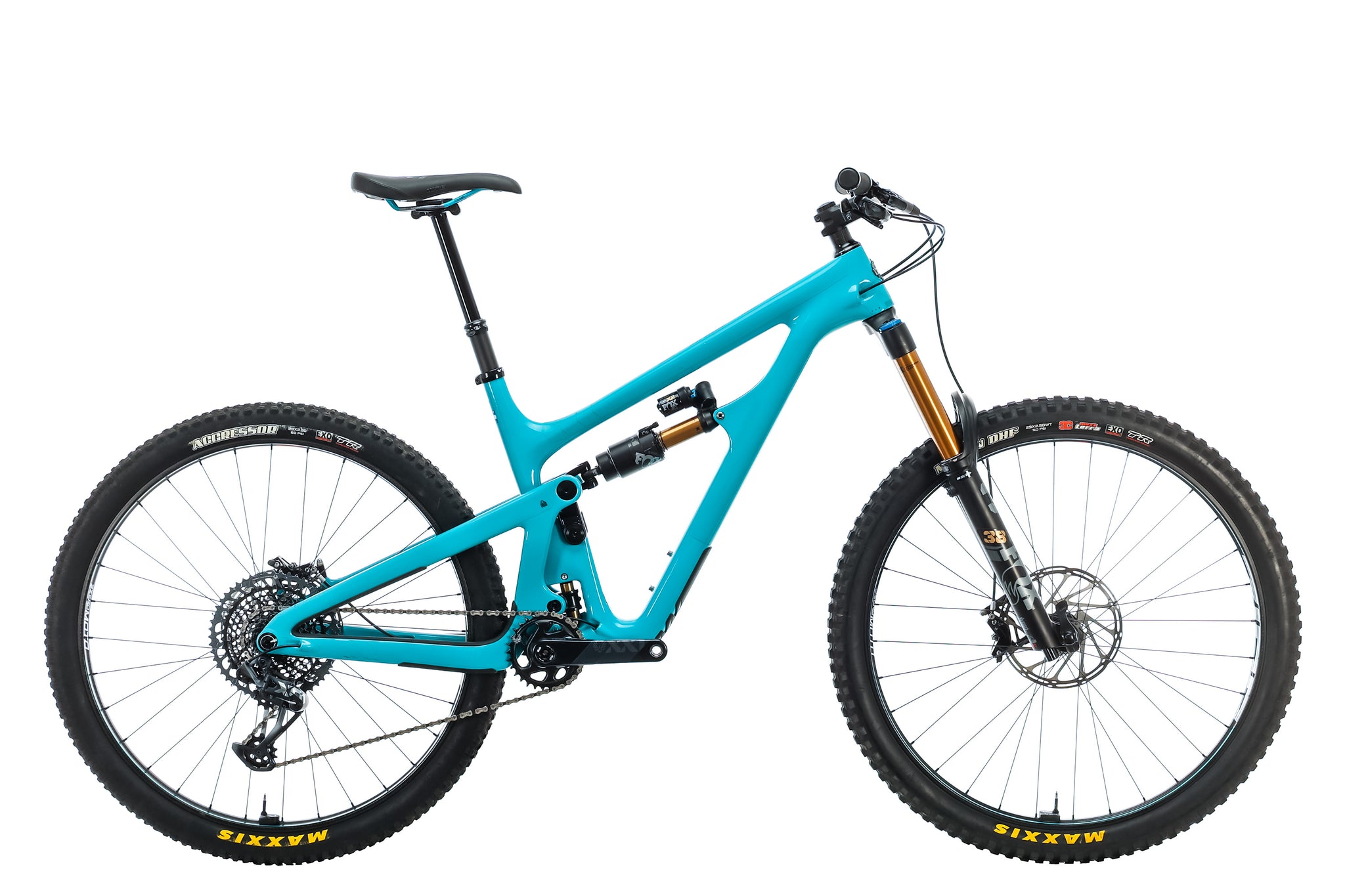
[product-block handle="2022-yeti-sb150-t2-l"/]
Front travel : 170mm Rear travel : 150mm Wheel size : 29" Frame material : Carbon Head angle : 64.5° Reach : 460.2/480.2mm
Yeti has been a top dog in the enduro racing for years and won multiple championships with its Switch Infinity suspension system. Switch Infinity provides a solid pedaling platform, but it allows the main suspension pivot to switch directions as the bike moves through its travel so there’s still a plush, bottomless feel. The current SB150 is a favorite here in the Colorado enduro scene and it has already scored several EWS wins under two-time Enduro World Series champion Richie Rude.
[button] SHOP YETI MTB [/button]
Specialized Enduro

[product-block handle="2020-specialized-enduro-elite-m-3"/]
Front travel : 170mm Rear travel : 170mm Wheel size : 29" Frame material : Carbon Head angle : 69.3° (low) Reach : 464/487mm (S3/S4)
The Specialized Enduro actually predates modern enduro racing, but I like to think it’s named after the discipline it excels in most. Completely redesigned in 2020, it takes suspension and frame design cues from the World Cup-winning Demo downhill bike, so you know it’s fast. It pushes the limits of travel and geometry with 170mm of travel all around and an ultra-slack 63.9° head angle, essentially creating a mini downhill bike that can be pedaled uphill.
[button] SHOP SPECIALIZED MTB [/button]
[newsletter]
Trek Slash

[product-block handle="2021-trek-slash-7-m"/]
Front travel : 170mm Rear travel : 160mm Wheel size : 29" Frame material : Carbon or Alloy Head angle : 64.1° (low) Reach : 456/474mm (M/ML)
The Slash keeps things under control with Trek’s patented ABP (Active Braking Pivot) suspension system. With a pivot at the rear axle, ABP is able to separate braking forces from suspension forces so the suspension always stays active, even when the rear brake is engaged. This helps maintain traction on steep and loose descents, giving riders the confidence to brake later and go faster.
[button] SHOP TREK MTB [/button]
Santa Cruz Megatower

[product-block handle="2021-santa-cruz-hightower-c-l"/]
Front travel : 170mm Rear travel : 165mm Wheel size : 29" Frame material : Carbon Head angle : 63.5° (low) Reach : 452/472mm (M/L)
Santa Cruz was one of the first to discover the descending power of big 29” wheels with the original Hightower trail bike. Its factory enduro team even opted for the Hightower over the longer-travel Nomad. To satisfy its racers, Santa Cruz began boosting the travel numbers until the Hightower evolved into the 160mm-travel Megatower. It balanced efficiency and plushness with Santa Cruz’s proven low-mount VPP suspension system. In 2022, it was revamped as the Megatower V2 with 5mm more rear travel and a slacker head angle.
[button] SHOP SANTA CRUZ MTB [/button]
Canyon Strive CF
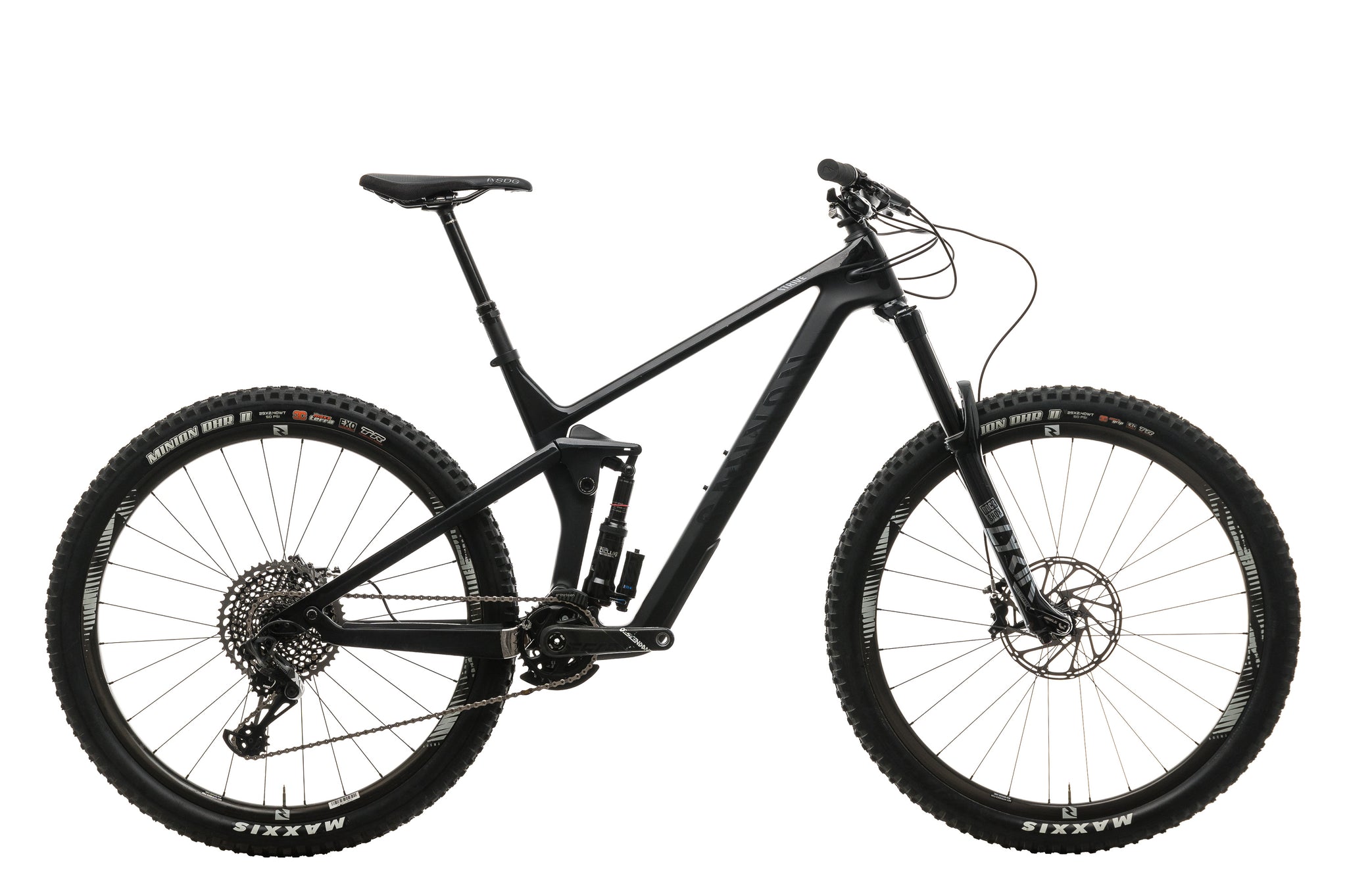
[product-block handle="2020-canyon-strive-cf-7-0-m-1"/]
Front travel : 160mm (170mm in 2021) Rear travel : 150mm Wheel size : 29" Frame material : Carbon Head angle : 66° Reach : 440/470mm (M/L)
The Canyon Strive CF is the bike of 2021 Enduro World Series champion, Jack Moir. He rode it to five race wins in 2021, beating Richie Rude and his Yeti SB150. It's big party piece is Shapeshifter, a remote geometry/suspension adjuster that reduces rear travel and steepens the head and seat angles for improved climbing performance. For 2022, the Spectral has been completely revamped into the Strive CFR which now has 160mm of travel and a slacker 6 3 ° head angle to be more in line with its competitors (specs above are for the pre-2022 Strive).
[button] SHOP CANYON MTB [/button]
Nukeproof Mega 290

[product-block handle="2019-nukeproof-mega-290-rs-c-xl"/]
Front travel : 170mm Rear travel : 160mm Wheel size : 29" Frame material : Carbon or Alloy Head angle : 64° Reach : 455/475mm (M/L)
The Nukeproof Mega is the bike ridden by downhill legend Sam Hill to three consecutive Enduro World Series Championships from 2017-2019. For two years, Hill rode and won on the 27.5" Mega 270, but the 29er version of the Mega was released in 2019, and it became the first 29er to win an EWS title. Though the longer travel Nukeproof Giga has since been released, it doesn't have the Mega's resume of race wins (yet). The 160mm Mega is still a formidable downhill weapon and likely more practical for most riders on their home trails.
[button] SHOP NUKEPROOF MTB [/button]
Orbea Rallon

[product-block handle="2021-rallon-m-team-xl-blu-red"/]
Front travel : 170mm Rear travel : 160mm Wheel size : 29" front, 29"/27.5" rear Frame material : Carbon Head angle : 64° (low) Reach : 440/470mm (M/L)
The Rallon has been a long-time favorite of bike reviewers and it’s the bike of choice for the PinkBike Academy. The beautiful asymmetrical frame maximizes stiffness and reduces weight, while the progressive rear suspension is happy to play with coil and air shocks . If you seek more maneuverability, the flip-chip allows you to easily run a 27.5" rear wheel for a mullet set-up. With riders like race winner and championship contender Martin Maes on the Rallon, you can expect some big race results soon.
[button] SHOP ORBEA MTB [/button]
Cannondale Jekyll

[product-block handle="2021-cannondale-jekyll-29-xx1-m"/]
Front travel : 170mm Rear travel : 165mm Wheel size : 29" Frame material : Carbon Head angle : 64° Reach : 450/475mm (M/L)
The Jekyll made headlines when it was completely redesigned for 2022 with high-pivot suspension. The high-pivot design provides a more rearward axle path, helping the suspension absorb impacts, while an idler pulley compensates for chain growth so there’s no nasty pedal kickback. The result is an ultra-plush-feeling rear end that easily soaks up bumps and keeps the bike in control through the gnarliest terrain. Plus, the Jekyll's enduro pedigree runs deep, having carried Jerome Clementz to many an EWS victory in the early days of that series.
[button] SHOP CANNONDALE MTB [/button]

[product-block handle="2020-ibis-ripmo-l-2"/]
Front travel : 160mm Rear travel : 147mm Wheel size : 29" Frame material : Carbon or Alloy (Ripmo AF) Head angle : 64.9° Reach : 460/475mm (M/L)
Under fast riders like Robin Wallner and Bex Baraona (now on Yeti), the Ibis Ripmo has been a consistent podium threat. It uses a tried and true DW-Link suspension system, which provides excellent pedaling efficiency for long transfers and all-day rides. Of the bikes listed here, it’s more conservative in terms of travel (147mm), making it perfect for riders seeking a sportier ride or who value the ability to climb quickly.
Rocky Mountain Altitude

Front travel : 170mm Rear travel : 160mm Wheel size : 29" or 27.5" Frame material : Carbon or Alloy Head angle : 64.4° (POS 1) Reach : 449/474mm (M/L)
Rocky Mountain has been at the sharp end of enduro racing for years and it's big-hitting Altitude is now the reigning Enduro World Series champion thanks to Canadian ripper, Jesse Melamed. The Altitude uses Rocky Mountain’s Smoothlink suspension with the RIDE-9 flip-chip and a flippable rear dropout. This provides nine geometry settings and two chain stay lengths so geometry geeks can customize the bike to match their trails or riding style. It's also the only bike on this list with a dedicated 27.5" wheel option for small and medium sizes.
[button] SHOP ROCKY MOUNTAIN MTB [/button]
Final thoughts and honorable mentions
This list is limited to 10, so of course, it misses out on a lot of great bikes. The great thing is that there are so many amazing enduro bikes on the market, we're spoiled for choice. Here's my short list of honorable mentions that I think deserve serious consideration:
- Commencal Meta AM 29 - One of the most successful bikes in the EWS, winning multiple championships with Cécile Ravanel. DTC.
- Specialized Stumpjumper EVO - A shorter-travel alternative to the Enduro. Super adjustable. Mullet compatible. Comes in an alloy version.
- REEB Sqweeb - Built in a barn ! Aluminum frames. Made in the U.S.A. Customizable geometry and powdercoating.
- Giant Reign 29 - Made by the world's biggest bike manufacturer and the king of value for performance.
- Guerrilla Gravity Gnarvana - Modular frame. Made in the U.S.A. with Revved Carbon.
All of these bikes are extremely fast and capable, and I’d be stoked to ride any of them. Currently, I'm riding a 150mm REEB Sqweeb, but recently, I've developed a hunger for more travel. Because of that, the 170mm of travel on the latest Specialized Enduro is looking really good to me. In fact, I chose the Enduro for my previous Ultimate Enduro Bike Dream Build .
Which would you choose? Or do you think there’s some other enduro bike (Pivot Firebird? Transition Spire? Kona Process?) that belongs on this list instead? Let me know in the comments!

Bikes, Features, Fun, Latest, Road Jun 14, 2024
Specialized Tarmac SL7 Marbled Lagoon: Beautiful? Or Too Much?

Bikes, Features, Fun, Latest, Road Jun 7, 2024
This Custom Mosaic RT-1 Is a Beautiful Mystery
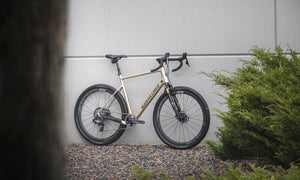
Bikes, Features, Gravel, Latest May 6, 2024
This Santa Cruz Stigmata + Fox 32 Taper-Cast Was Too Cool To Sell (As Is)
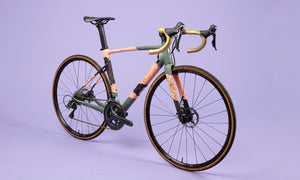
Bikes, Features, Latest, Road Apr 26, 2024
I Will Never Stop Loving the 1st Gen Specialized Allez Sprint
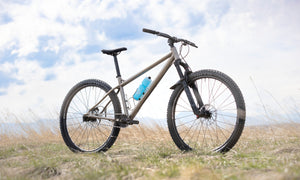
Bikes, Features, Latest Apr 15, 2024
The Sanitas Tap Root: Win A Singlespeed Ti Hardtail With Downcountry Geo
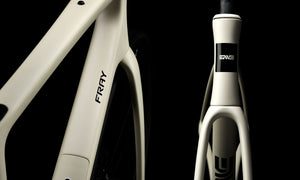
Bikes, Gravel, Latest, Road Apr 11, 2024
ENVE Fray: The Definitive All-Road Bike? The Coolest for Sure.
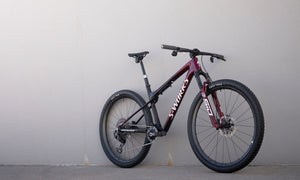
Bikes, Latest, MTB Apr 5, 2024
This Specialized S-Works Epic World Cup Is My Perfect Leadville Bike
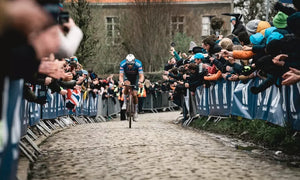
Bikes, Fun, Latest, Road Mar 29, 2024
What's the Best Bike at Tour of Flanders 2024?
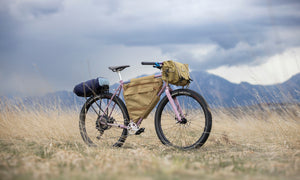
Bikes, Features, Gravel, Latest Mar 28, 2024
This Crust Bombora Shows Us a Different Side of Cycling
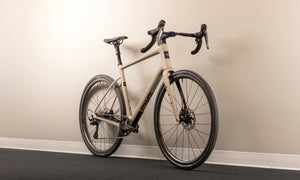
Bikes, Features, Gravel, Latest, Tech Mar 22, 2024
This ENVE MOG x Classified Bike Might Represent the Future of 1x
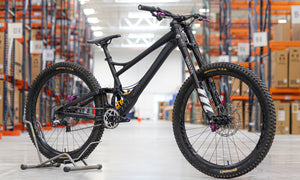
Bikes, Features, Latest, MTB Mar 15, 2024
Banshee Legend DH Bike Review: A Privateer’s Dream Bike
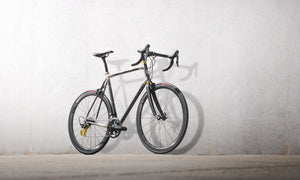
Bikes, Features, Latest Mar 6, 2024
The Seven 622 SLX: How Carbon/Ti Is a Bit Retro, but Also Maybe Futuristic
New arrivals.

Certified Pre-Owned
Specialized Diverge Carbon Gravel Bike - 2022, 56cm

Trek Domane SLR 9 Disc Road Bike - 2019, 54cm

Moots Routt 45 Gravel Bike - 60cm

Trek Checkpoint SL 5 Gravel Bike - 2020, 61cm

Moots Routt 45 Gravel Bike - 56cm

Salsa Cycles Beargrease Fat Bike - 2022, Large

Trek Speed Concept Triathlon Bike - 2017, X-Large

Wilde Bikes Earth Ship Steel Rival AXS Gravel Bike - 2023, XX-Large

Ibis Ripmo AF Deore Mountain Bike - 2023, Large

Specialized Diverge Expert Carbon Gravel Bike - 2018, 56cm

Santa Cruz Bronson Carbon MX Mountain Bike - 2023, X-Large

Trek Madone SLR 9 Disc Project One ICON Road Bike - 2019, 54cm
- MAGAZINE OFFERS
- BIKE INSURANCE
- Best Products
- Maintenance
- Accessories
- Long-Term Reviews
- BikeRadar Podcast
- First Look Friday
- Bike of the Week
- Tech Features
- Routes and Rides
- Bike Galleries
- BikeRadar Bargains
- Buyer's Guides
- Fitness & Training
- Sizing & Fit
- Mountain Biking UK
- Cycling Plus
- Bike of the Year 2024
The best enduro mountain bikes of 2024 | 25 top-rated enduro MTBs
The big-hitting rigs you need to look out for in 2024
Ian Linton / Immediate Media
Looking for the best enduro bike? You’re in the right place; here we list the best enduro bikes on the market in 2024, as tested by our experienced, independent test team.
Enduro racing is currently at the forefront of mountain biking, with the demands of epic days on the pedals competing with long, technical descents that challenge downhill courses for their difficulty.
As such, the latest breed of enduro bikes have to be able to spin up hills as well as throw themselves down steep chutes, through rock gardens and over huge gaps.
Not all enduro bikes are born the same, though, and some will be better suited to long days in the mountains, with pedalling characteristics to boot, while others are basically downhill bikes in disguise – flat-out down the gnarliest of tracks, but possibly more of a slog back up the other side.
We’ve put together a buyer's guide at the bottom of this article to help you choose the best enduro bike for you.
The best enduro mountain bikes of 2024, as rated by our expert testers
Norco shore 2.
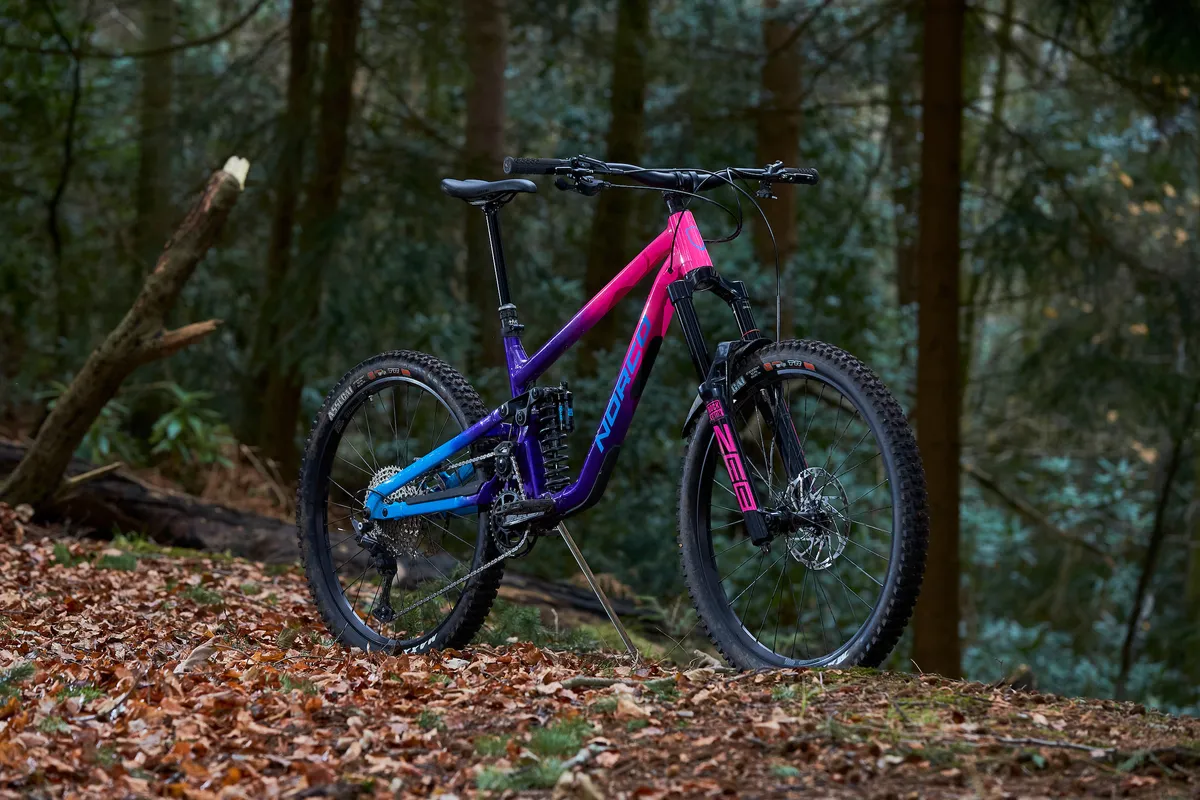
- Price: £3,399/$5,199 as tested
- Pros: Dialled geometry; fast handling
- Cons: Weight might be a problem for some
Although its weight may be an issue for some, the Shore is one of the best-riding, confidence-inspiring, long-travel mountain bikes on the market and all for a reasonable asking price. Offering 180mm of rear-wheel travel, the Shore is a high-pivot enduro mountain bike with a Horst-link suspension design.
Built around an aluminium frame, the Shore features an excellent and progressive geometry with a generous 480mm reach, 63-degree head tube angle and 445mm chainstays on our size large.
Norco is one of the only brands to vary chainstay lengths across its range. Considering its weight, the Shore climbs well despite the MaxxGrip compound on the Maxxis DoubleDown casing tyres, which we swapped to a MaxxTerra.
The Shore is a very comfortable bike to ride over rough terrain and is also incredibly predictable. Thanks to the ideal geometry, you can weight the front wheel confidently and it feels super-composed, both at speed and in technical sections.
- Read our full Norco Shore 2 review
Canyon Strive CFR
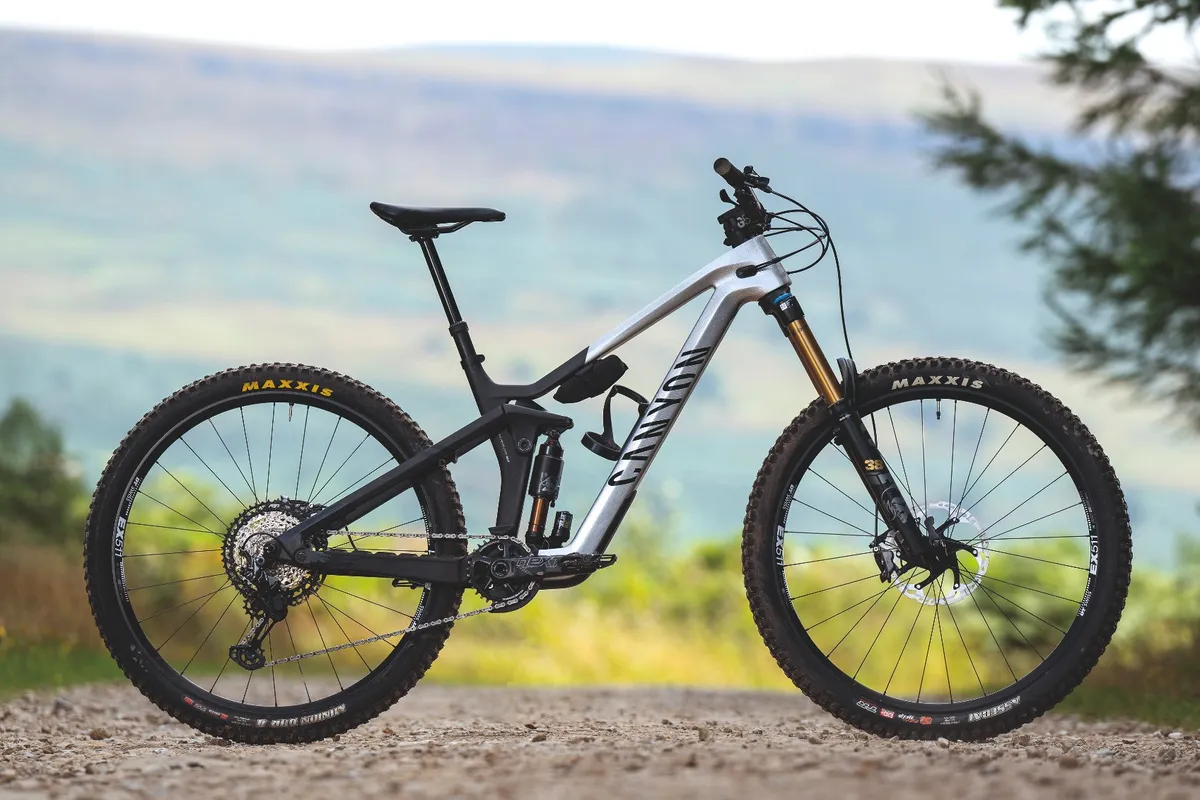
- Price: £5,999/$7,299/€6,299 as tested
- Pros: Chassis provides stability at high speeds; race bike feel with high-performance potential
- Cons: Suspension can feel harsh at low speeds
The Strive CFR is Canyon's race bike offering 170mm of travel and 29in wheels.
The Strive is well-specced compared to its contemporaries, with a Shimano XTR drivetrain and brakes paired with a Race Face Next RS crankset.
The Shapeshifter system allows for better on-the-fly adjustment to the bike's geometry and presents a marked improvement on the previous model.
- Read our full Canyon Strive CFR review
Cotic RocketMAX Gen4 Mullet Silver
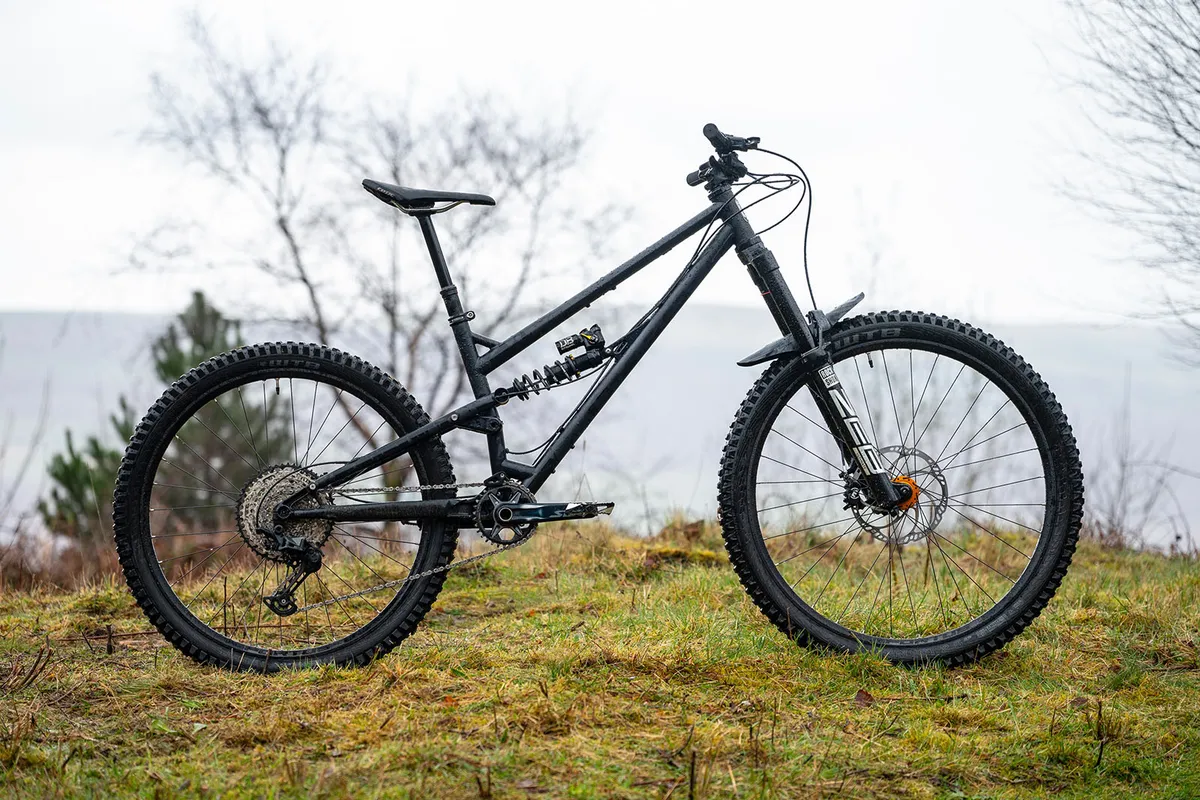
- Price: £4,949 as tested
- Pros: Stable and confident through turns; carries speed well
- Cons: Not as forgiving as other bikes
Cotic's RocketMAX shines when pointed downhill, carrying speed well, and is able to rail corners with ease. The bike can be run as a 29in or in as a mullet, which we tested.
The bike's composure is hard to fault, although we did find it to be a little noisy and less smooth than others, with chain slap being a distraction on bumpy trails.
Cotic offers a host of customisable spec, with our test bike featuring a RockShox ZEB Ultimate fork and a Cane Creek Double Barrel Kitsuma coil shock.
- Read our full Cotic RocketMAX Gen4 Mullet Silver review
Devinci Spartan HP GX
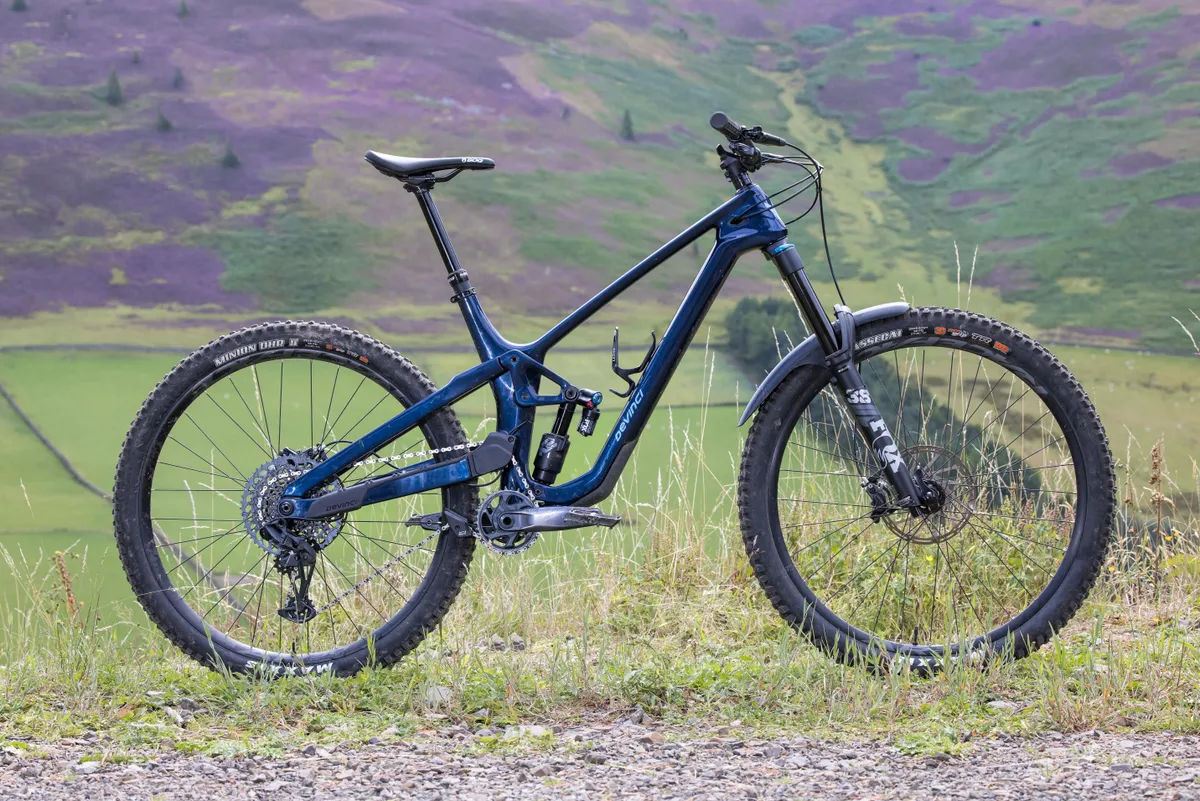
- Price: $6,149/€6,249 as tested
- Pros: Impressive suspension; really well-specced for the asking price
- Cons: Steeper head tube angle would aid in climbing
The Spartan HP is a bump-munching, race-ready, high-pivot enduro machine and the entry model we tested has a solid spec for the price. The suspension platform is impressively supple, with a 170mm fork at the front and 160mm at the back.
The frame is fully carbon fibre (including rocker link) and our test bike was specced with a SRAM GX Eagle drivetrain and Code R brakes. The Spartan is sure-footed on tight and twisty trails, and it’s at home when ridden aggressively with intent. When pushed very hard, the Spartan can punish its rear wheel, though. We'd prefer a steeper seat tube angle for climbing.
- Read our full Devinici Spartan HP GX 12s review
Merida One-Sixty 6000

- Price: £4,600 as tested
- Pros: Impressive geometry; well-considered parts
- Cons: Seatpost scores easily
Merida's One-Sixty 6000 is our 2023 Enduro Mountain Bike of the Year , pipping the competition with its exciting and capable ride feel.
The bike offers well-balanced suspension that enables you to smash through technical sections, with the RockShox ZEB Select fork and Super Deluxe Select+ working well to iron out the trail.
A well thought-out spec, featuring a Shimano XT shifter connected to an SLX derailleur, makes for crisp shifting, while keeping the price point to a minimum.
The bike is seriously capable, lapping up gnarly trails while maintaining a fun, flickable character.
- Read our full Merida One-Sixty 6000 review
Norco Range C1
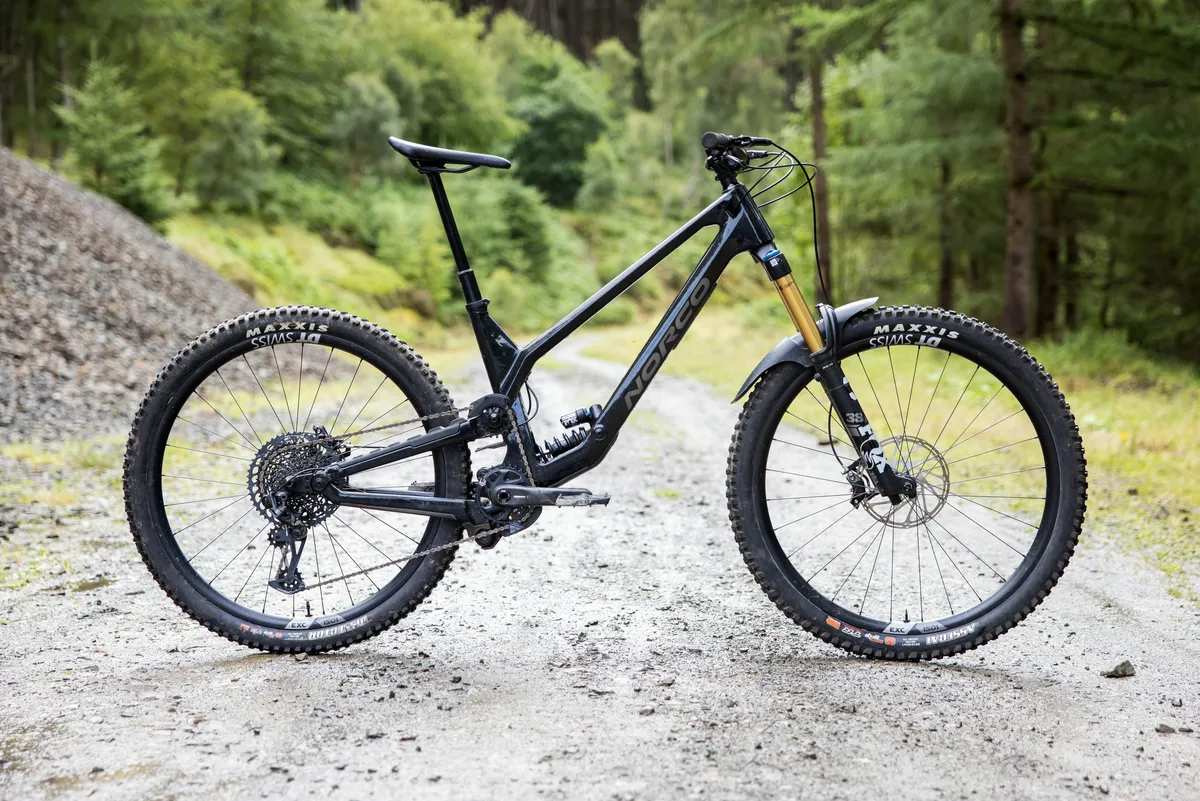
- Price: £8,999/$8,249/€9,999 as tested
- Pros: Excellent suspension with impressive descending performance
- Cons: Pedal bob when climbing
The Range C1 is a hard-charging gravity monster, with smooth suspension that's helped by a well-considered geometry.
While the Range C1 is designed for hard-hitting gravity-fed descents, it also performs well on mellower trails considering its bulk.
The geometry isn't the most aggressive out there, which makes for a comfortable climbing position for long days in the saddle, although the suspension provides some pedal bob.
Norco has given the Range C1 a spec list that is all but impossible to upgrade, which is quite the task considering its asking price.
- Read our full Norco Range C1 review
Nukeproof Mega 297 Carbon Elite
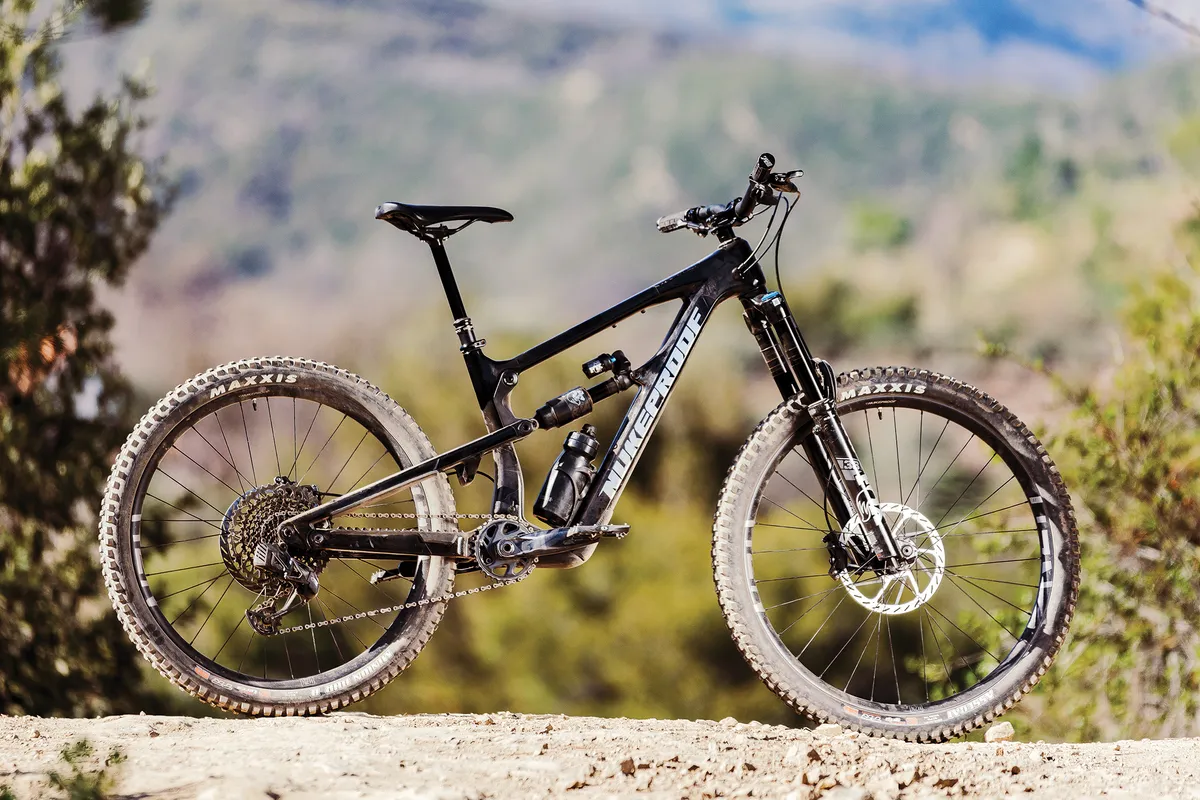
- Price: £4,900 as tested
- Pros: Good comfort and confidence-inspiring
- Cons: Brakes aren't the punchiest
Nukeproof's Mega 297 Carbon Elite keeps things exciting when you want them to be, with the geometry striking the right balance between speed and nimbleness.
The suspension is well balanced, with the Mega 297 Carbon Elite using a Fox 38 Performance Elite and an X2 Performance rear shock , which swallow up bumps with relative ease.
The bike feels well within its comfort zone on most trails and passes this reassurance on to the rider, boosting confidence.
- Read our full Nukeproof Mega 297 Carbon Elite review
Propain Spindrift Al MX Performance
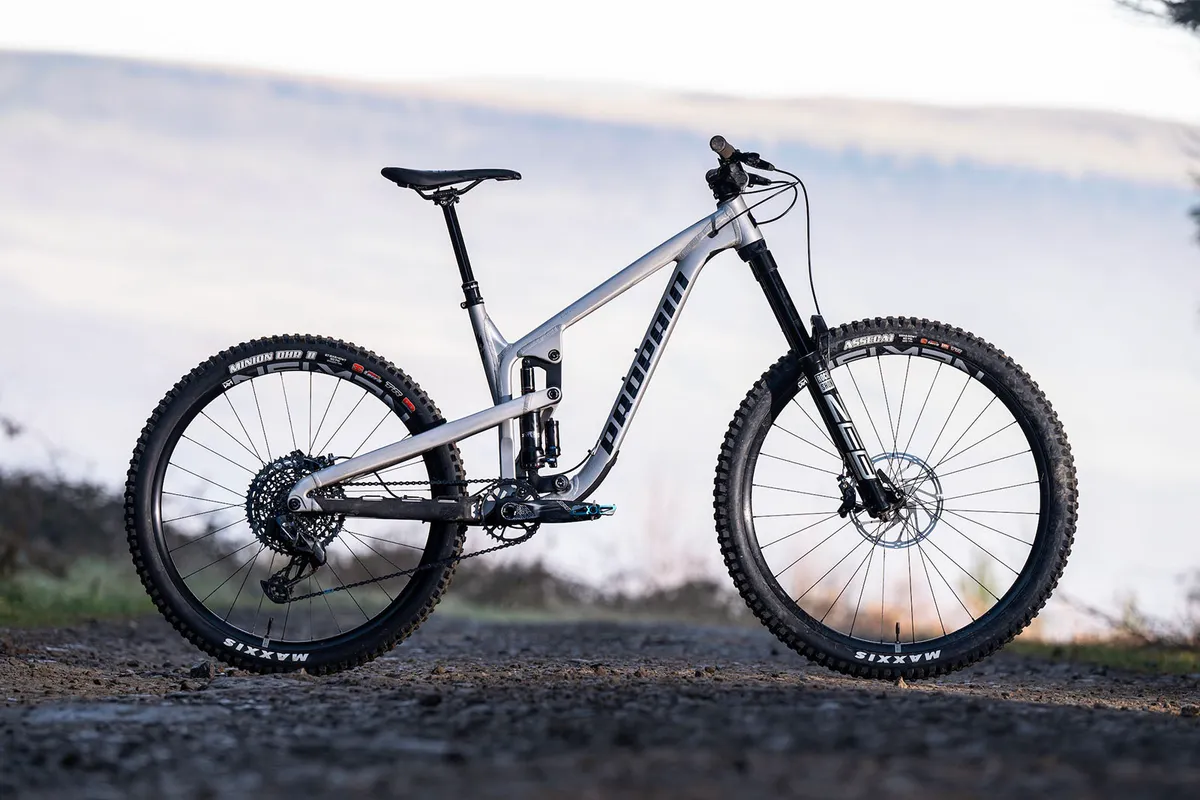
- Price: £5,013/$5,253/€5,013 as tested
- Pros: Pedals well for its long travel; alloy frame just as capable as carbon rivals
- Cons: Upgraded shock may need a retune
Propain's Spindrift Al MX Performance is a freeride-focused long-travel bike aimed at bike parks and gnarly downhill trails.
On the hills, we found ourselves reconsidering the stereotypes of long-travel bikes, with the Spindrift proving to be an efficient climber despite its 180mm of front and rear travel.
While it wasn't XC quick, a good seating position and supportive platform made it rival most enduro bikes up the hills.
When pointed down the trail, the bike felt happy to charge through the roughest stuff and gobble up hard hits with ease. However, we found the shock struggled with high-frequency pumps due to a medium compression and rebound tune.
This didn't reduce confidence in the bike, but would be something we'd change if we were riding more natural trails.
- Read our full Propain Spindrift Al MX Performance review
YT Capra 29 Core 4
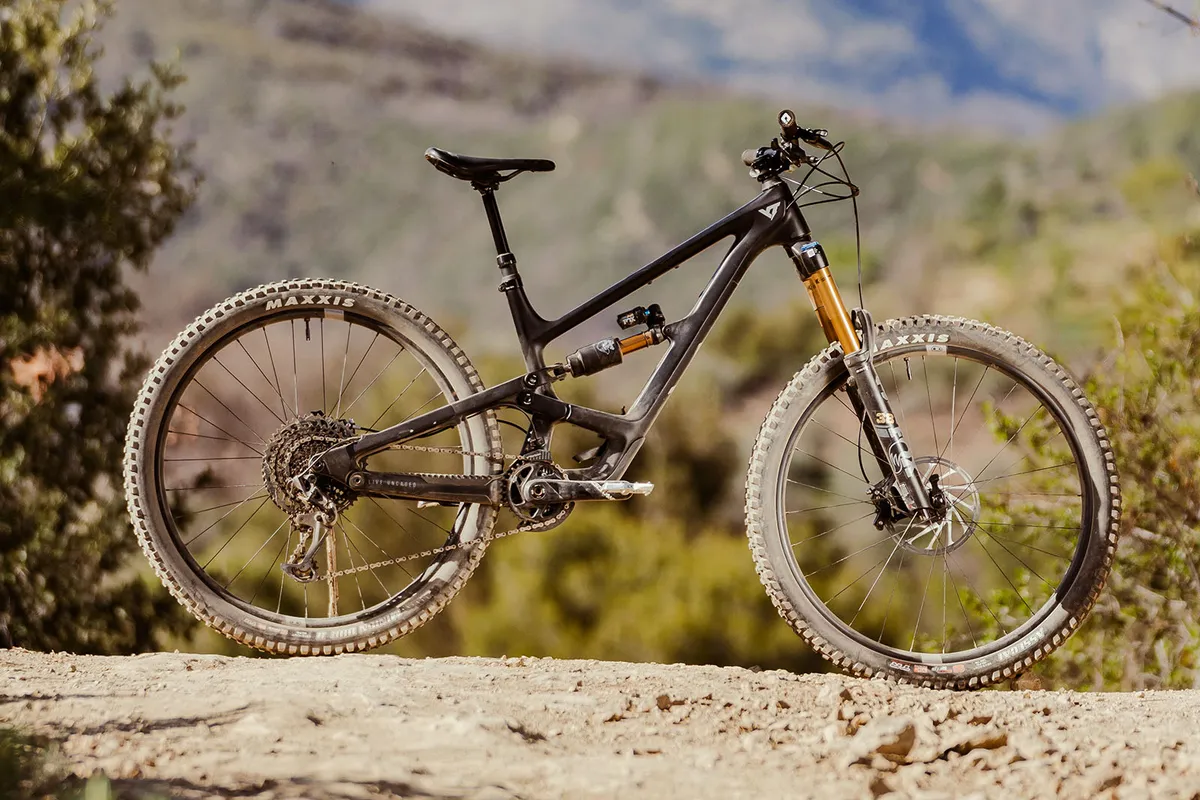
- Price: £5,199/$5,299/€5,299/AU$9,999 as tested
- Pros: Fast from the get-go; lively and comfortable character
- Cons: Bottom bracket feels too high
YT's Capra 29 Core 4 offers great value for money, with a Fox Factory 38 fork and an X2 Factory shock used to absorb rough trails.
The frame has been around since 2021 and offers a playful ride on various types of trail, though we found the bottom bracket a little high.
The Capra 29 is incredibly well rounded, and while some bikes may perform better on downhills, the versatile nature of the Capra makes for an easy-going, confidence-inspiring ride.
- Read our full YT Capra 29 Core 4 review
Bird Aeris 9 Shimano 12-speed
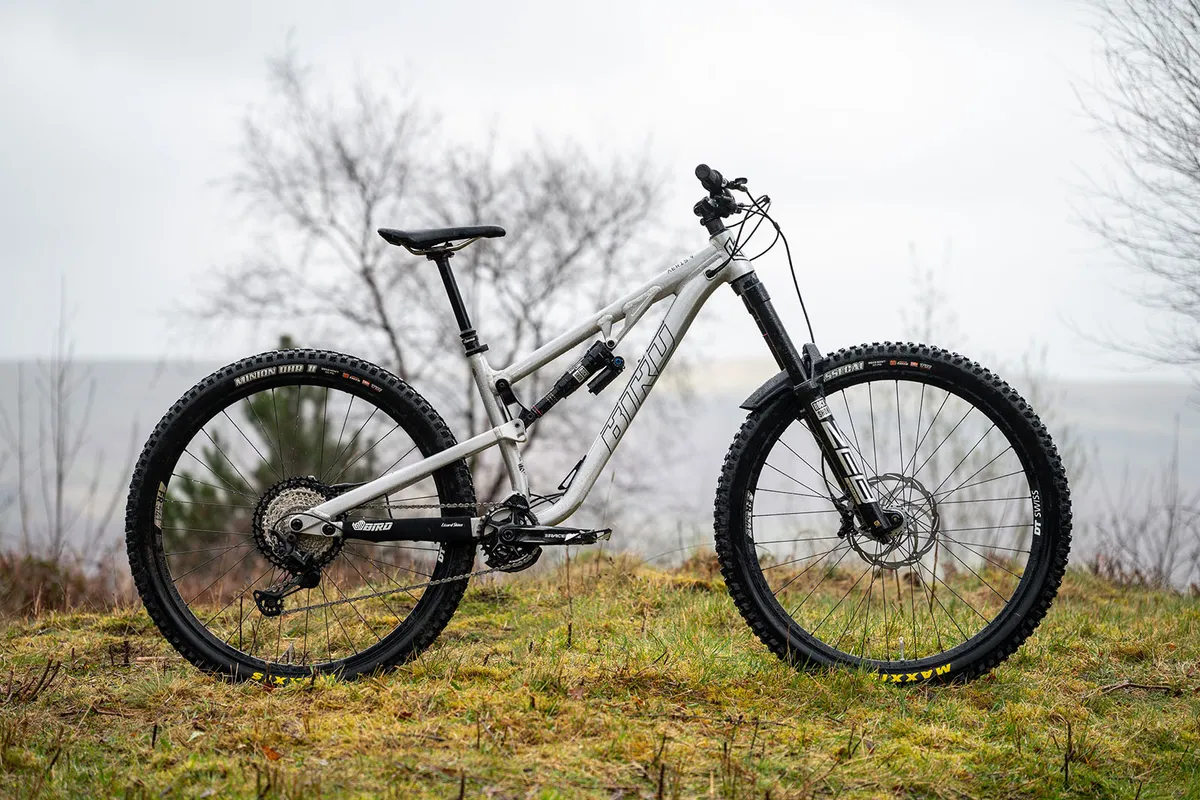
- Price: £4,333 as tested
- Pros: Good value for money with custom build options; well-balanced geometry
- Cons: Not the most responsive ride
Bird's Aeris 9 Shimano 12-speed offers a competitive build for the money, with a RockShox ZEB Ultimate RC2 fork and RockShox Super Deluxe Ultimate shock used to gobble up the bumps.
The Aeris 9 offers masses of stability and security through technical sections, providing plenty of rider confidence when you need it most.
We found the bike lacked a little when it came to playfulness, being focused more on heavy hits and carrying speed through rough terrain.
- Read our full Bird Aeris 9 Shimano 12-speed review
Bold Unplugged Ultimate
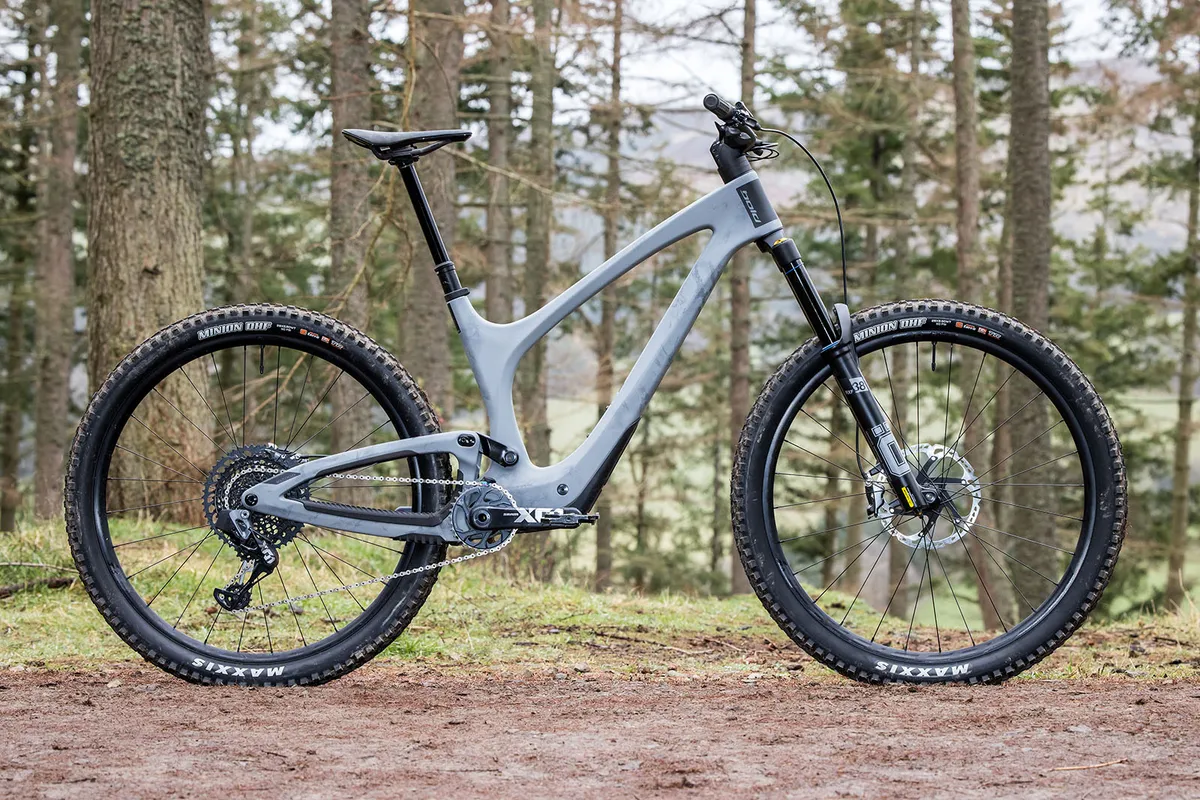
- Price: £10,999/$10,999/€10,999 as tested
- Pros: Balanced geometry; stellar climbing performance
- Cons: Limited customisation
Bold's Unplugged Ultimate offers high levels of innovation with its neatly integrated rear suspension, one-piece Syncros cockpit and comprehensive in-built toolkit.
The bike features 160mm of rear travel controlled by a Fox Float X Nude Factory hidden in the frame , while the front of the bike is supported by a 170mm Öhlins RFX38 M.2 fork.
We found the ride to be superbly balanced, with precise and playful handling complemented by a calm and capable ability through the gnarliest terrain.
This continues when faced with a hill, because the modern geometry and TracLoc suspension system makes spinning up easier than on its contemporaries.
While its design causes restrictions in spec choice, the Unplugged is without doubt a superbike – and is priced accordingly.
- Read our full Bold Unplugged Ultimate review
Cannondale Jekyll 2
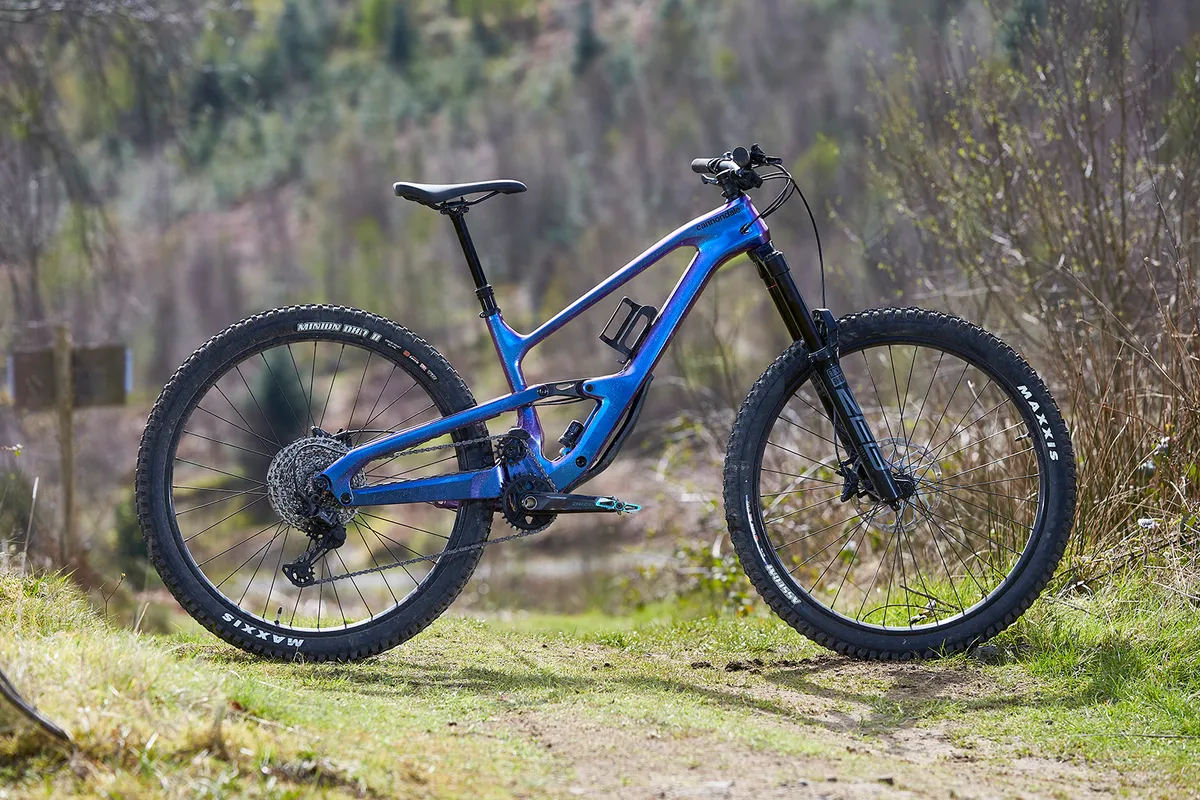
- Price: £4,800/$4,550/€4,999/AU$6,899 as tested
- Pros: Striking looks; composed when it matters
- Cons: Not the best value for money
The Jekyll 2 uses the same carbon frame as the top-end Jekyll 1, just with a lower component spec. It's a striking-looking enduro bike, with its hidden shock designed to lower the centre of gravity and a great paintjob. It's available as a 29er only.
The high-pivot suspension design incorporates Cannondale's Ai asymmetric rear triangle to increase frame clearance. There's an idler wheel in the chainline to help prevent the kickback that can come with high-pivot kinematics.
Spec-wise, there's Shimano Deore, which despite being low-spec for the Jekyll 2's price, worked just fine. Cannondale specs 165mm cranks to reduce pedal strikes. Suspension is provided by a 170mm RockShox Zeb Select fork and a Fox Float DPX2 Performance shock with 165mm of travel. We had issues with wheel build quality though.
We really liked the forward seated position and absence of bob when climbing. Head back down and the Jekyll's balanced handling and geometry make it predictable and easy to guide through turns.
We also rated the Cannondale Jekyll 1 at 4 stars if you fancy a more decked-out spec.
- Read our full Cannondale Jekyll 2 review
Canyon Strive CFR Underdog
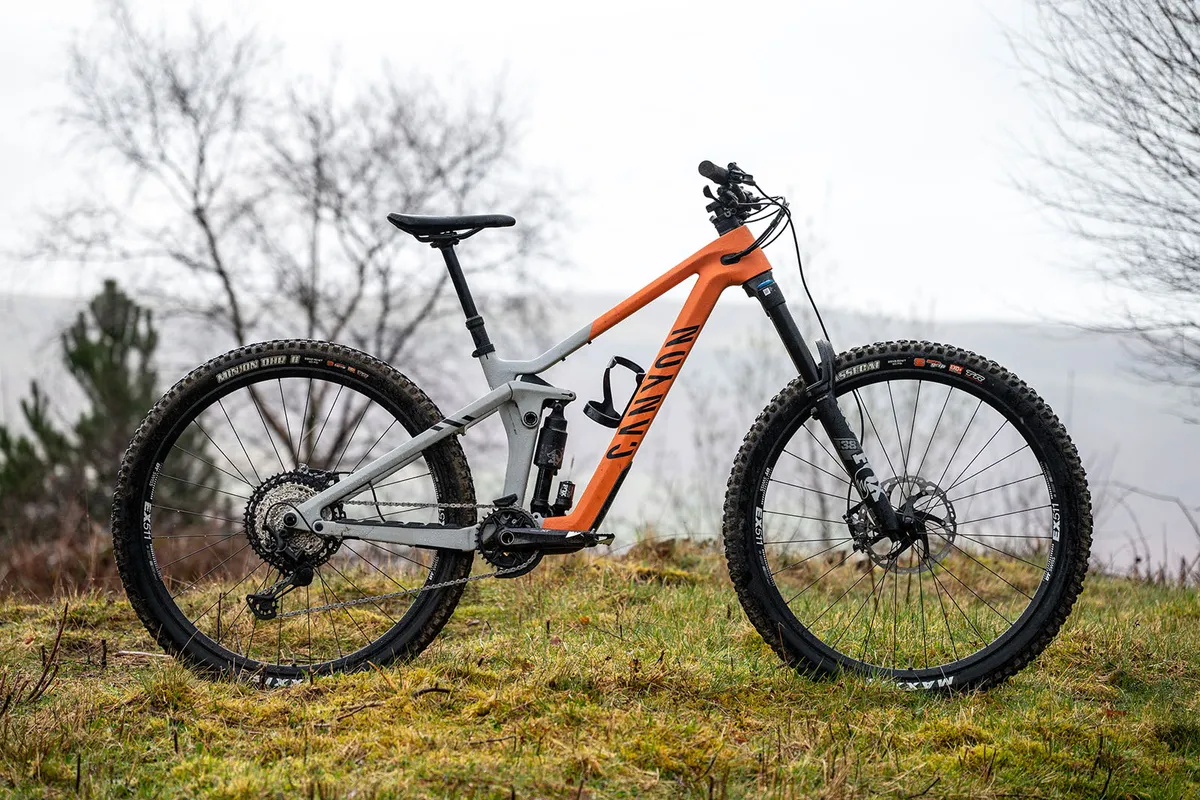
- Price: £4,799/$4,999/€4,999/AU$7,399 as tested
- Pros: Shapeshifter helps on the hills; ground-hugging suspension
- Cons: Not the liveliest ride
Canyon's Strive CFR Underdog is the German brand's lowest-tier enduro race bike. It features meaningful geometry adjustment and Shapeshifter technology that can steepen the seat tube angle for climbing.
The Strive CFR Underdog has a calm demeanour on steep terrain and goes a long way to boost rider confidence, though the bike requires more effort than its competition on more sedate trails.
Gearing and brakes come in the form of Shimano XT, while a Fox 38 Performance Elite fork and X2 Performance rear shock are used to eat up the trail.
- Read our full Canyon Strive CFR Underdog review
Canyon Torque Mullet
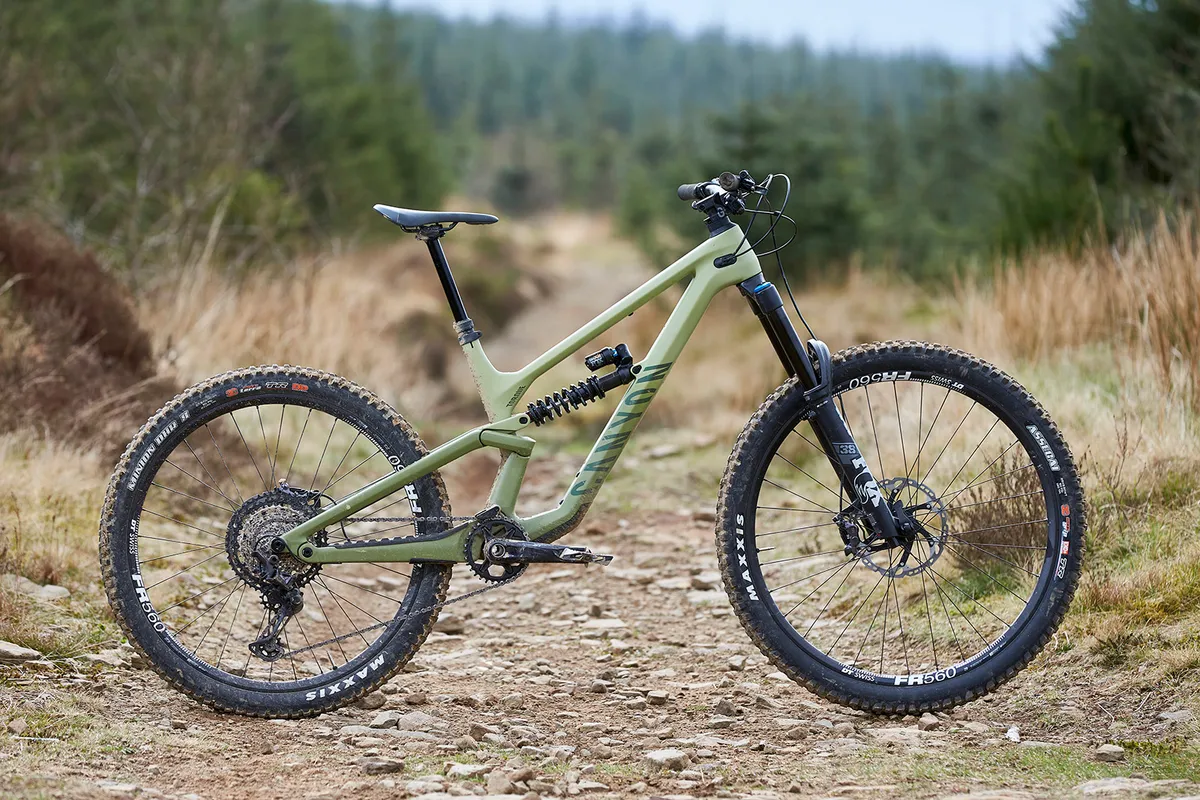
- Price: £4,499/$5,399/AU$7,299/€4,799 as tested
- Pros : Balanced ride feel from sorted geometry and good spec for its price
- Cons: Not quite as grippy and ride-smoothing as others
The Torque is now available as a 29er, 27.5in bike or this mullet option with a carbon frame and in all sizes except small. It comes with 175mm of travel out back from its Fox DHX2 Factory shock and a Fox 38 Performance Elite GRIP2 fork with 170mm travel.
There's a flip chip built in that changes geometry by 0.5 degrees and bottom bracket height by 8mm.
The Torque isn't quite a full-on enduro bike; we didn't feel it had quite the grip or bump-swallowing ability of the best. The updated Canyon Strive is designed more specifically to fit that mandate.
As usual with Canyon, you get a great spec for the price, with Shimano XT and DT Swiss wheels with Maxxis tyres.
Downhill performance delivered fun by the bucketful, with well-balanced, predictable handling. There's a bit more feedback over bumpy terrain than some of its rivals though.
- Read our full Canyon Torque Mullet review
Deviate Highlander II
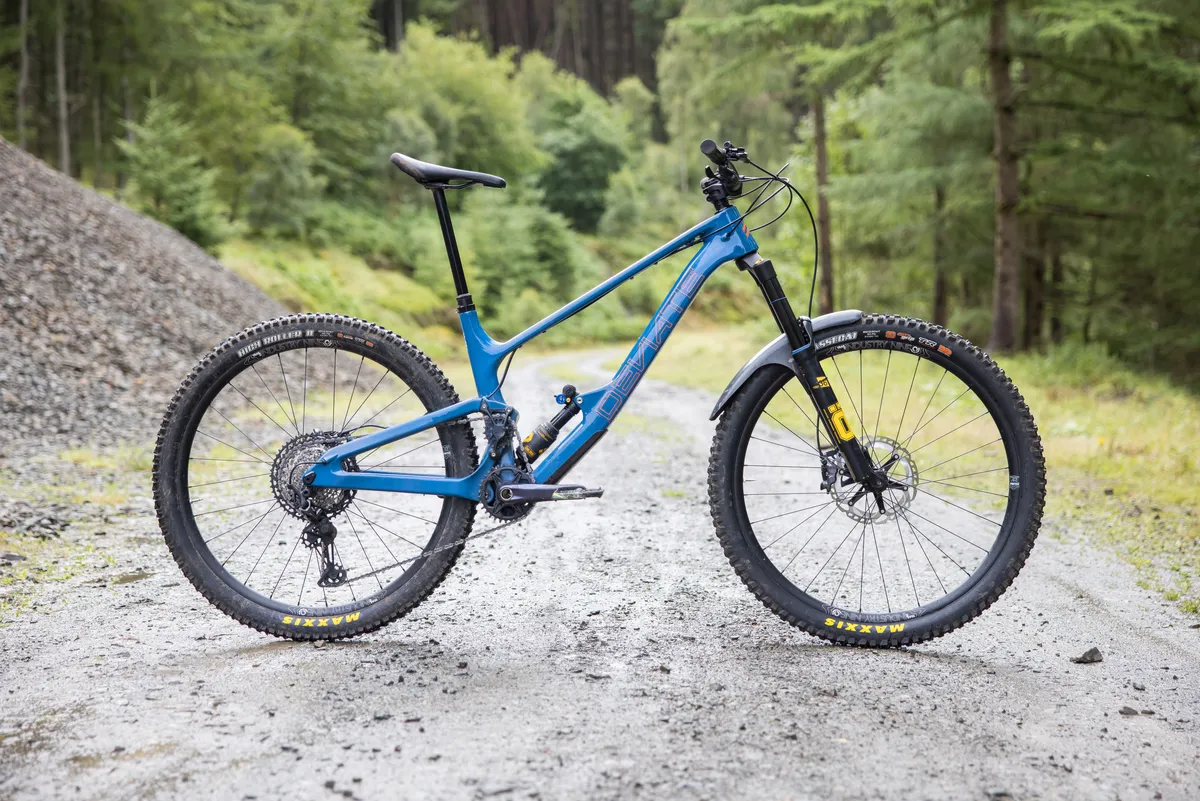
- Price: £7,050
- Pros: Impressive suspension with excellent pedal efficiency
- Cons: Head angles could be slacker to meet performance potential
While it only has 145mm of rear-suspension travel, the Highlander II is designed for everything from epic days in the saddle to bike park laps.
The high-pivot suspension soaks up bumps, providing for smooth and calm descending, while remaining composed uphill, resisting pedal bob.
While the geometry is relatively balanced, the relatively steep 65-degree head angle makes it twitchier and harder to manage on steep turns.
- Read our full Deviate Highlander II review
Devinci Chainsaw GX 12S
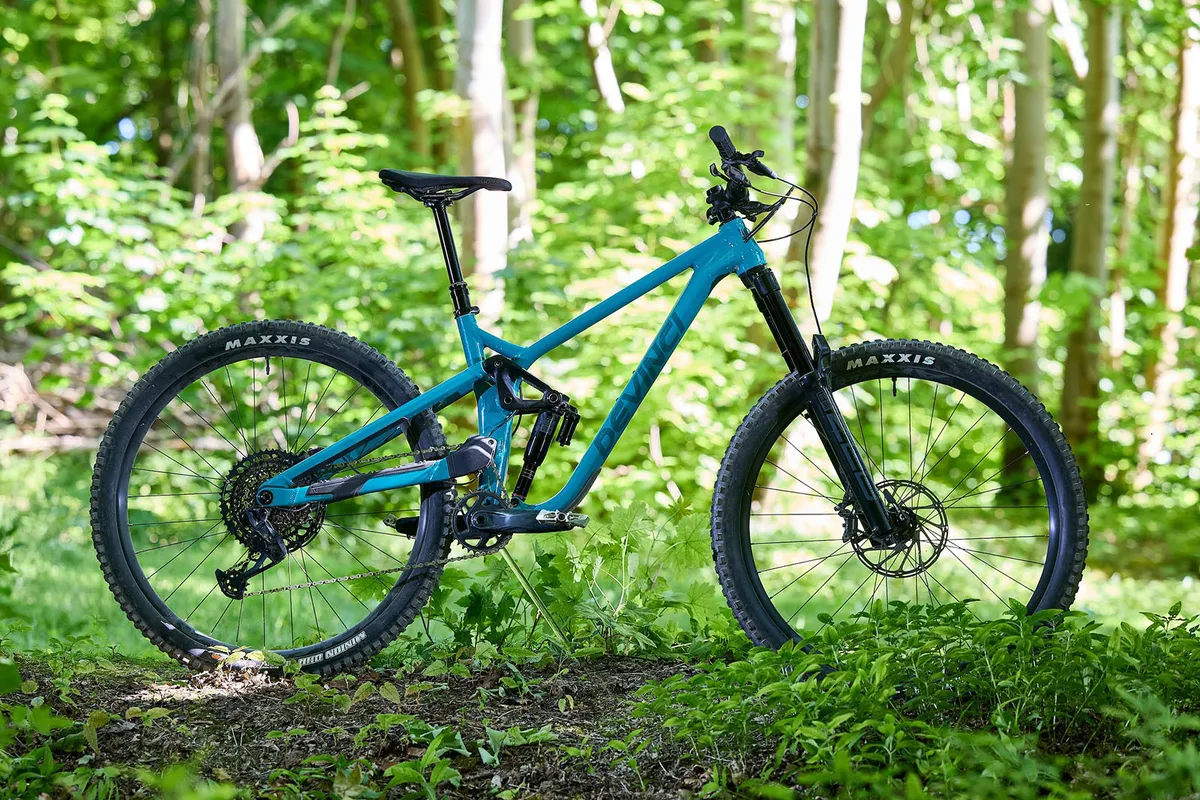
- Price: £4,999 as tested
- Pros: Impressive downhill performance; robust design
- Cons: Chain guide adds drag
The Chainsaw is designed for bike park laps and steep downhill terrain, featuring a high-pivot suspension design that delivers 170mm of rear travel.
While it's not destined for climbing prowess, the bike will get you up a hill comfortably, though the chain guide at the bottom adds drag. We found removing it made a significant difference.
The Chainsaw proves seriously fast downhill, with the rear end soaking up bumps of all sizes and frequencies, while still remaining engaging on smoother tracks, unless the gradient is too mellow.
The bike suits aggressive riders smashing out big features, and would make a good seasonaire bike.
- Read our full Devinci Chainsaw GX 12S review
Giant Reign 1
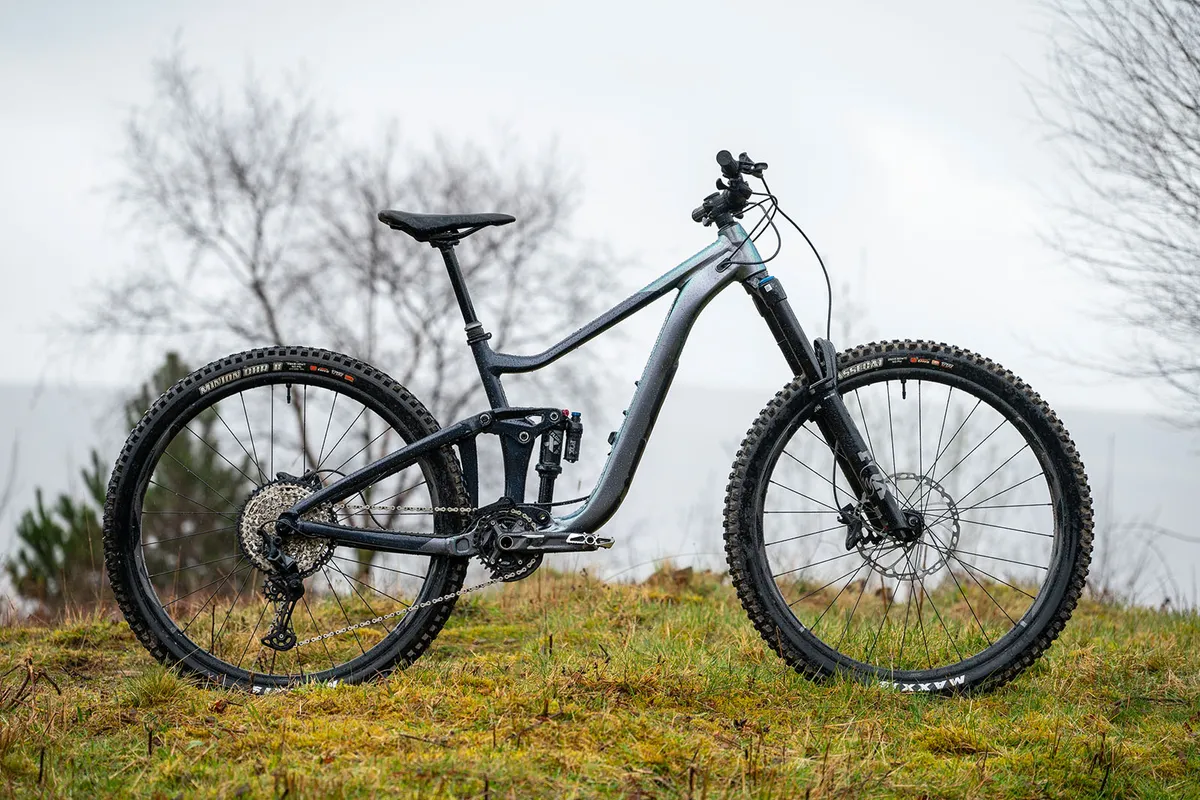
- Price: £3,999/€4,499/AU$5,699 as tested
- Pros: Well-considered spec for price; incredibly capable
- Cons: Not the fastest through the rough
Giant's latest Reign now has 160mm of rear travel, bringing it up to date with a lot of the other bikes on this list.
The Reign 1 offers good spec, with quality components such as a Fox 38 Performance Elite fork and a Float X Performance Elite rear shock bolted to a well-refined frame.
The bike comes with meaningful geometry adjust that allows for slack, medium and steep ride settings to cater for the type of riding you do.
Giant's Reign 1 descends quickly, offering racers and riders high levels of confidence in technical sections, though we found the cockpit a little stiff on rough terrain.
- Read our full Giant Reign 1 review
Hope HB.916
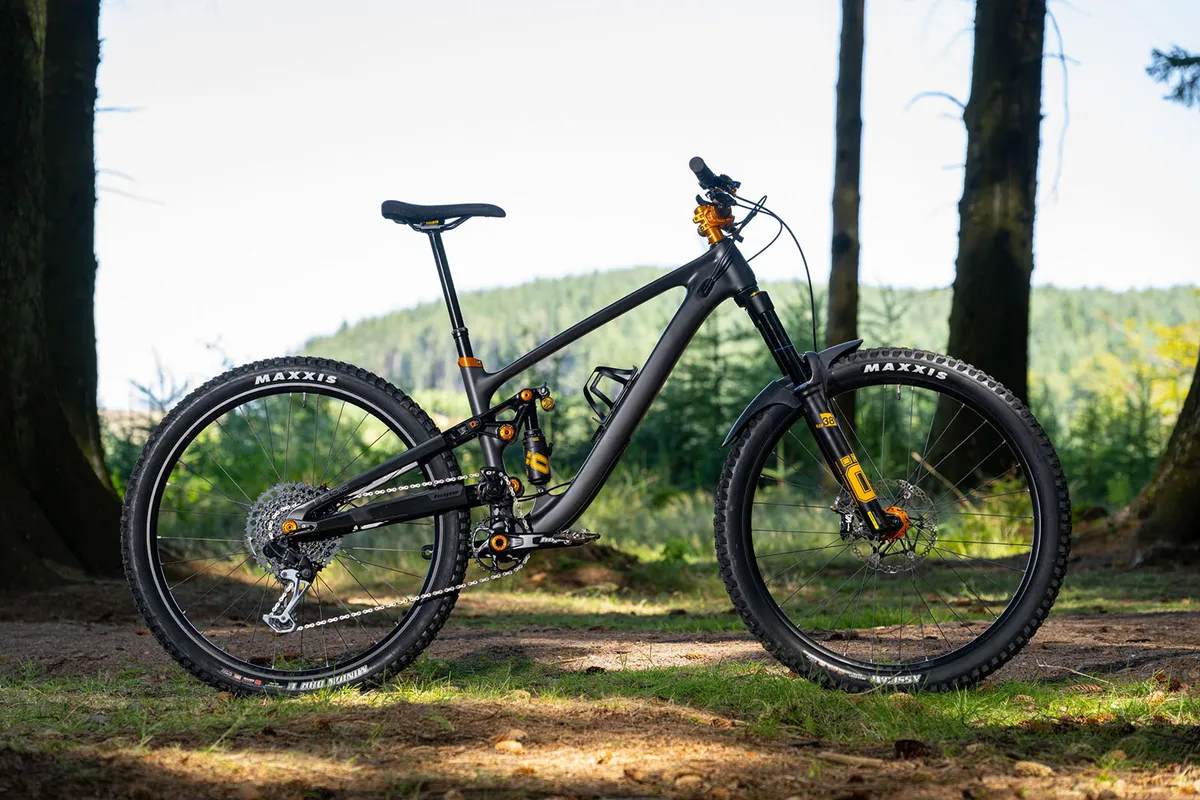
- Price: £6,995 as tested
- Pros: Impressive geometry with dependable spec; calm and controlled through the rough stuff
- Cons: Suspension is hard to set up for lighter riders
Hope's new HB.916 enduro bike features a high-pivot linkage delivering 160mm of rear travel. The bike feels well-balanced and happy to plunge into the most technical terrain without dulling any of the fun.
The HB.916 is specced with the British brand's own wheels, brakes and crankset. Our tester didn't take to Hope's carbon bar though, feeling that it was too stiff.
An Öhlins RXF38 M2 fork supports the front of the bike with 170mm of travel, while a TTX2 Air shock controls the rear. We found it took a while to find the right setup for the bike.
- Read our full Hope HB.916 review
Intense Tracer 279 Expert
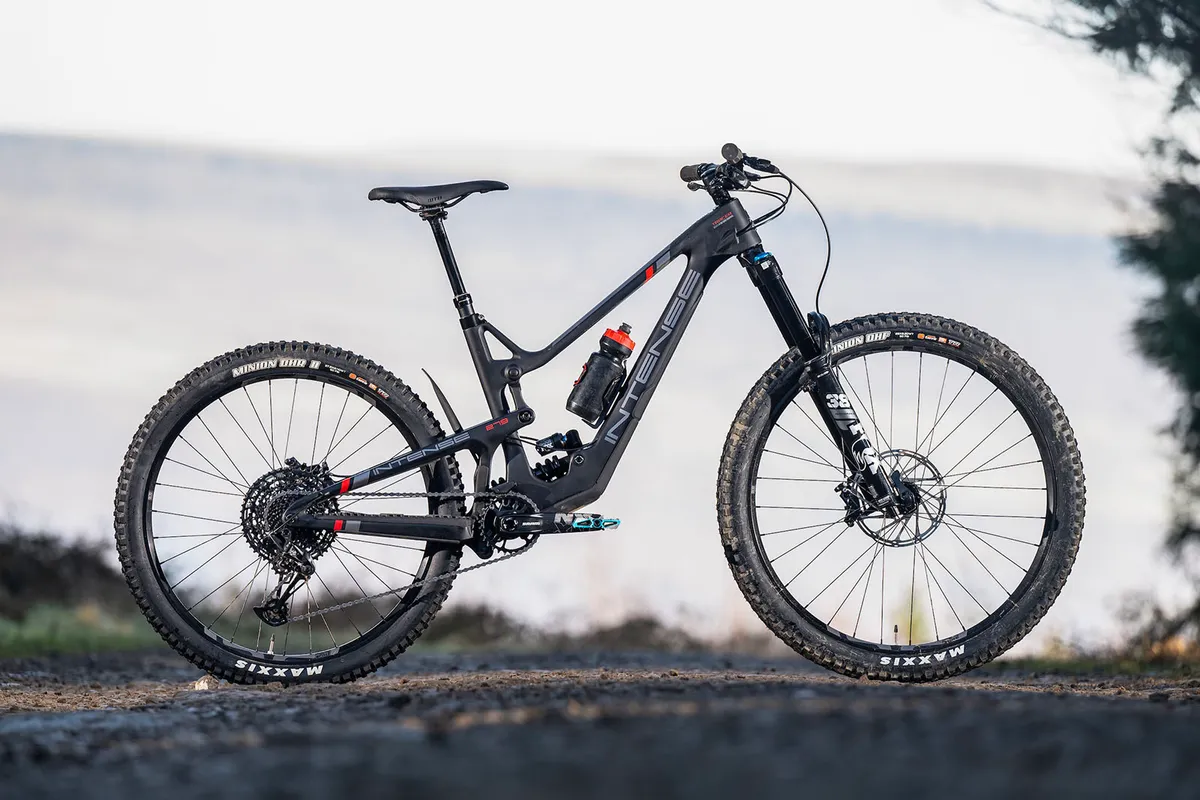
- Price: £4,999/$5,499/€5,499 as tested
- Pros: Impressive frame details; useful toolkit and internal storage
- Cons: Heavy SRAM NX Eagle cassette
The Tracer 279 Expert is the American brand's mixed wheel-size enduro bike with 170mm of suspension travel front and rear.
Intense has paid attention with the frame, with the fancy carbon adorned with titanium hardware and featuring functional fenders to keep mud away from the rear shock.
The bike uses a full SRAM NX Eagle drivetrain, and a Fox DHX2 Performance Elite coil shock translates into a relatively hefty bike. However, efficient suspension anti-squat and a comfortable pedalling position make winching to the top of a trail bearable.
Downhill, the bike provides plenty of support and impresses with its bump swallowing on square-edge hits, while the mullet wheel size and modern geometry keep the Tracer manoeuvrable through tight and technical trails.
The Tracer doesn't provide the best value for money, but the frame has plenty of performance potential with some upgrades.
- Read our full Intense Tracer 279 Expert review
Propain Tyee AL 29 Performance
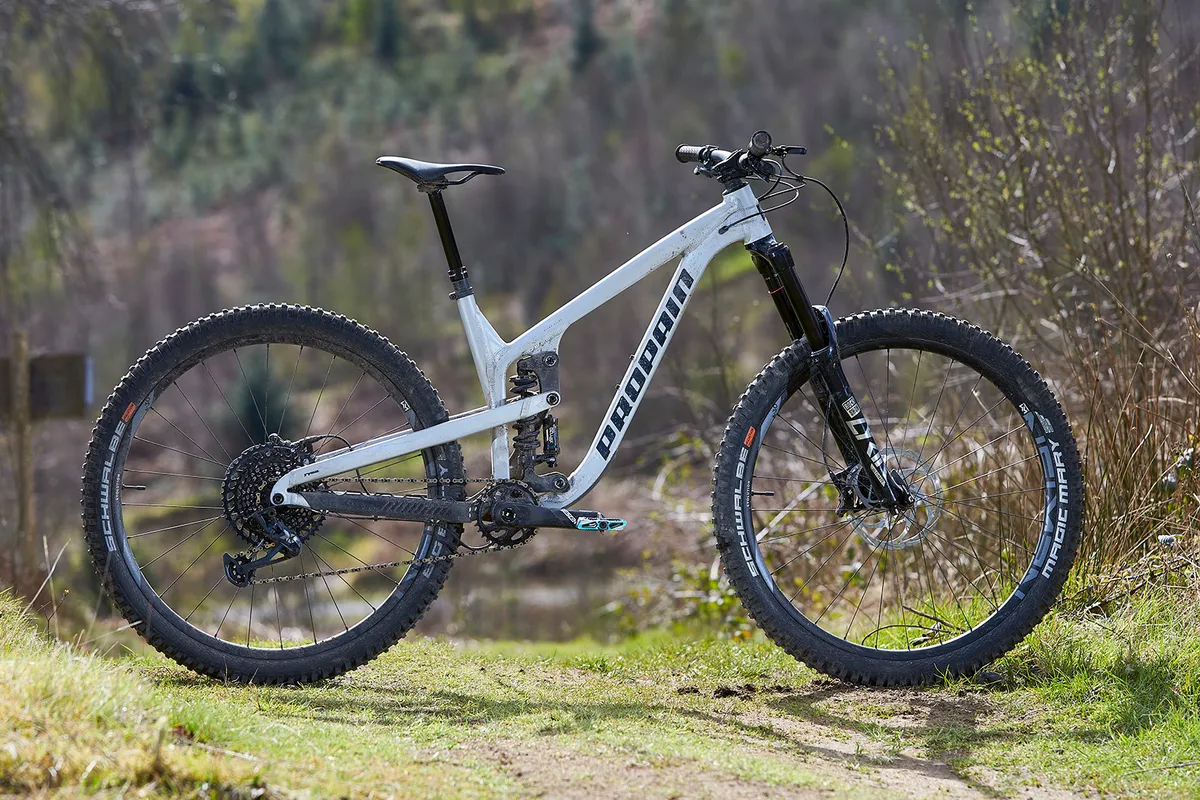
- Price: £5,250 (with upgraded brakes and wheels)
- Pros: Fast and agile ride; good climber
- Cons: No size small on the 29in version
Direct-to-consumer brand Propain is renowned for offering great value for money and its enduro Tyee offering is no exception. Available in either 27.5 or 29-inch wheels, as reviewed here, the bike climbs efficiently and the brand's PR010 suspension system, consisting of two counter-rotating links, resisted any bob during testing.
On the descents, it has plenty of pop and playfulness, and its agility means you can switch between lines without a lot of effort.
Our test bike came with a SRAM X01 Eagle drivetrain, upgraded Formula Cura brakes and RockShox suspension, the rear a coil shock that Propain says is a no up-charge extra if you don't want to use an air shock.
Although the aluminium frame transmits more feedback than other best enduro bikes, the Tyee is a serious amount of fun to ride and it's a great jack-of-all-trades.
- Read our full Propain Tyee AL 29 Performance review
Orange Alpine Evo LE
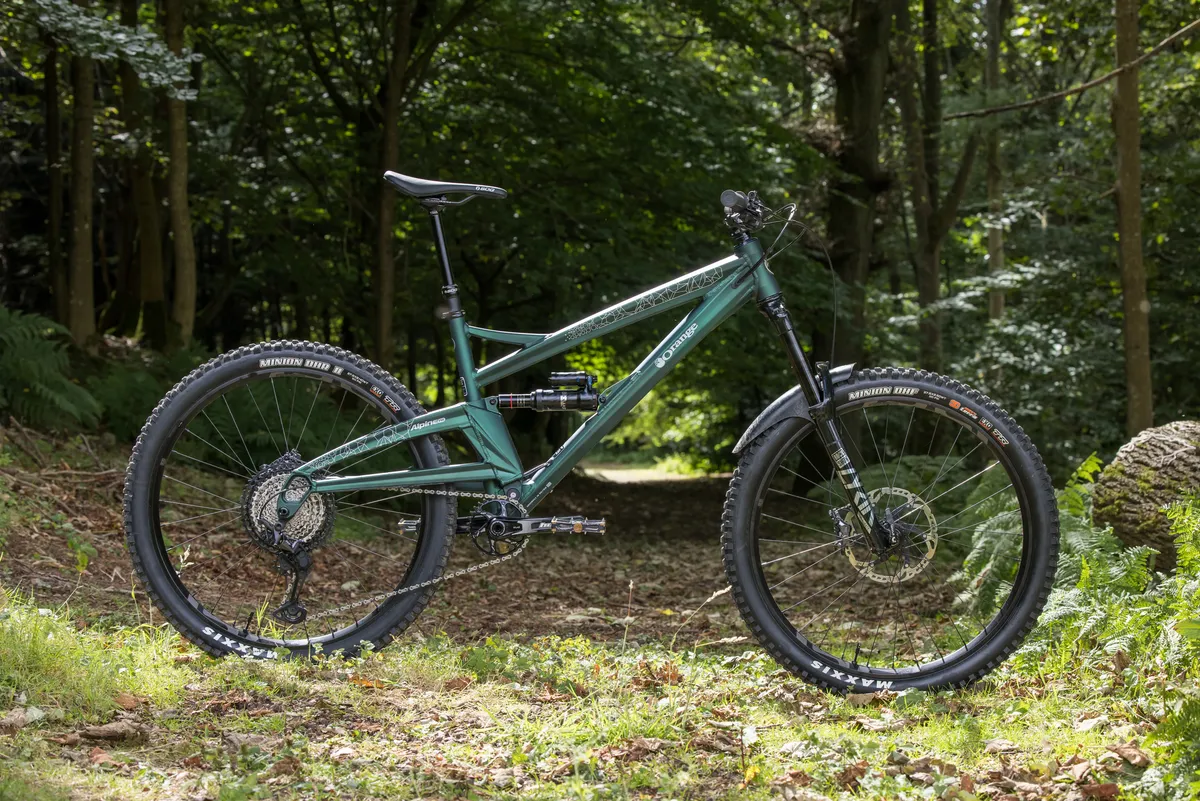
- Price: £5,900 as tested
- Pros: Inspired geometry; spot-on spec for the asking price
- Cons: Narrower margin for error than other suspension designs
Orange's single-pivot Alpine Evo LE comes shod with 155mm of rear-wheel travel and a 6061-T6 aluminium frame. Our test bike was equipped with a Shimano XT 12-speed groupset and suspension courtesy of RockShox.
It feels best when worked hard, offering a sharp yet efficient ride. There's a narrower margin for error with the single-pivot design, but once you've mastered a particular jump or trail feature, the Alpine excels, landing with a notable surge in speed.
- Read our full Orange Alpine Evo LE review
Pole Stamina 160 Remastered
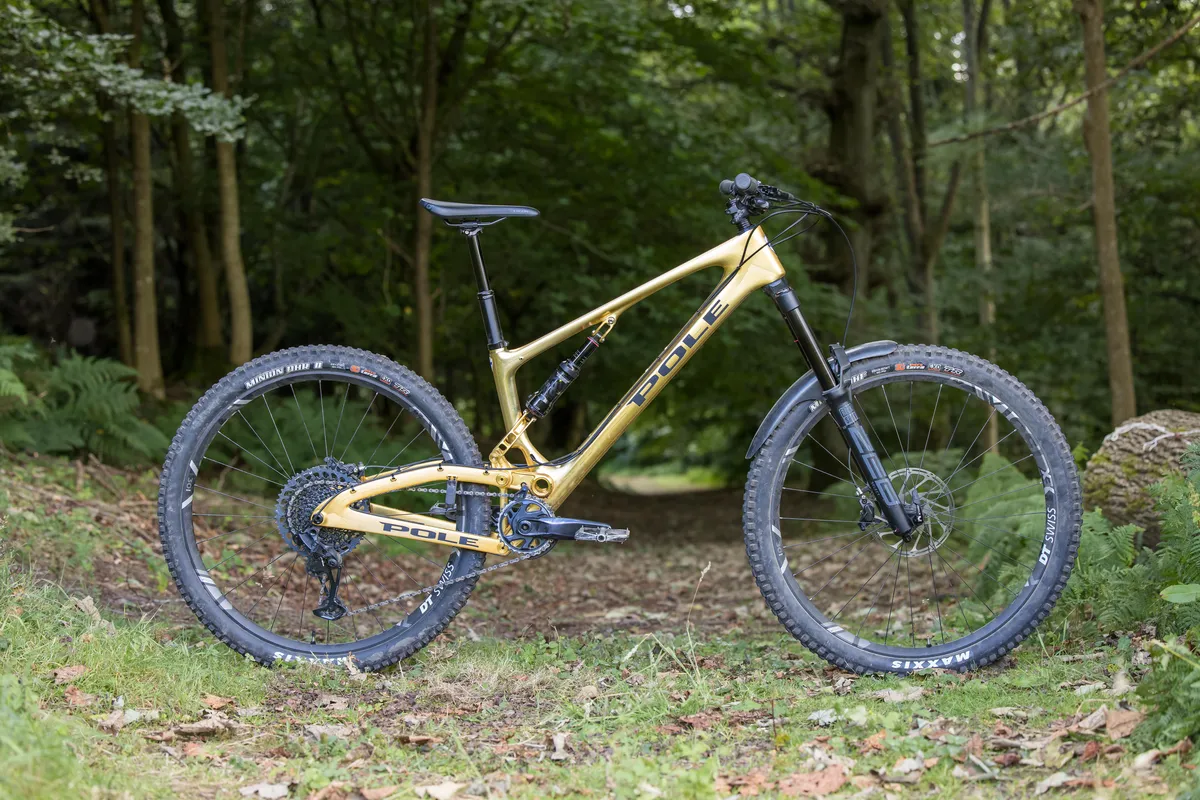
- Price: €5,684 as tested
- Pros: Fantastic appearance; exceptionally progressive geometry; incredibly fast
- Cons: The suspension requires careful setting up
The Finnish brand's mid-travel trail-cum-enduro bike features adjustable travel (by swapping out the shock yoke) and is compatible with both 29in wheels and a mullet setup. It's an outrageously fast bike to ride on all terrain types and despite its stand-out geometry, it pedals well on both uphill and flatter terrain.
Its descending performance is remarkably stable and calm, and it can be ridden incredibly quickly over any terrain with composure and calmness. You'll want to pay careful attention to the suspension setup, which can feel quite aggressive, and will require some fettling for it to be optimal.
- Read our full Pole Stamina 160 Remastered review
Santa Cruz Nomad C GX AXS RSV Coil
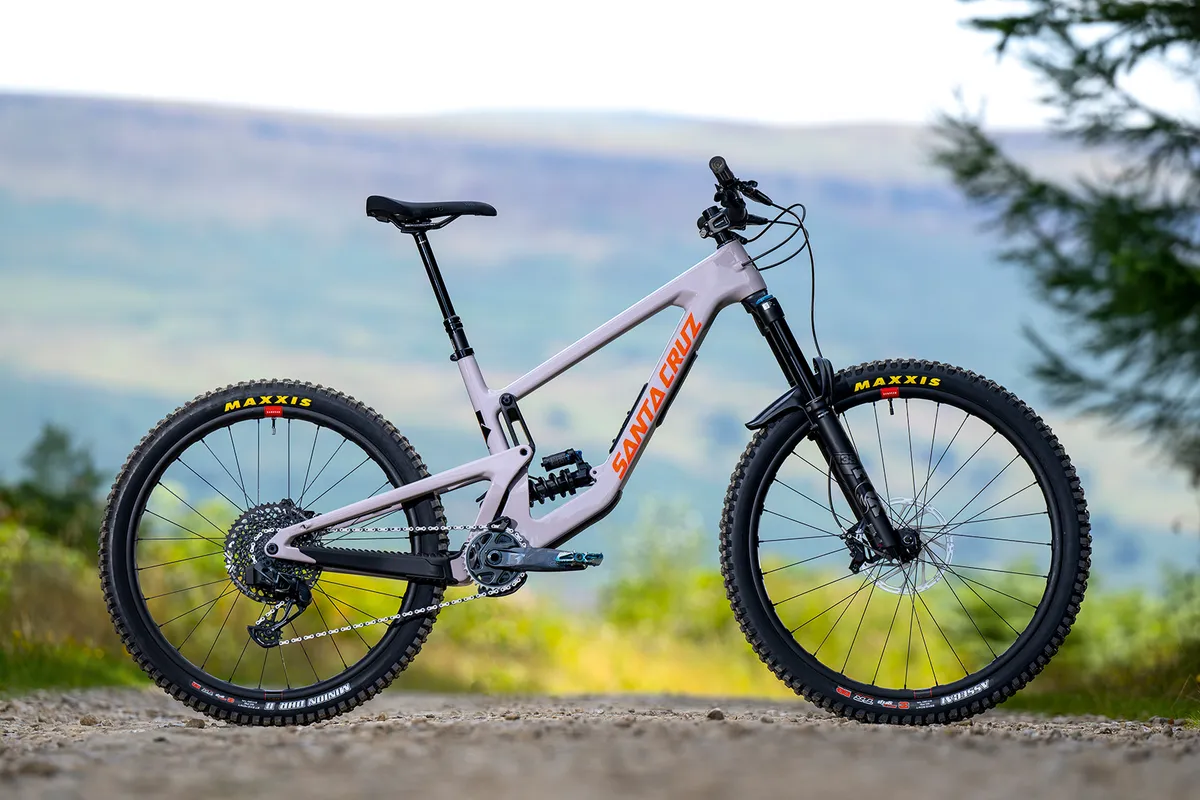
- Price: £8,999 as tested
- Pros: Confident handling on all terrain; well-designed glovebox
- Cons: Flip chip does little to change the bike's geometry
Santa Cruz's Nomad proves years of small refinements are just as important as unique design features. The mullet set-up makes the Nomad more capable than the previous model when pointed downhill, with the bike making a happy companion through the gnarliest of terrain.
The coil shock gives a supportive platform to push against when pumping down the trail, with the 170mm of rear travel happy to eat up even the biggest impacts.
While the price is steep, the Nomad is ready for whatever you throw at it.
- Read our full Santa Cruz Nomad C GX AXS RSV Coil review
SCOR 4060 LT GX
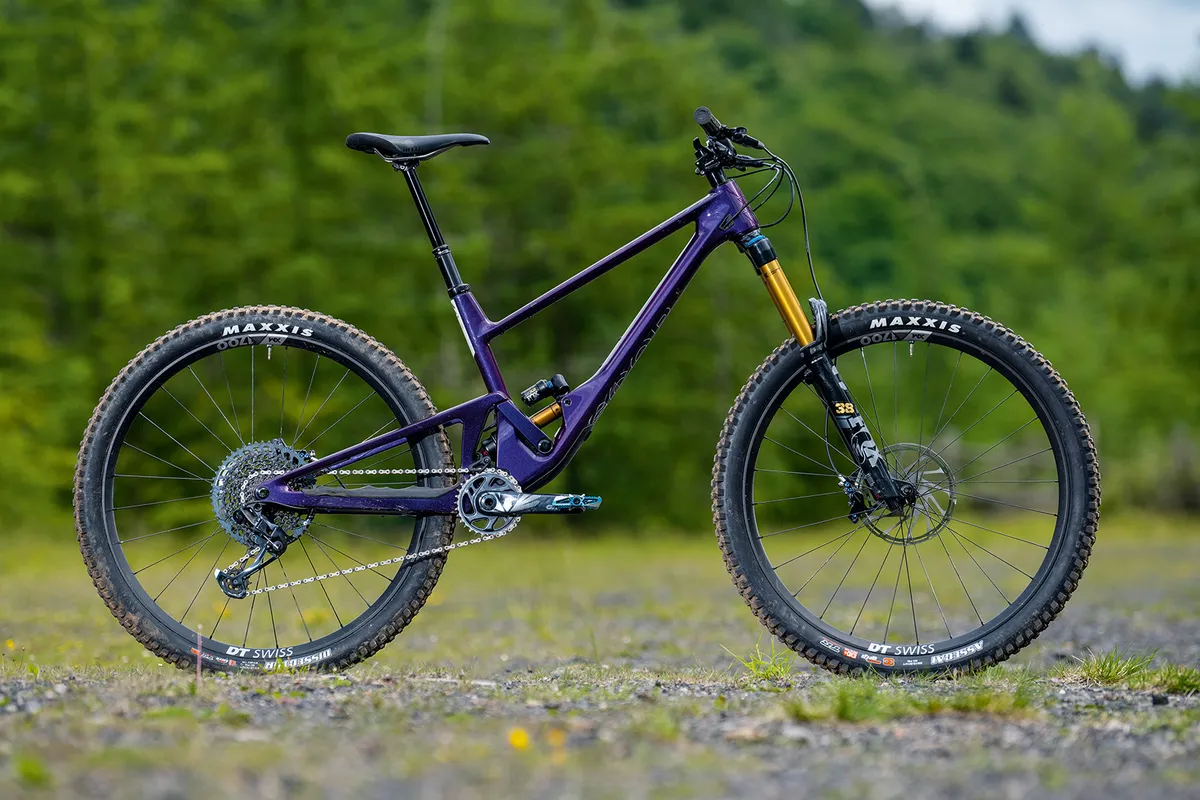
- Price: €6,899/$7,199 as tested
- Pros: Very efficient to pedal
- Cons: High bottom bracket
SCOR is Swiss brand BMC's enduro division, with this 4060 LT GX featuring 29in wheels and 160mm of rear-wheel travel. The bike is nearer to an aggressive trail bike than it is to a downhill bike, and its low weight and snappy geometry give a feeling of eagerness even at moderate speeds.
The 348mm bottom bracket height doesn't give the most planted feel through turns, though this doesn't take away from the bike's sense of fun. While not suited to the steepest, roughest trails, the 4060 LT GX provides a great all-round ride.
- Read our full SCOR 4060 LT GX review
Vitus Sommet 297 AMP

- Price: £5,500/$5,999/€6,300/AU$8,800 as tested
- Pros: Good spec for the money; fun and playful on every trail
- Cons: Not as confident as other bikes on this list
Vitus' Sommet 297 AMP is seriously fun to ride, with the bike feeling poppy and behaving predictably in the air.
As the brand has become synonymous for, the Sommet 297 features a drool-worthy spec for the price, with a RockShox ZEB Ultimate fork and SRAM GX Eagle AXS electronic groupset.
The bike doesn't offer the same ground-hugging and confident feel as other bikes on this list, though it's likely to put an equally big smile on your face.
- Read our full Vitus Sommet 297 AMP review
What is an enduro bike?

Which came first, enduro racing, or the enduro bike? It's a bit chicken and egg, but the race genre and the bike genre have pushed each other's limits, and driven development of bike tech far beyond the confines of the course tapes.
Enduro bikes sit in the middle ground between downhill bikes and trail bikes . Like a DH bike, they're designed to get down hills as fast as possible, tackling chunky rock gardens, matted root beds, big drops and canyon-like gaps, doing it all with a little less suspension travel .
However, like the best trail mountain bikes , they're also designed to be pedalled back up; so rather than pushing to the top of the track, they can be ridden up thanks to more suitable geometry, wider gear ranges and lighter builds than a DH bike.
As such, they're slightly less capable downhill than a DH bike, but far more capable up, and more capable down but less capable up than a trail bike… got it?!
How much travel does an enduro bike have?
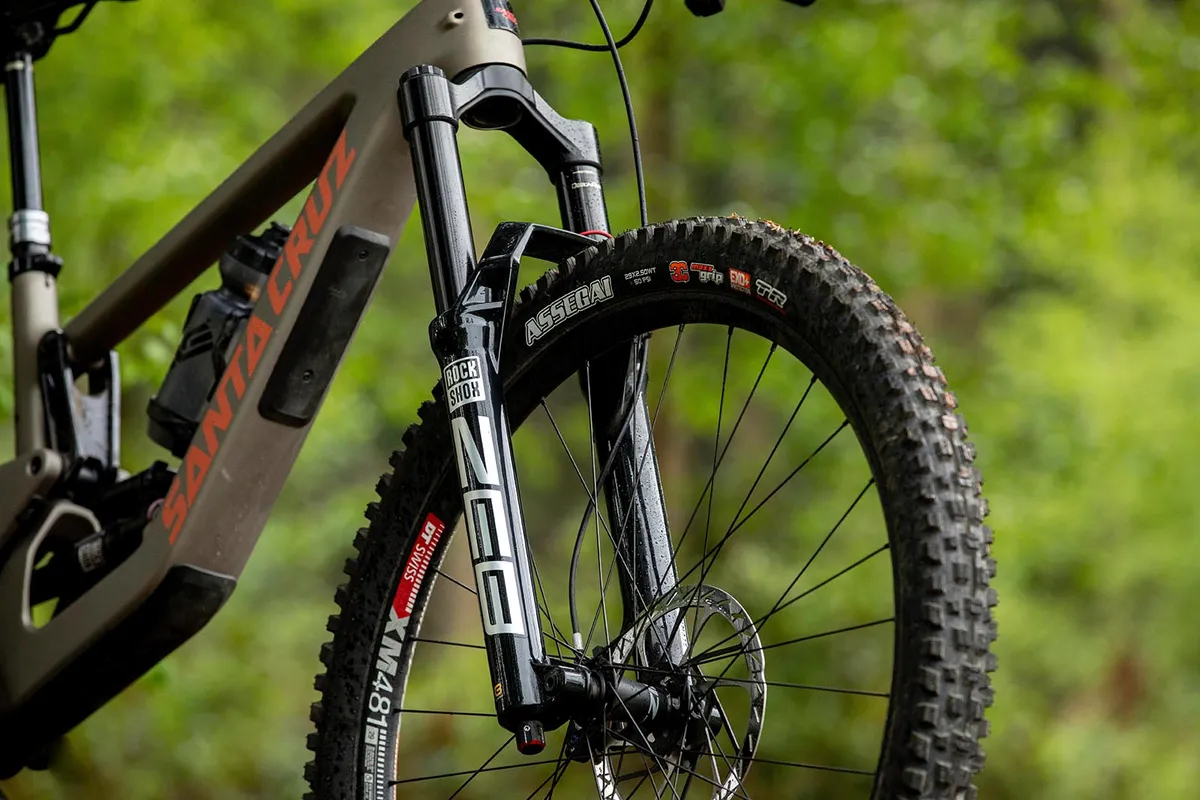
While there's no set definition of travel that defines an enduro bike, the majority have between 150 and 170mm of suspension front and rear. Some 27.5in-wheel enduro bikes may push travel a touch higher and there are a few with a little less at the rear – usually 29in bikes.
Expect to see the burliest single-crown suspension forks a brand has to offer with stanchion diameters varying from 35mm to 38mm. They're built to be stiff, smooth and supportive, with higher-end models sporting plenty of adjustability.
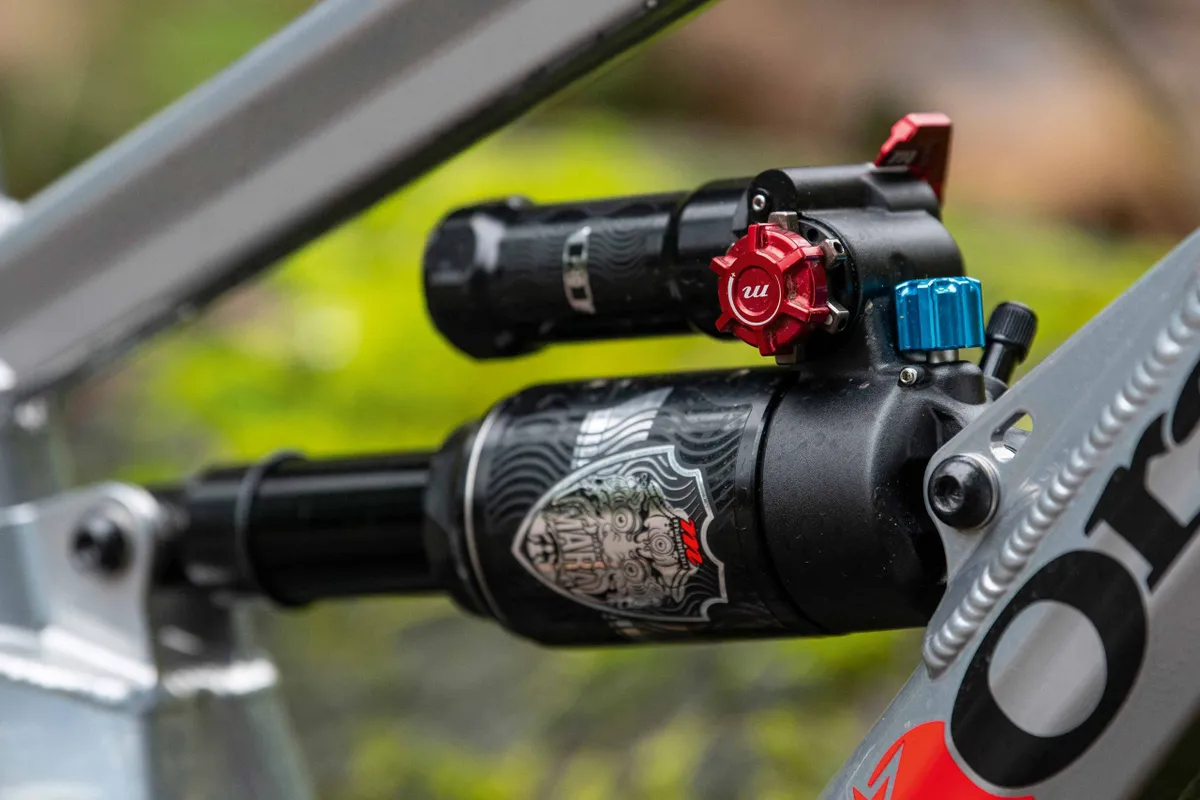
Rear shocks, especially when you're buying bikes from the mid-range up, will have a 'piggyback' design.
This is an additional chamber connected to one end of the shock that allows for additional oil flow through the shock. This, then, allows for better temperature management and more consistency on long descents (you'll be surprised by how warm a shock can get in use).
How the bikes use that suspension travel will vary too. Some bikes have incredibly plush suspension that totally insulates you from the trail, leading to an incredibly planted feel that's fast on steep and rough terrain.
But with all that smoothness comes more pedal-induced movement, so these bikes can often feel sluggish on climbs and flatter tracks – you'll be reaching for a lockout lever much sooner.
However, some bikes will have a more pedal-friendly suspension, which will make the uphills much easier and the flatter tracks more fun. You may lose some of that buttery feeling when you're going flat-out over rocks and roots, though.
Enduro bike geometry – what's that about?
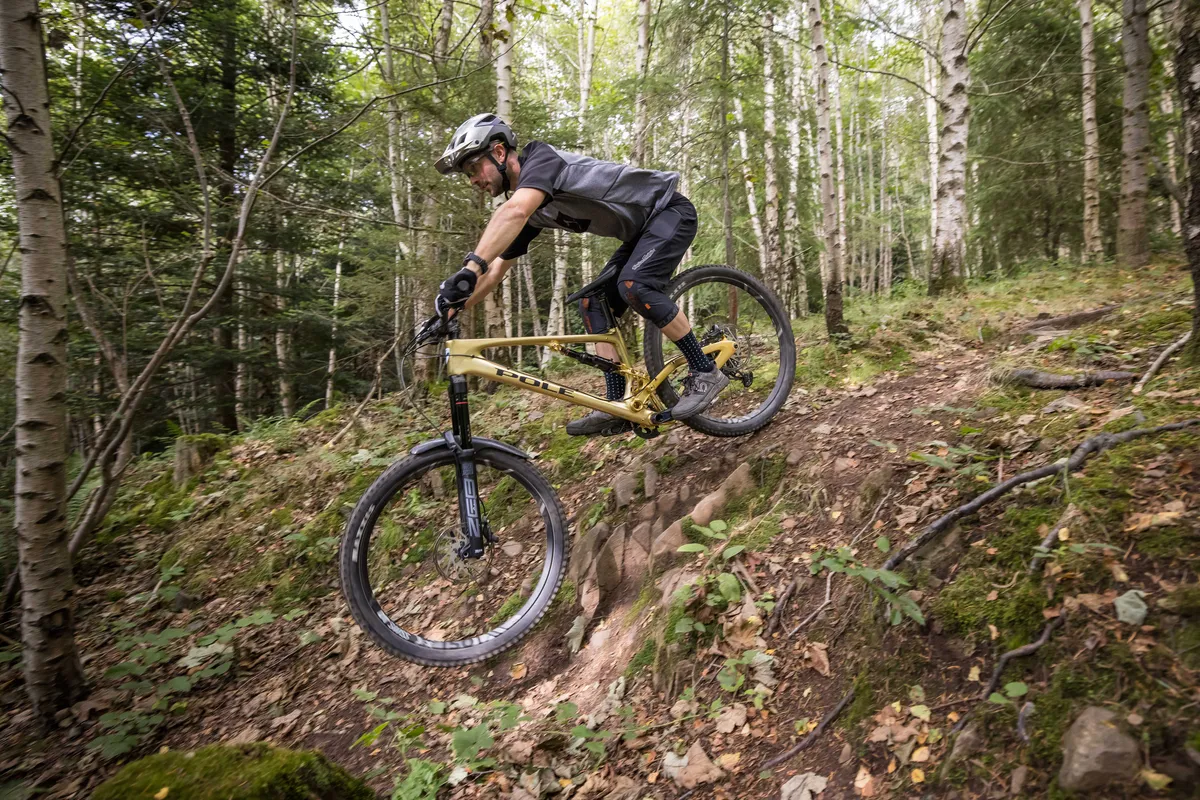
The latest enduro bikes have long, low and slack geometry . This means long front centres (and reach measurements), slack head angles and low bottom brackets. This makes them feel super-confident on steep hillsides because there's less chance of you flipping over the handlebars, and it helps you better manage weight and grip between the tyres.
Longer geometry can make the bikes a little slower to react to inputs, and sometimes you may find you need to re-address your riding technique to get the most agility out of them, but these bikes have descending speed at the forefront of their design.
Share this article

Senior technical editor

- Terms & Conditions
- Subscribe to our magazines
- Manage preferences
Top 8 Best Enduro Bikes | The best enduro mountain bikes ridden & reviewed
There is no doubt about it. We have entered an exciting age in the world of enduro bikes. The sport is growing exponentially with self-perpetuating momentum. Technology available on bikes is more refined and capable than ever, which is leading to a boom in the expanse and quality of trails exploding all over the world, which fuels riders to go out and push these bikes to new limits, and opening the gates to new shredders entering the sport for the first time. Enduro racing has also become gnarlier and more competitive than ever, driving bike brands to go back to the drawing boards, constantly chasing better. And this, you guessed it, feeds back into greater bikes and accessibility to the sport. And so the cycle continues.
We here at Flow are, let’s be honest, giant nerds when it comes to this stuff. We live and breathe these machines and the places they can take us, and are absolutely buzzing to be a part of the industry at a time such as this. And with the demands required of modern-day enduro bikes and their riders, we find this is a particularly concentrated segment of innovation, with exciting new tech pouring in at an astonishing rate that we believe is truly making improvements in leaps and bounds to the bikes we ride, and the fun we can have on them.
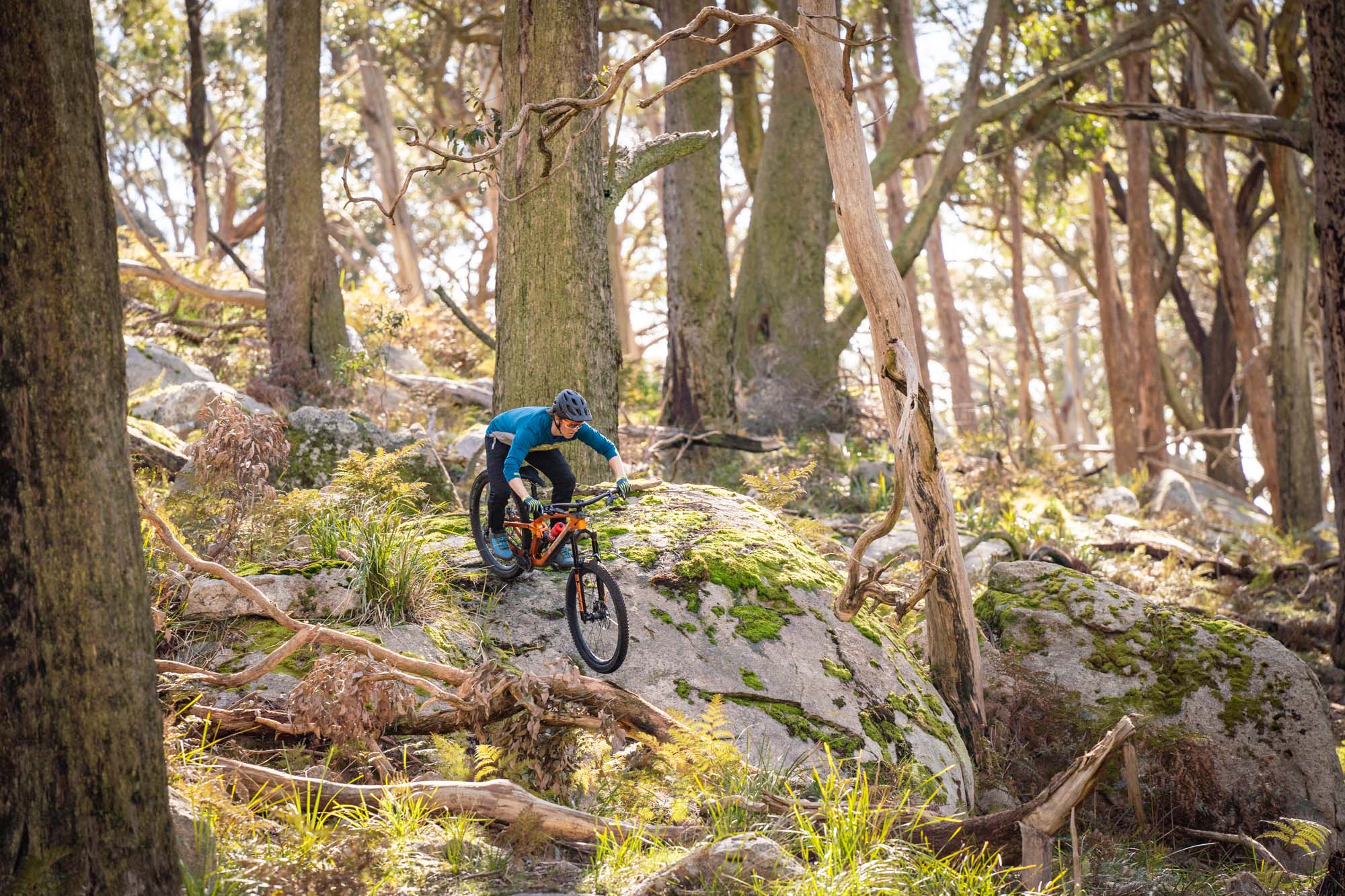
We’ve tested a boatload of these ultra-capable machines, and as an outlet for all of this excitement, we have compiled the following list of enduro bikes available now that we think are pushing the sport in the right direction. While every bike in this list can descend with the best of them while still climbing to the beginning of the next trail or stage, each of them possesses unique design features and ride characteristics that set them apart from the competition, and one another.
It’s also worth noting that you don’t necessarily need an ‘enduro bike’ to race enduros. Even some of the world’s best are choosing slightly shorter options — Canyon CLLCTV’s Dimitri Torodo has been racing a Spectral at World Cups while Charlie Murry from the Specialized Enduro Team has been riding a Stumpjumper EVO .
Of course, this is not an exhaustive list, and there are some popular bikes — like the Specialized Enduro — that aren’t here. The reason for that is that we haven’t tested one, and therefore can’t comment on its performance and how it compares to others in this category. Sure, we could make some assumptions based on what other folks have said, but that’s not how we run this show.
So without further ado, here are eight of the best enduro bikes we’ve ridden and reviewed.
- Looking for something a bit more svelte? Check out our pick of the top XC bikes
- Keen for some help on the climbs to maximise your adventures? Check out our pick of the top e-MTBs
The best enduro bikes ridden & reviewed

Giant Reign
Highs: Race-ready geometry and spec, fantastic composure in the rough stuff, mullet compatibility via a 3-position flip-chip, well-placed frame armour. Lows: Frame storage hatch impractically small, the stiff 35mm bars transfer a bit of chatter up front.
Overhauled, stretched out and beefed up in all the right places, the all-new Giant Reign has entered 2023 with its best tyre forward — proving its race-winning potential already at the opening round of the Enduro World Cup in some seriously rowdy Aussie conditions.
- Squid’s Eye View Part 1 | Maydena EDR through the lens of Kristina Vackova
- Squid’s Eye View Part 2 | Maydena EDR through the lens of Justin Castles
Compared to its previous iteration, the Reign’s travel has been stretched out to 170mm up front and 160mm on the rear, activated via the fabled Maestro platform to deliver an awesomely plush, confidence-inspiring ride. The head angle has been slackened, chainstays stretched and reach increased, boosting the Reign’s enduro capabilities through the roof. Although this bike was never made for XC courses, power transfer is surprisingly efficient when stomping on the pedals, and its 15.04kg weight isn’t too hefty when compared to similar bikes in the category. Even with a climb switch on the rear shock, we predominantly left the bike in the fully open mode, serving up plenty of traction on loose and techy climbs. This bike really comes into its own however the moment you bring gravity into the equation.
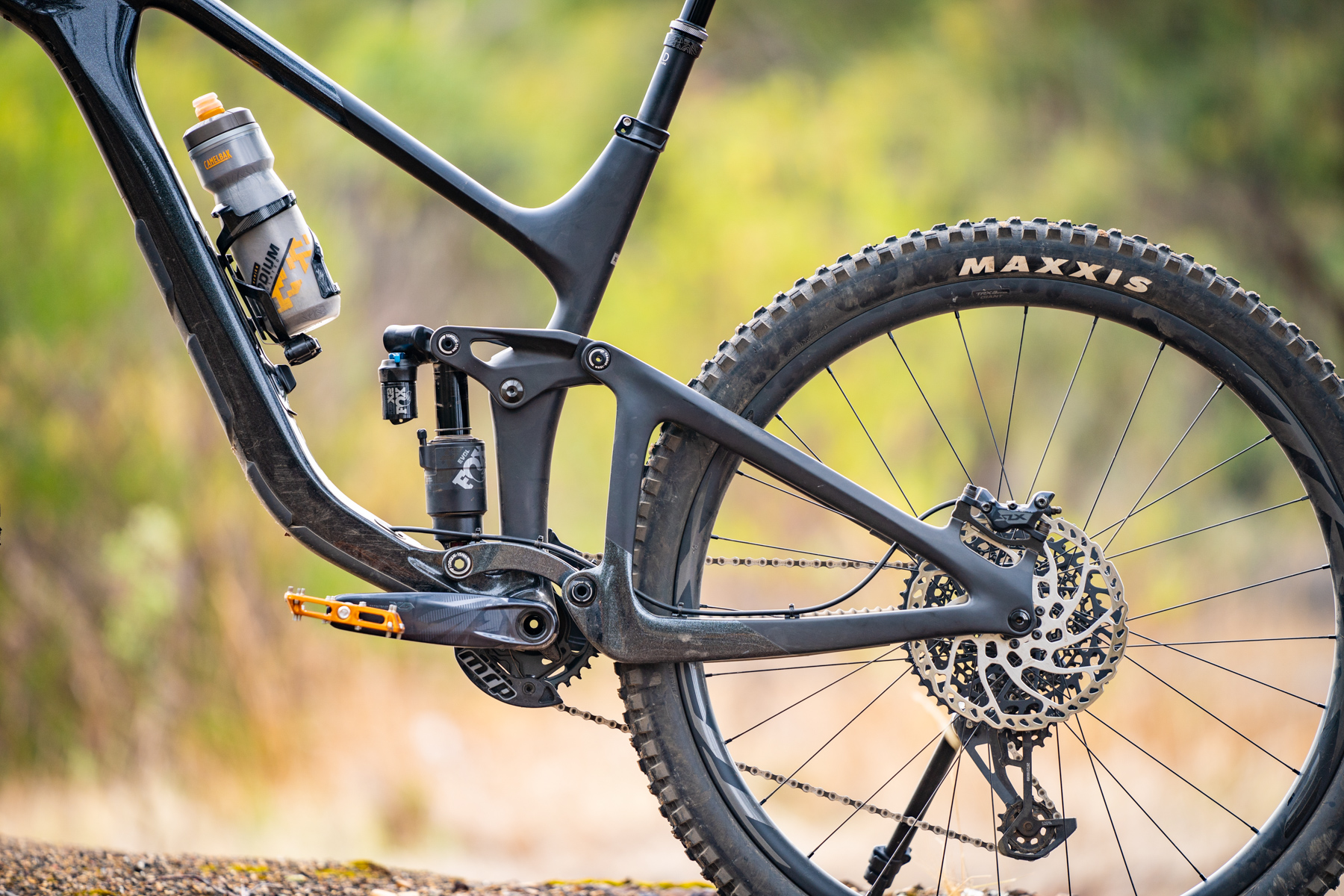
With flip chips allowing for high, mid and low positions, the Reign allows riders to dial in the bike’s geometry for riding style, trail type or wheel configuration. With the flip-chip set to the low position, the 63.5° head angle rewards those that like to attack the descents. On the flip side, the high setting raises the BB to provide greater clearance for technical climbs, which are aided by the nice and steep seat tube angle of nearly 78°. We did however find that in this high-BB setting, the bike felt quite tall and awkward to handle. This setting does also allow the party animals out there to drop in a 27.5in rear wheel to go full-mullet if desired. All models also come with an adjustable long-stroke dropper post, which is a great feature by our books. The burly frame protection is well placed and provides not only great protection, but a nice and quiet ride regardless of how teeth-chattering the trail is.
The all-new Reign is as attractive as enduro bikes come these days, both in its curvy, understated aesthetic (we think), and its four competitively priced, well spec’d models. The Reign SX model has also made a comeback, with this model sitting even further in the gnar-zone, and features a dual crown fork and coil shock for those that have no interest in pedalling up, and full interest in sending big. You can see all of the specs, prices and details of the full lineup in our first-look article.
To dive deeper into just why we think this bike deserves its place on the list of the latest and greatest, check out our full 2023 Giant Reign review .
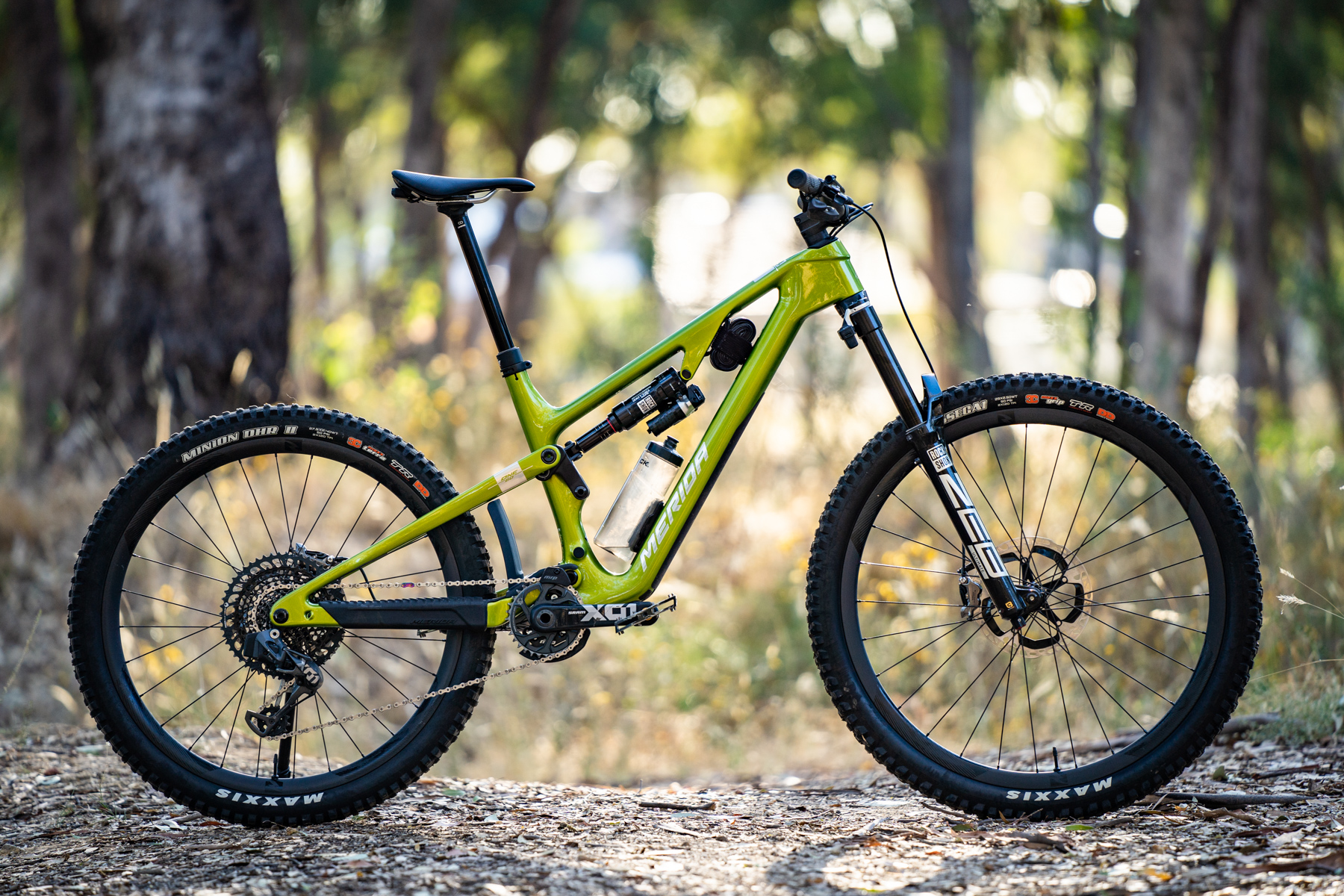
Merida One-Sixty
Highs: Modern enduro geometry, super playful suspension characteristics, mullet compatibility, 230mm dropper post, wide offering of models to suit most riders. Lows: Cramped in-frame storage, issues with dropper post on test bike, headset cable routing
Gracing our eyeballs since its launch in late-2022 is the completely redesigned Merida One-Sixty. The aim of the game was to deliver one of the most playful, capable and versatile enduro bikes on the market. And gee-whiz, has Merida delivered.
From the very moment it was released, the One-Sixty struck us as an entirely different bike when placed next to its predecessor. And upon our first five minutes on the trail, we were able to confidently confirm that it too feels like an entirely new bike. The One-Sixty is right on the money with modern enduro bike geometry, employing a playful mix of longer, lower and slacker to result in a rig that is just as comfortable on backcountry epics as it is the enduro race stages — a statement few current bikes out there can boast.
The One-Sixty offers a few interesting changes between sizes. Firstly, sizes up to the medium come stocked with a 27.5in rear wheel and the large and XL options as full 29ers. The suspension receives a size-specific tune and making the leverage ratio more progressive the further up the sizing chart you move, providing greater support for heavier riders. When rocking the mullet configuration, the frame offers 171mm of rear travel, while opting for the 29er will reduce it to 160mm. This ample rear squish paired with a 170mm fork —or 180mm if you want to go big — makes this bike feel just at home on full-blown downhill laps as it does on undulating adventure rides. The head angle sits at a relaxed 64° whereas the very steep 79° seat angle still provides a comfortable climbing position.
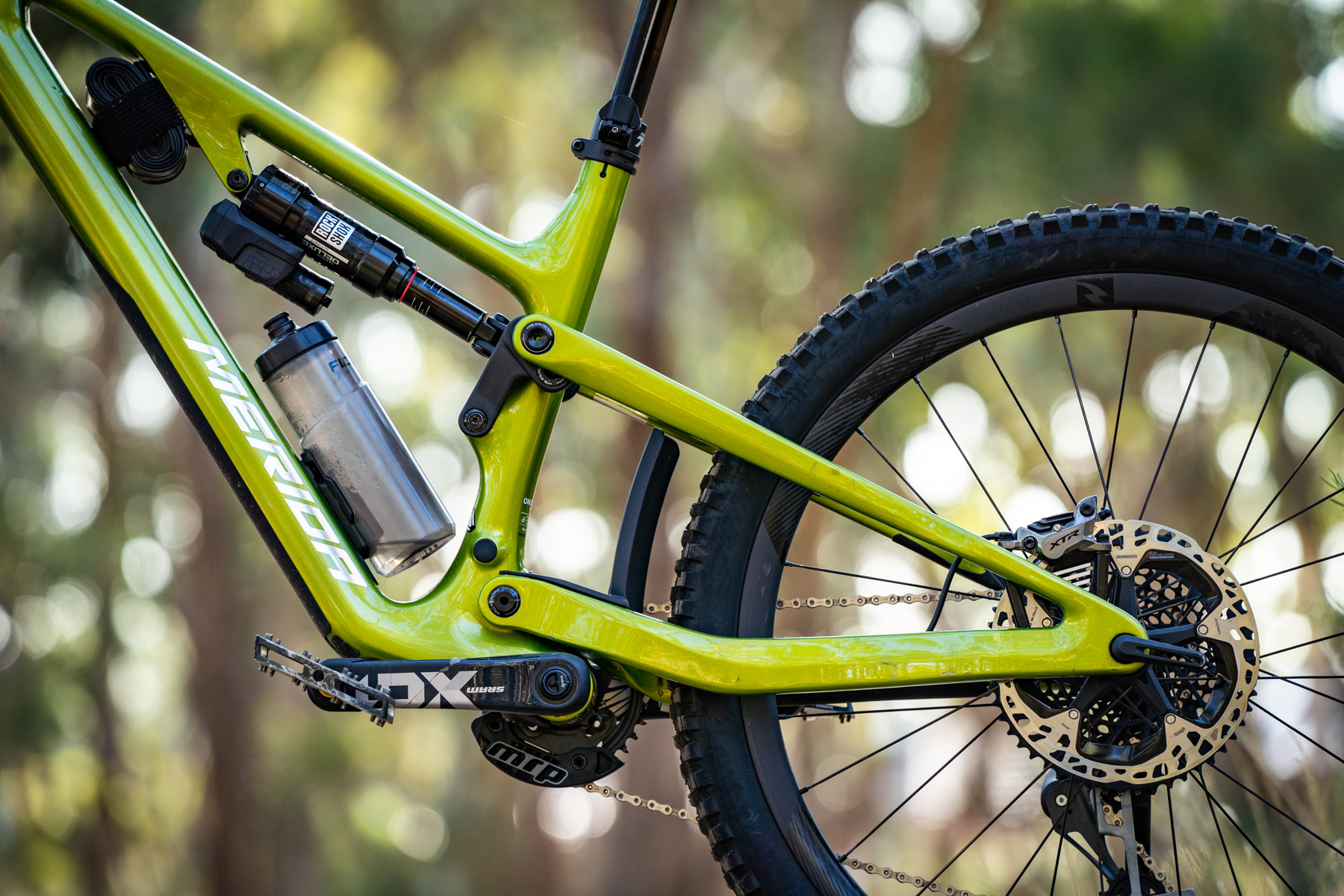
Merida has now done away with the rearmost pivot on the bike, instead opting for a Flexstay rear triangle that the brand claims to boost stiffness, drops weight and creates a unique, lively ride characteristic. We can confirm that this bike is particularly playful, popping off jumps and blasting through chunky terrain with an energetic feel. The excellent seat angle on the One-Sixty places you in a comfortable position to tackle the climbs, however the lively suspension kinematic does feel a little over-zealous when you’re cranking hard out of the saddle.
The bike feels incredibly agile on those particularly curvy trails when the smaller rear wheel is dropped in — a fact that is far less apparent when running the 29er option. The tradeoff here is the increase in high-speed stability and composure on technical climbs. The great thing is, any new One-Sixty model in any size will be able to take either setup with the flip of a 2-position chip in the rear linkage.
The One-Sixty is available in 5 different models spanning both alloy and carbon chassis, each boasting a solid assortment of tiered spec options. Ranging from value-focused fit-outs to the stuff our wallets have nightmares about, we are genuinely impressed at Merida’s offering of a race-ready enduro bike the entire way through the lineup. Every model benefits from the same geometry, mullet options, primo Maxxis rubber and 230mm adjustable dropper post. Nice one, Merida!
Whether you’re looking to enter the gnarly end of the sport or you’re up for a blingy new upgrade to your fleet, check out the Merida One-Sixty review to fill yourself in on the rest of the tech, the niggling issues we encountered, alongside a side-by-side comparison to one of the most popular enduro rigs on the market.
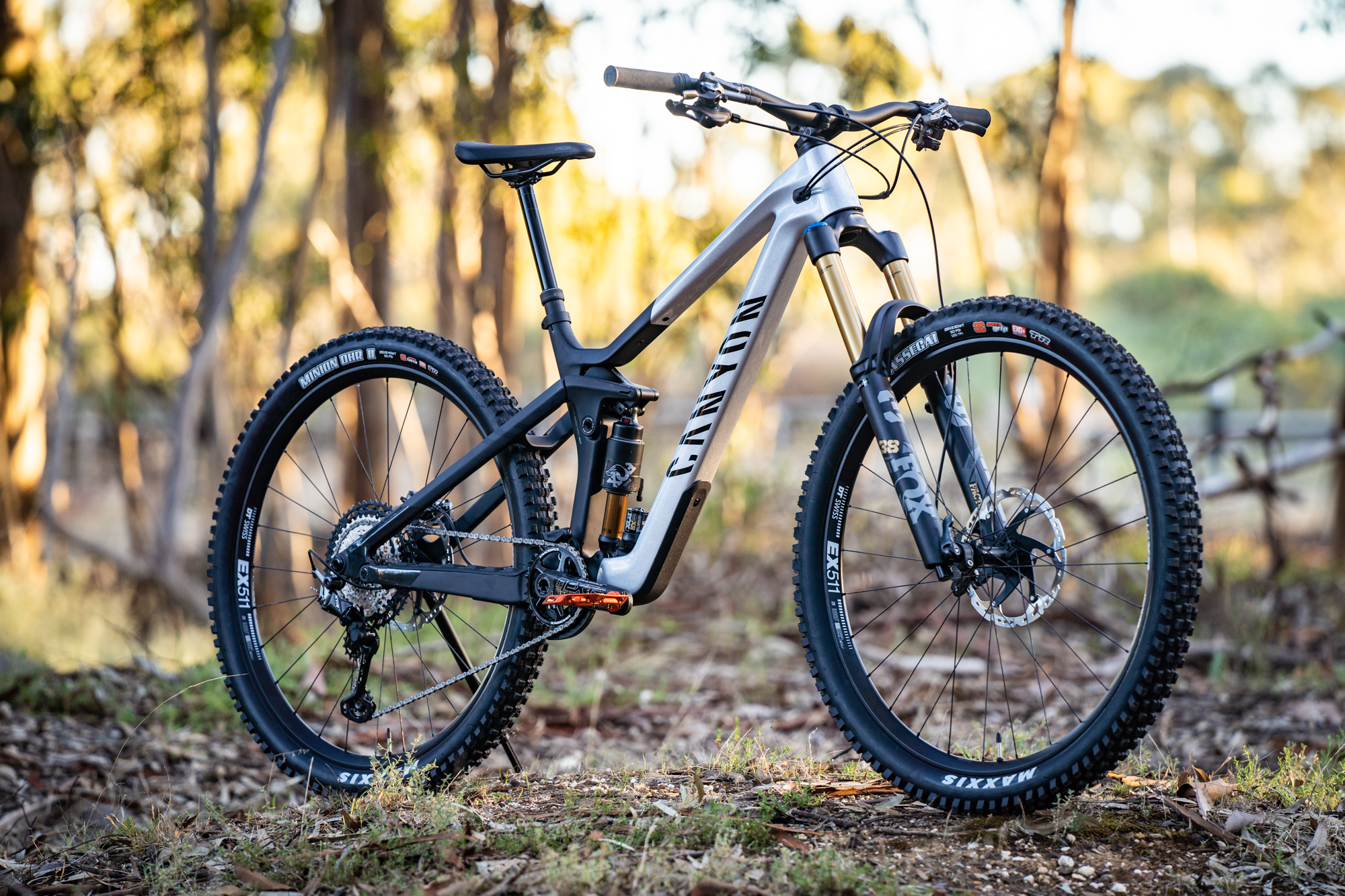
Canyon Strive
Highs: One of the most race-aligned production bikes available, versatile personality thanks to the Shapeshifter, incredibly stable at speed through any kind of terrain. Lows: Race-focused geo makes it less appropriate for everyday riders, and length makes the bike tougher to handle on tighter trails.
The Canyon Strive. Perhaps one of the most aggressive and well-known enduro sleds received a remake for 2022, incorporating feedback from racers like 2021 EWS Champion Jack Moir — before he changed teams of course. The result is something wildly aggressive, a veritable weapon beneath the right rider.
But what has changed from the previous model? To cope with the increasingly bonkers nature of modern enduro stages and the breakneck speeds they are raced at, the latest Strive CFR has been given a drastic update, taking it from one of the most conservative to one of the most aggressive, race-focused bikes out there. Travel has been bumped up from 150 to 160mm, which is paired to a 170mm fork. As previously, the bike still features Canyon’s trademark Shapeshifter system in order to radicalise the geometry to the extent it has.
For those unfamiliar, the Shapeshifter is a handlebar remote-activated system with two options – Pedal or Shred. This lever activates a gas spring in the rear shock, altering the bike’s geometry, travel and suspension kinematics on the fly. This allows the rider to shorten travel to a much rampier 140mm, raise BB height by 15mm and steepen the head angle by 1.5°.
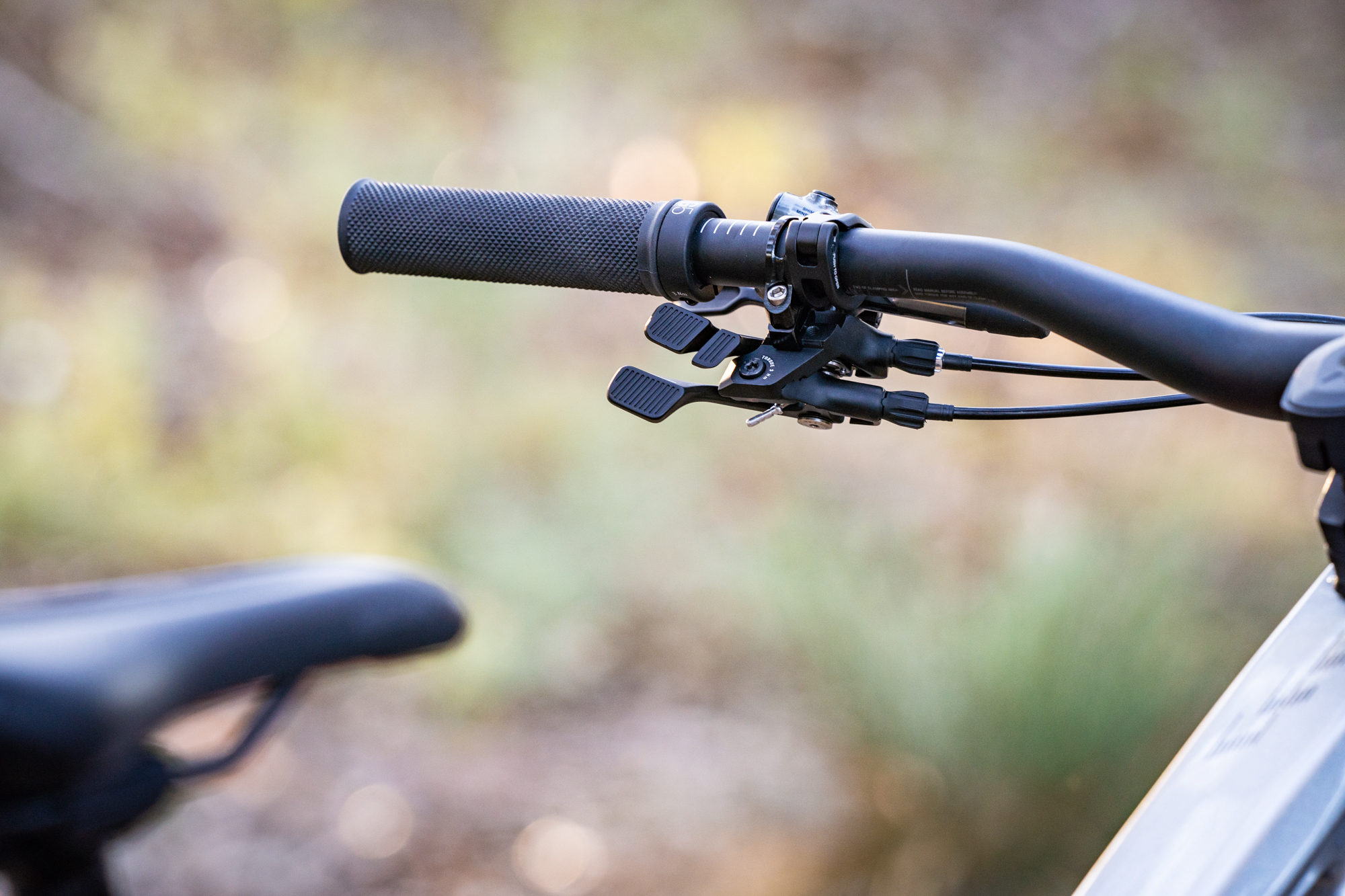
Whether you’re stomping on the pedals in flat sections or conserving energy on the climbs, the Shapeshifter can lead to significant benefits in a race setting. With such powers being brought to your fingertips, this granted the Canyon team the freedom to make this bike seriously aggressive when in Shred mode. Sporting a mega-slack 63° head angle (the same as Canyon’s DH bike, the Sender), this bike feels right at home on the enduro circuit’s steepest trails. To further add to the Strive’s race alignment, reach has been stretched out to a very long 480mm on a medium — a figure that would not be uncommon on many competing brands’ large frames. So you’re able to actually reach the bars at all, a nice’n’steep 76.5° seat angle puts riders in a reasonably comfortable pedalling position, while a nifty reach adjust headset allows further dial-ability of your cockpit.
There are currently just three models available in the Strive, including an extra-pimped out special edition Troy Lee Designs model for those chasing the same look and spec list as the Canyon team riders.
There is so much more to this weapon than we were able to cover here, so make sure you take a look over the 2022 Canyon Strive Review to fill in on the specifics.
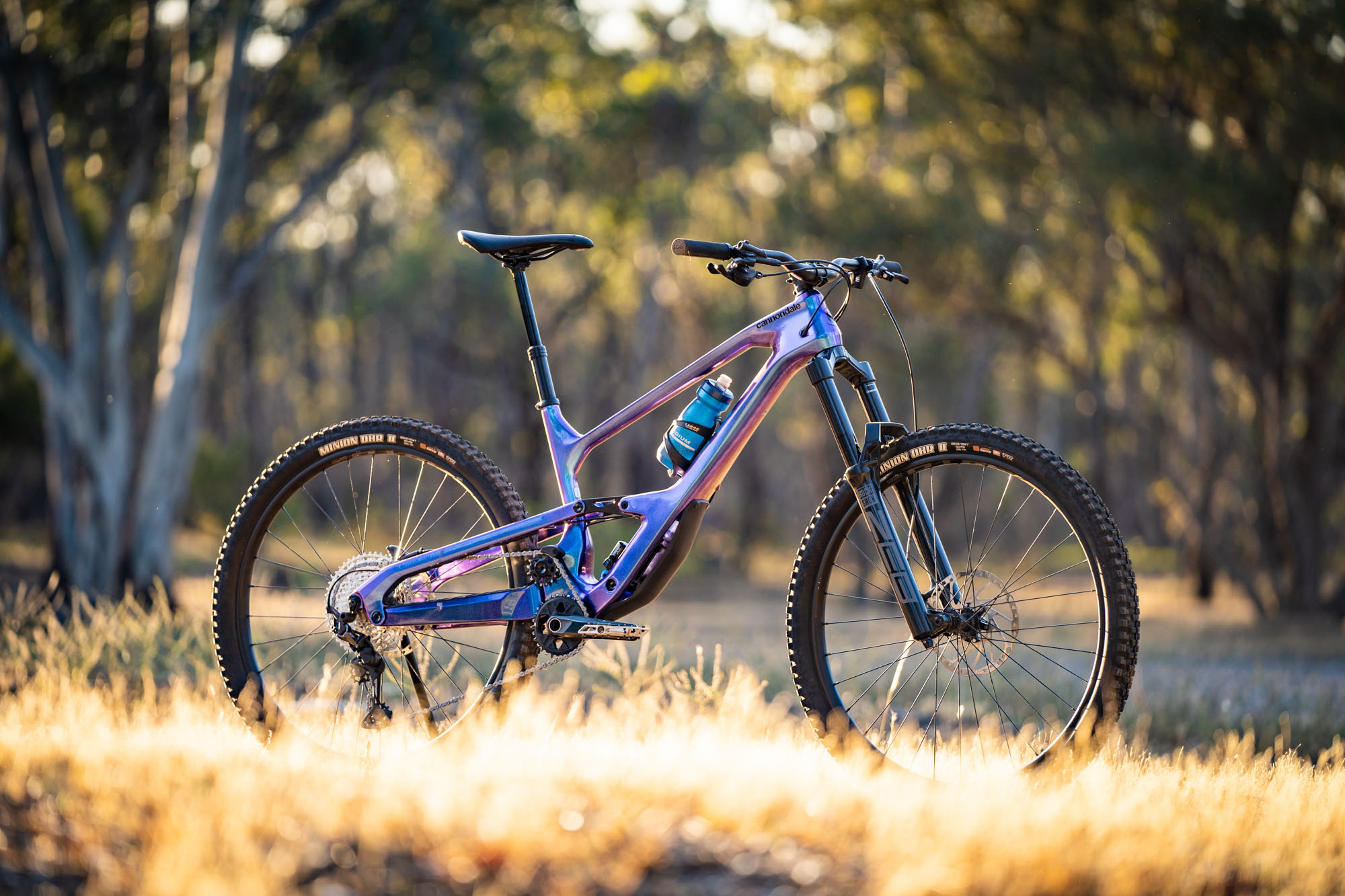
Cannondale Jekyll
Highs: Unique design delivers excellent stability and handling, scaled rear centre between sizes, double-take factor. Lows: Could use a longer dropper post, shock cavity captures trail crud.
While we’ve now had a bit of time to process the new Jekyll since its greatly hyped release in mid-2021, we still can’t help but let out a little sheeesh every time we see one. Cannondale caused quite a stir with their addition to the growing family of high-pivot enduro sleds , taking a truly innovative approach to their offering geared towards the rowdy end of the sport.
Just one look at this bike tells you that it is something different. The unique frame delivers 165mm of well-balanced, progressive squish via a redesigned four-bar linkage, driving a rear shock that sits tucked exceptionally low in its downtube hollow. A 170mm fork up front completes the equation, making this a ride created to deal with some seriously gnarly terrain. The real eye-catching feature of this bike is its mid-high pivot design, implemented to provide a more rearward axle path that makes it feel as though the suspension doesn’t just soak up those square edge hits, but instead moves with the terrain.
An idler pulley then helps to minimise chain growth and pedal-kick as the suspension moves through its travel. You’ll find a similarly situated pivot placement on the GT Force, and a much higher pivot design on the Norco Range, among a few other long-travel bikes on the market. The Jekyll is 29in specific, with no adjustable geometry or flip chips to be found. This renders the bike incapable of rocking the mullet hairstyle, just in case you were wondering.

But when the going gets tough, how do these space-age aesthetics and fancy features translate into on-trail performance? The Jekyll’s well-balanced geometry, supple suspension and thoughtfully selected components make for an incredibly stable bike at high speed, while also not feeling as long and cumbersome as some of the other enduro-specific rides out there today.
The bike is reasonably hefty, with our large-size test bike weighing in at 16.14kg, however much of this weight sits low in the frame, adding to its feeling of unmovable stability and rail-like cornering. The highly active suspension can be felt on steep climbs, and the climb switch on the shock is made difficult to reach due to the shock’s tucked-away placement. A 77.5° seat angle does however position the rider comfortably for stints in the saddle. When it comes down to it though, it is the descending prowess of the Jekyll that really shines. A 64° head angle and tall riser bar give this bike a fun yet sure-footed feeling at any speed. We do however wish that Cannondale stocked this bike with a longer dropper, with the 150mm dropper post limiting manoeuvrability.
There are two Jekyll models available, both with the same carbon frame and high-pivot design, offering a mid-level and a high-end fit-out. Both models are great value, however we imagine that many folks wanting to race this bike may have a few initial upgrades that they might make before it reaches that A-list spec that we all dream of. Another cool thing? Each size of the Jekyll comes with slightly altered pivot placements, scaling the rear centre, retaining a balanced position and optimising suspension kinematics for different sized riders.
Overall, we’re mighty impressed with this striking enduro whip, performing exceptionally well throughout our testing period regardless of what we threw at it. To dive further into the Jekyll’s nooks, crannies and hollows, take a read of our full review here .
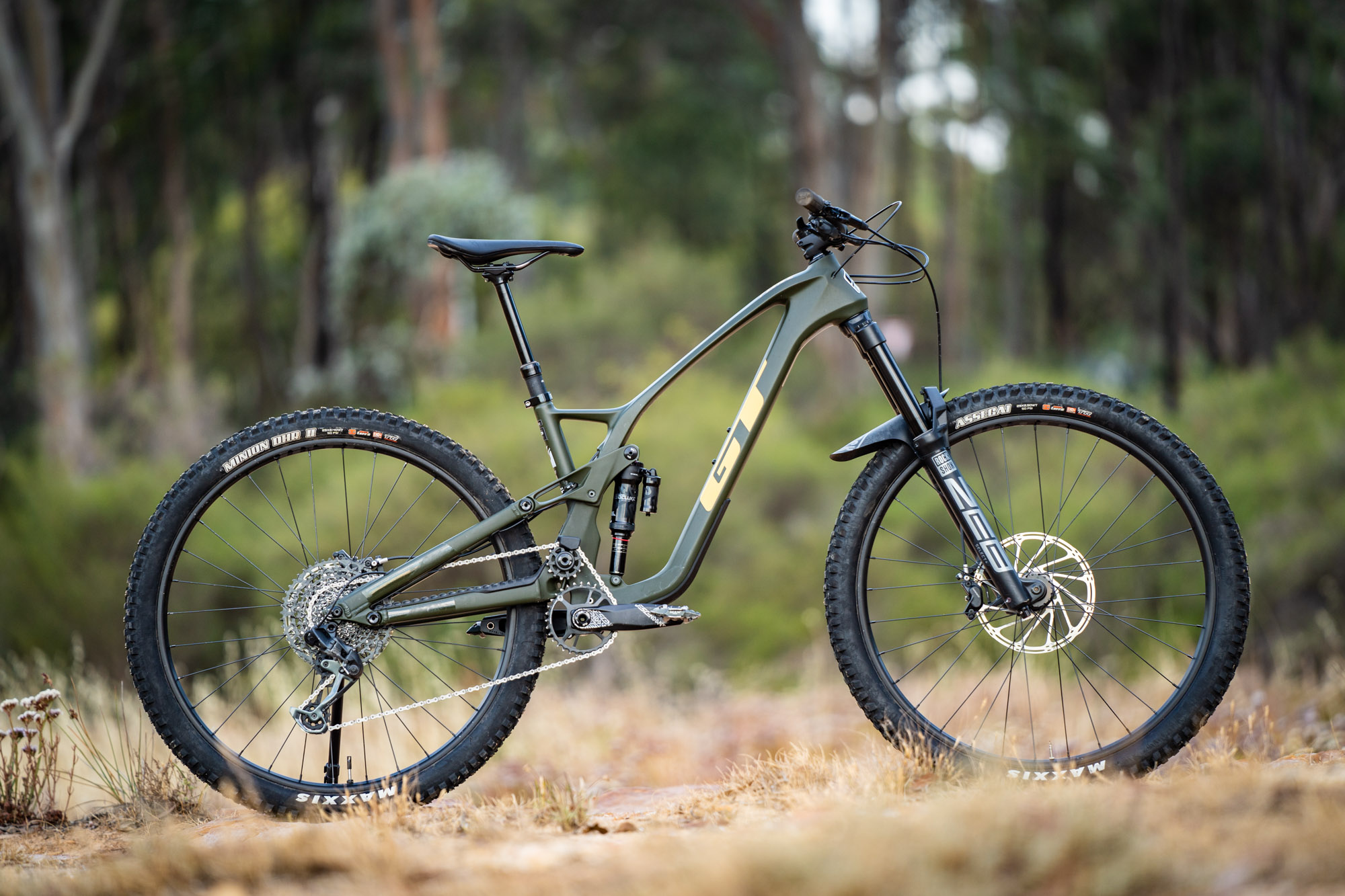
Highs: Incredibly capable descender, adjustable dropouts, immediately comfortable geometry. Lows: Hefty, sluggish on the climbs, fairly noisy.
Having played things rather conservatively in years gone by, GT has made a statement with the release of the Force for 2022. An undeniable shred-sled, the Force is a high-pivot monster with an insatiable appetite for sketchy terrain. But is it perfect? Read on to find out.
The GT Force is an exclusively 29in enduro beast with a set of credentials that immediately tell you exactly what this bike is about. At 16.24kg for a size medium with a carbon mainframe and alloy rear triangle, the bike is no featherweight fighter. It rocks 170mm up front paired with 160mm at the rear, with the mid-high pivot, four bar suspension layout tracing a slightly rearward axle path over the traditional up-and-down movement, albeit moving only about 10mm backwards as it plunges through its travel. This does however help the bike to not only deal with chunky terrain, but also accelerate through it as you hurtle your way down just about anything in front of you. The idler pulley then helps to deal with chain growth and pedal kickback, a similar design to what you’ll find on the Cannondale Jekyll and the Norco Range.
The 63.5° head angle, towering stack height and out-of-the-box riser bars means this bike will excel on anything pointing downwards, be it enduro stages or downhill bike park laps. A very steep seat angle of 78° balances such aggressive numbers nicely, making it quite a comfortable bike to climb on, too. However, the aforementioned weight of the bike will still have you working hard for those trailheads. The rear dropouts on the Force feature a flip chip that allows riders to extend or shorten the length of the bike, dialling in its character to suit the rider style or terrain, be it tight and jibby, or freight-train-without-brakes kinda riding.
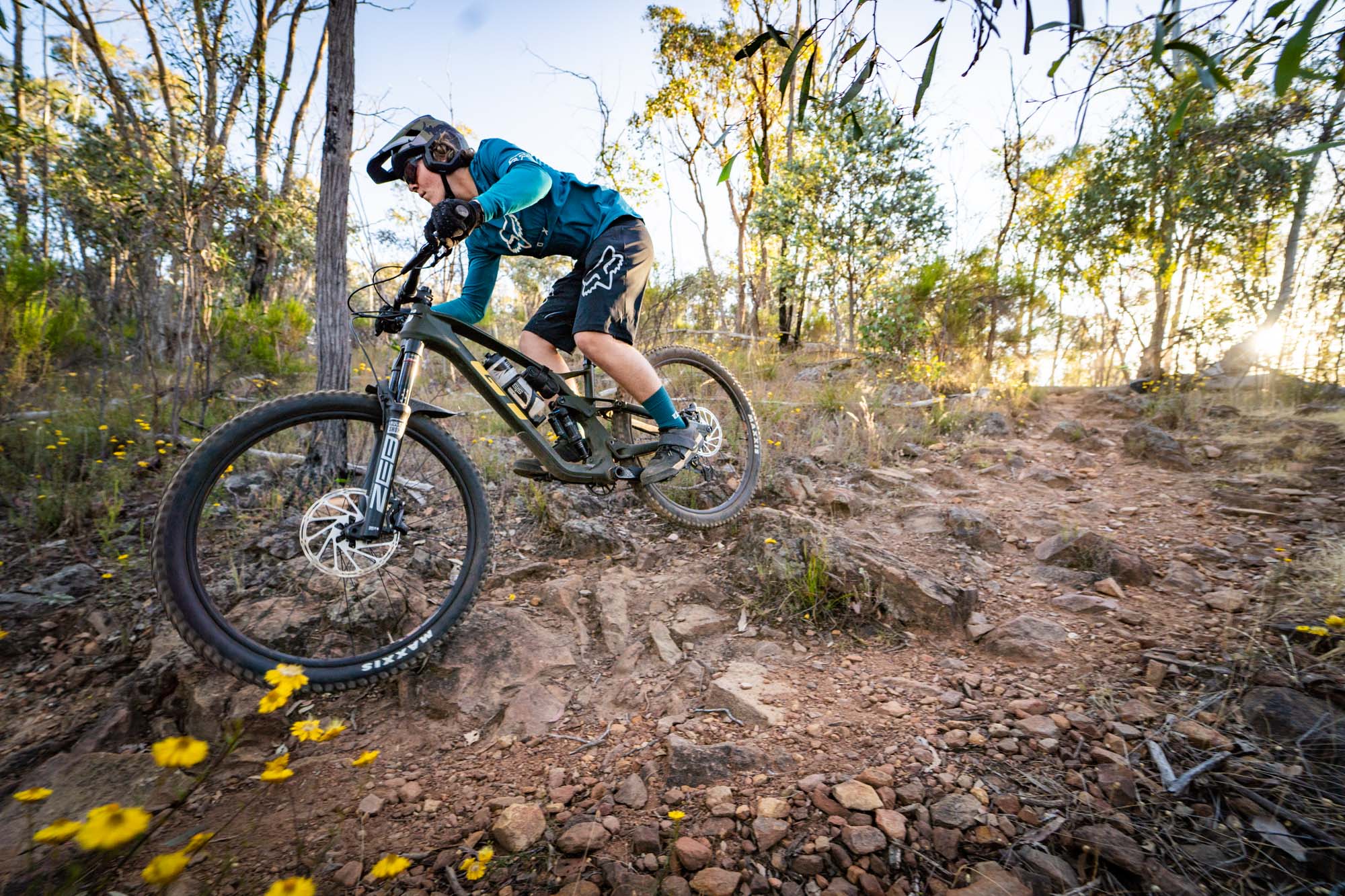
The suspension on the Force does take a bit of noodle-scratching to figure out, with us having to remove fork tokens and stray from recommended suspension pressures before we landed on a set-up that felt balanced. Once we did though, this bike felt phenomenal, tracking the terrain beautifully and making us want to push harder through the sketchy stuff than we usually feel comfortable doing.
With all of these praises, it must also be mentioned that this bike is by no means quiet. Chain angle in the lower gears causes noisy rubbing on the idler pulley chain guide, and cable routing is noisy and causes rubbing at points.
When we reviewed the Force there were three models available, however for 2023 it appears PSI is only bringing the top-end Force Carbon Pro LE into Australia. This build comes in at $7,999 AUD, and features a slick set of running gear from Rockshox and SRAM.
We had a lot to say about this bike, and not all could be said here. Head over to the full review of the GT Force to get the rest of the good stuff!
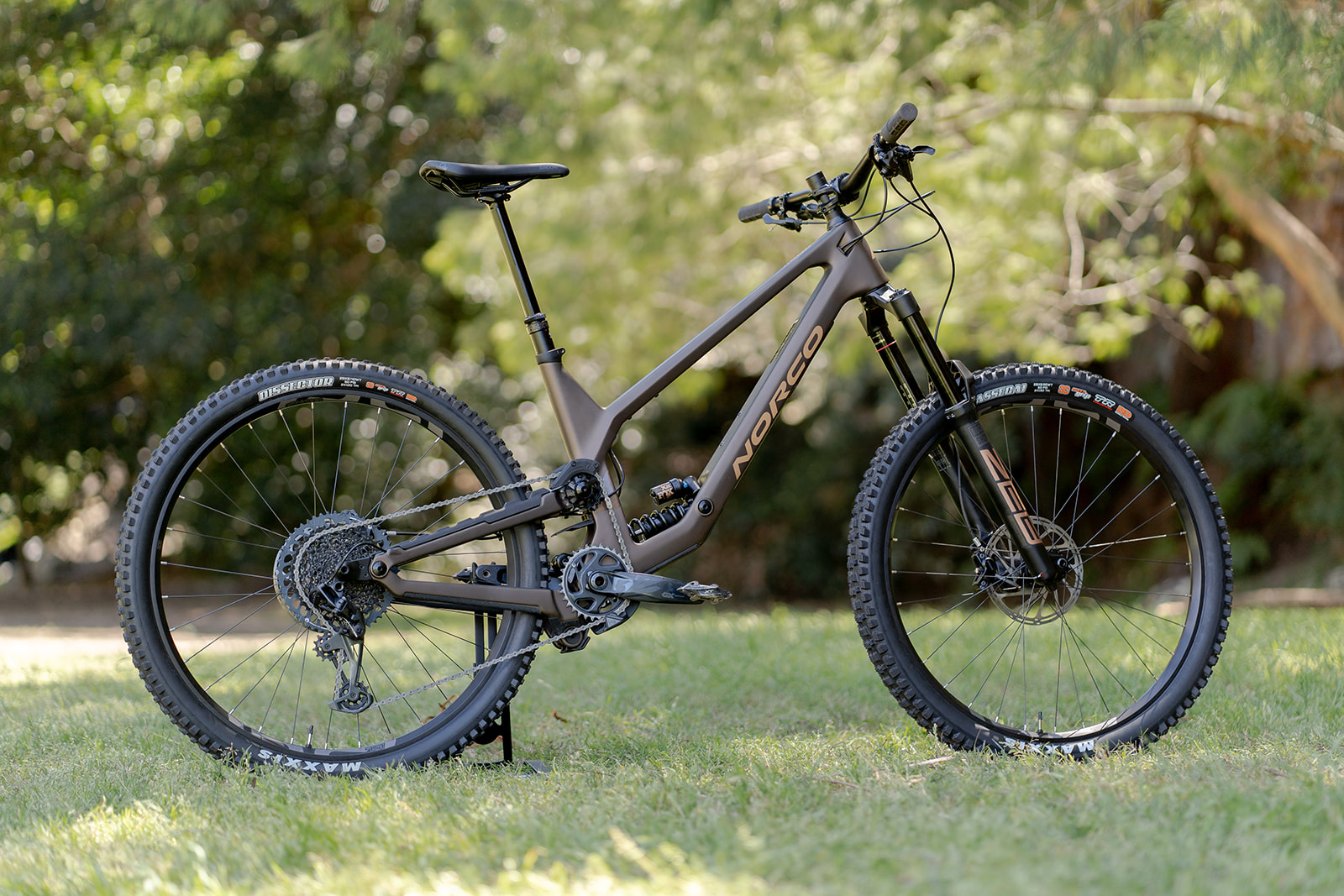
Norco Range
Highs: Incredibly capable and confidence-inspiring descending, great tyre combo Lows: Lifting the bike above ankle-height, manoeuvrability on tighter trails
After a four-year run with the previous layout, 2022 brought us the hotly anticipated redesigned Norco Range. A high pivot, low-slung monster truck of a bike that doesn’t just excel on rough trails, but devours them.
We’ll start this off by addressing the elephant in the room. This is one big-boned beast. Our Large size Norco Range C2 test bike, with its carbon chassis, 29in hoops, tubeless-setup DoubleDown tyres, coil shock, GX drivetrain with idler pulley and a chainring bash guard for good measure, all came in at a hefty 17.15kg. This figure puts it well beyond most of the enduro field we have ever tested, and even places it amongst some of the lighter e-MTBs out there.
When the terrain points down however, this weight all but goes out the window, making this bike one seriously aggressive high-speed descender. 170mm of super supple travel front and rear, the frame employs a funky Virtual High Pivot design that allows this bike to swallow entire trails whole. The linkage allows the rear wheel to move significantly backwards as the suspension compresses, meaning it can avoid becoming hung up on large square-edge hits, allowing you to track perfectly — and rapidly — across the gnarliest terrain imaginable.

The idler pulley, much like the GT Force and the Cannondale Jekyll, prevents chain growth and reduces pedal kickback while the linkage does its thing. A mega-slack head angle of 63.25° makes the handling feel like a DH bike on the descents, while a conversely steep 77° seat angle means this bike is actually quite comfortable to climb —providing you’re not in a rush to get where you’re going. With the distant reach and the bike growing in length as the suspension compresses, it can be a tough rig to wrangle on tight trails, preferring to hold the wide line around most corners as opposed to cutting in tight. In fact, it’s actually quite difficult to break traction on this beast, meaning you’ll want to pick your line from the start, hold on tight and let this beast of a bike do its thing.
The Range features size-specific geometry with a scaled rear centre length to ensure weight distribution remains optimal regardless of frame or rider size, retaining the same confidence-inspiring handling characteristics across the size curve.
The Range is made up of three models, spanning from mid-level to high-end componentry, all coming ready to race right out of the box.
If you want to find out more about the bike that could double as the boulder that chased Indiana Jones in the first movie, then check out our full 2022 Norco Range review here.
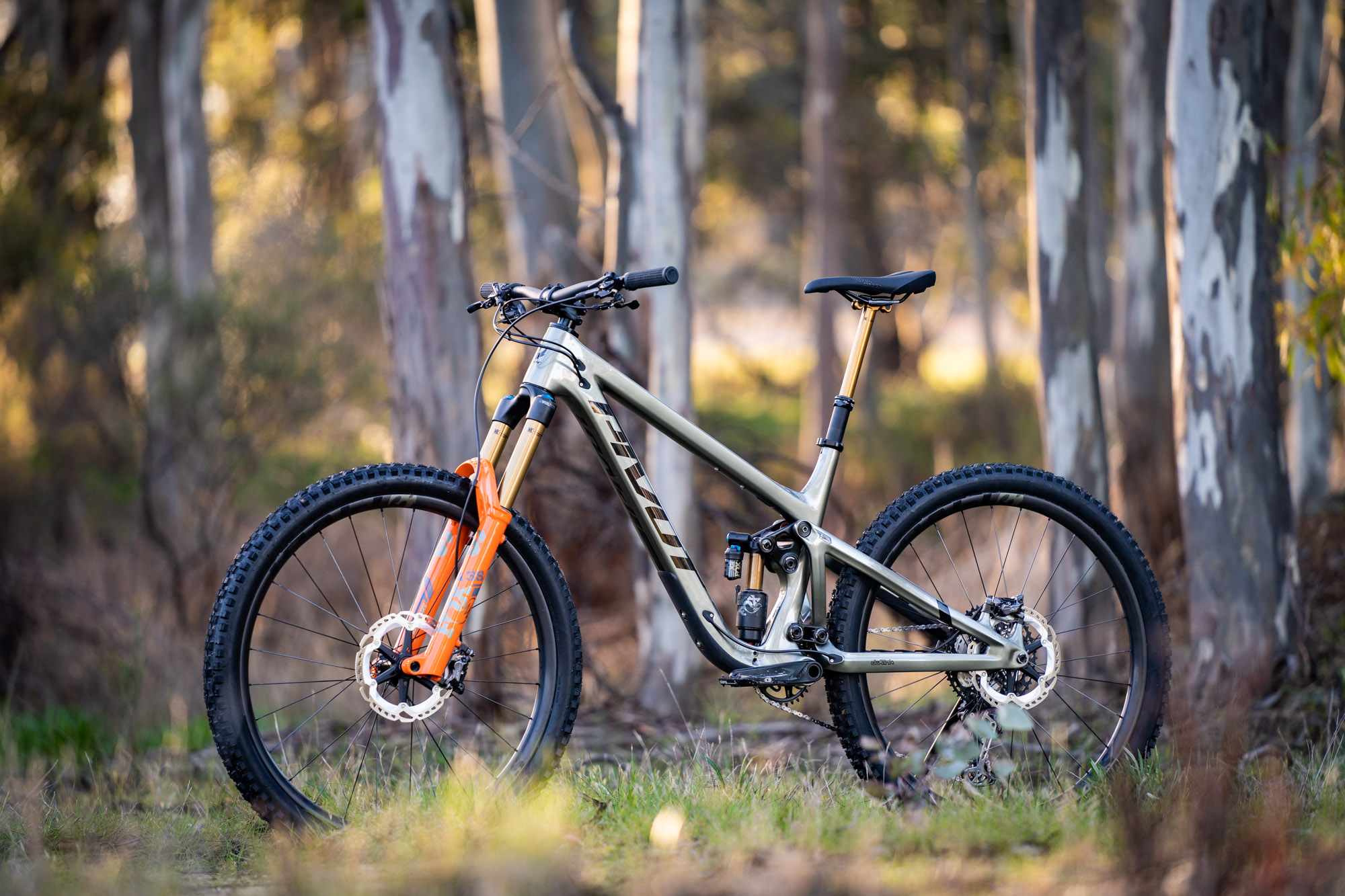
Pivot Firebird
Highs: Super stable yet responsive feeling on rough terrain, still a fun bike on more chilled and longer rides, bling bling Lows: Eye-watering price tag, rattle from gear and dropper cables, under-gunned tyres
After 13 years and four highly successful preceding models, the Pivot Firebird has entered its 5th evolution for the 2022 season. And damn, is this thing a stunner. We assure you that these clean, refined looks are only surface level however, with the Firebird 29 being one seriously mean bike the moment you throw the leg over it.
It wouldn’t be incorrect to label the Firebird 29 as the fighter jet of enduro bikes, being an ultra-premium, high-performance ride worthy of the World’s fastest pilots. Its sleek carbon frame delivers 165mm of travel, which is paired with a 170mm fork and rolling on fancy 29in wheels out of the box. This can be set up to suit just about any rider however, with a 2-position flip-chip enabling a 0.6° head angle alteration and 6mm BB height adjustment, or a mullet conversion if desired. The frame will also handle swapping out to a 180mm fork if you’re that way declined. Head angle in the low position sits at a relaxed 64°, with the seat angle spanning between 76°-77° – a figure that fluctuates based on the frame size. Yep, the rear centre of each frame is scaled to suit the size, ensuring a balanced weight distribution of the rider regardless of the selected frame size.
These geometric figures place the Firebird right within the range of modern enduro bikes, positioning the rider from the get-go to conquer any descent or climb before them. It is the incredibly balanced, super progressive suspension characteristics of this bike that really make it shine through. The DW-link design delivers insane traction and a rearward axle path, meaning obstacles become less of a concern as you charge through them faster than you previously thought possible. The nuance of this bike that helps it stand apart from others in the category however is its lively feeling. Where some other bikes truck through chunky rock sections in a straight line as you barely register their existence, the Firebird retains a delicate feedback beneath you that allows you to manipulate the bike as you please without it ever feeling uncomfortable — a trait being the result of a light, stiff frame, balanced geometry, well-tuned suspension and superb componentry.

The overall weight of our Large test bike came to 14.66kg, an impressive figure for a long-travel enduro bike. This number does factor in the lightweight EXO+ tyre casings however, which we found to be insufficient for the kind of riding this bike is otherwise capable of.
The Pivot Firebird comes in a mind-boggling 15 spec combinations, the “most affordable” of them still a staggering $10999. With this kind of price tag though, you can be sure that you’re not just getting a pretty showbike, but a mean, performance-oriented machine that lives for the top step of the podium. But yes, it does look pretty damn sweet too.
If you need any more convincing on the prowess of this bike, jump over to our full review of the 2022 Pivot Firebird 29 her e.
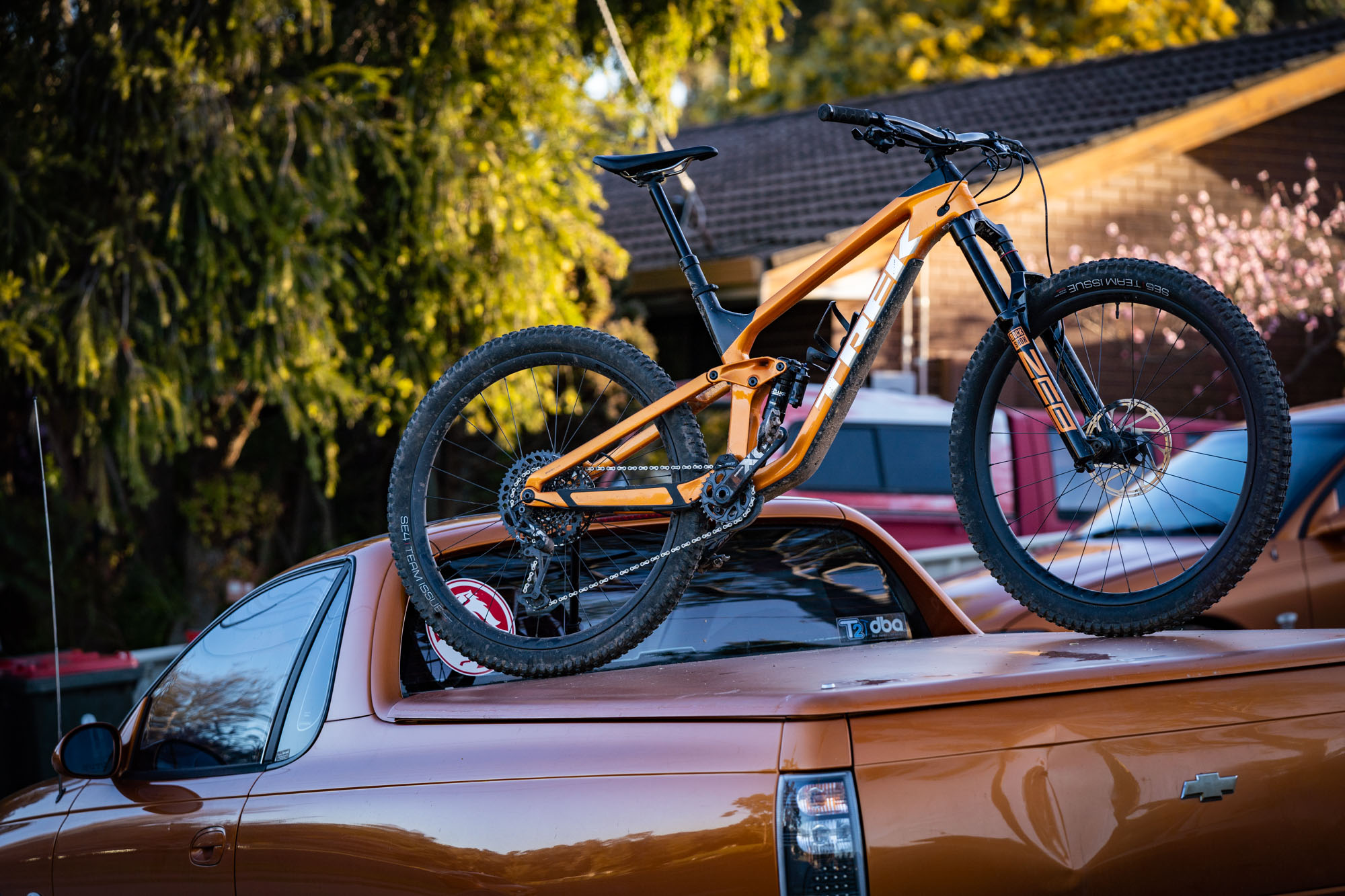
Highs: Supple yet very lively suspension performance, quiet ride, well armoured Lows: Comparatively slack seat angle, tight access to in-frame storage
The Slash. The very silhouette of this bike is instantly recognisable, there’s a good chance you’ll spot one model or another out on the trails on any given day. The 2021 season saw Trek’s flagship enduro rig undergo a major overhaul, making one of the world’s most popular enduro bikes better than ever before. So, what’s new?
To cope with the rigorous demands and silly speeds of modern enduro racing, the Slash has added 10mm of travel to both ends of the bike, with 170mm up front and 160mm at the rear. Trek, alongside RockShox, have co-designed a proprietary rear shock, especially for the Slash that delivers a supremely responsive and buttery feeling to the suspension regardless of the trail type or conditions. This is largely due to the ultra-tuneable proprietary rear shock found throughout most of the range. The overall package delivers quite a progressive spring rate, meaning we were able to go big on this bike without ever feeling like we were blowing through the travel. Trek’s initial suspension setup guide also proved to be a great baseline that we didn’t need to stray far from at all.
However following RockShox’s major revamp of its boingers and the launch of Flight Attendant , Trek has shifted back into off-the-rack rear shocks.
From the moment we jumped on the Slash, we noticed the welcome changes over the geo of the previous model of Slash. Trek’s Mino Link flip-chip features a low and a high position, with the low position rocking a head angle of 64.1° and a seat tube angle of 75.7°. The high position will lift the BB height by 7mm and steepen the head and seat angles by 0.5°. This seat angle may just be one of the only slight niggles we have with the Slash’s geometry, sitting a little slacker than many other bikes within the category. Once we slid the seat forward on the rails however, this brought things to a much more comfortable climbing position, closer to 78°.
In fact, bike does climb surprisingly well, provided you remain seated. As soon as you stand up to put the power down, that super-active suspension will join the party and gobble up some of that precious energy you’re expending. The total package of our Slash 9.9 X01 came in at a very respectable 14.56kg, making it much more pleasant a bike for those longer days than much of the competition.
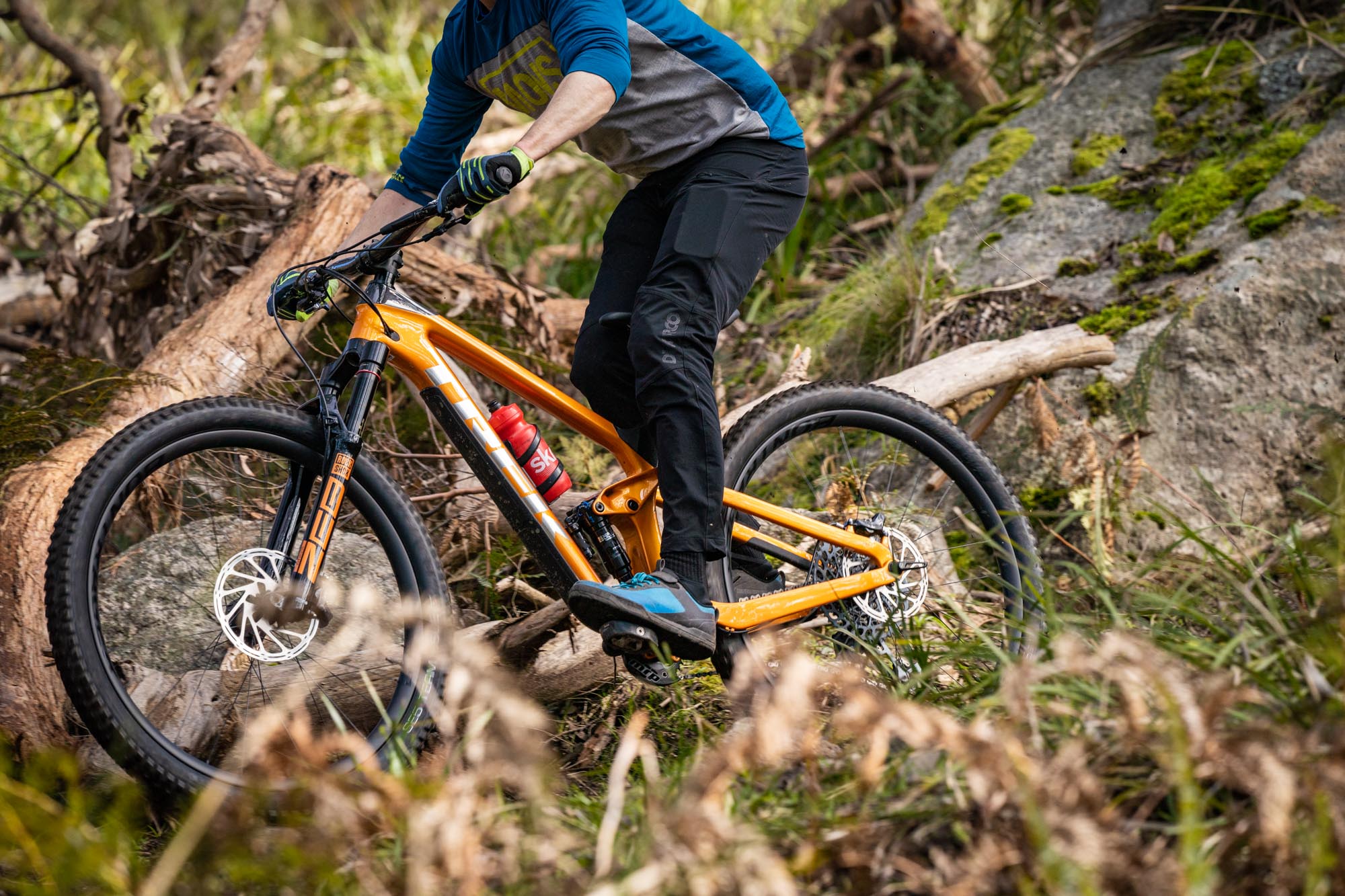
Although it can definitely be a plough-machine if that’s how you want to ride, the Slash is surprisingly playful despite having such supple and active suspension. If you want to switch line mid-send through a rock garden, the Slash will happily oblige. Much of this feeling comes down to the short chainstays, making it all too easy to shift weight over the back of the bike to maneuver how you see fit, aided further by the ample mid-stroke support that can give you that needed pop in the rough stuff if you want to get airborne. It possesses traction in spades, yet the playful nature and short stays of the bike allow you to break the rules and square corners off if you feel like it.
The closer you look, the more detail you’ll find on this bike. Trek have revised their Knock Block headset allowing greater range of motion before abruptly stopping, and beneath the bottle cage mounts you’ll find a handy, albeit rather tight downtube storage window. The frame protection is all exceptionally well placed and gave us peace of mind even on those particularly loose, rocky trails.
There are currently 10 models of the Slash available, ranging from entry-level alloy models through to robo-suspension space-bikes from the future.
All in all, we believe that the Slash is one enduro bike that isn’t just defined by its geo chart, instead excelling in areas that pleasantly surprised us once out on the trail, culminating in an exhilarating and incredibly fun ride. And for most of us, isn’t that why we ride in the first place?
There is plenty more to learn about this mega-fun enduro bike, so make sure you take a read over our full review of the 2021 Trek Slash to fill in on the rest. But, Trek has also just revamped its big travel bruiser, and changed the suspension layout to a high-pivot design. We have one coming to Flow HQ, but in the meantime, here’s what you need to know.
Honourable mentions
While our list here is of the creme de la creme of the category, there are a pair of bikes that we felt also garnered a mention on this list.
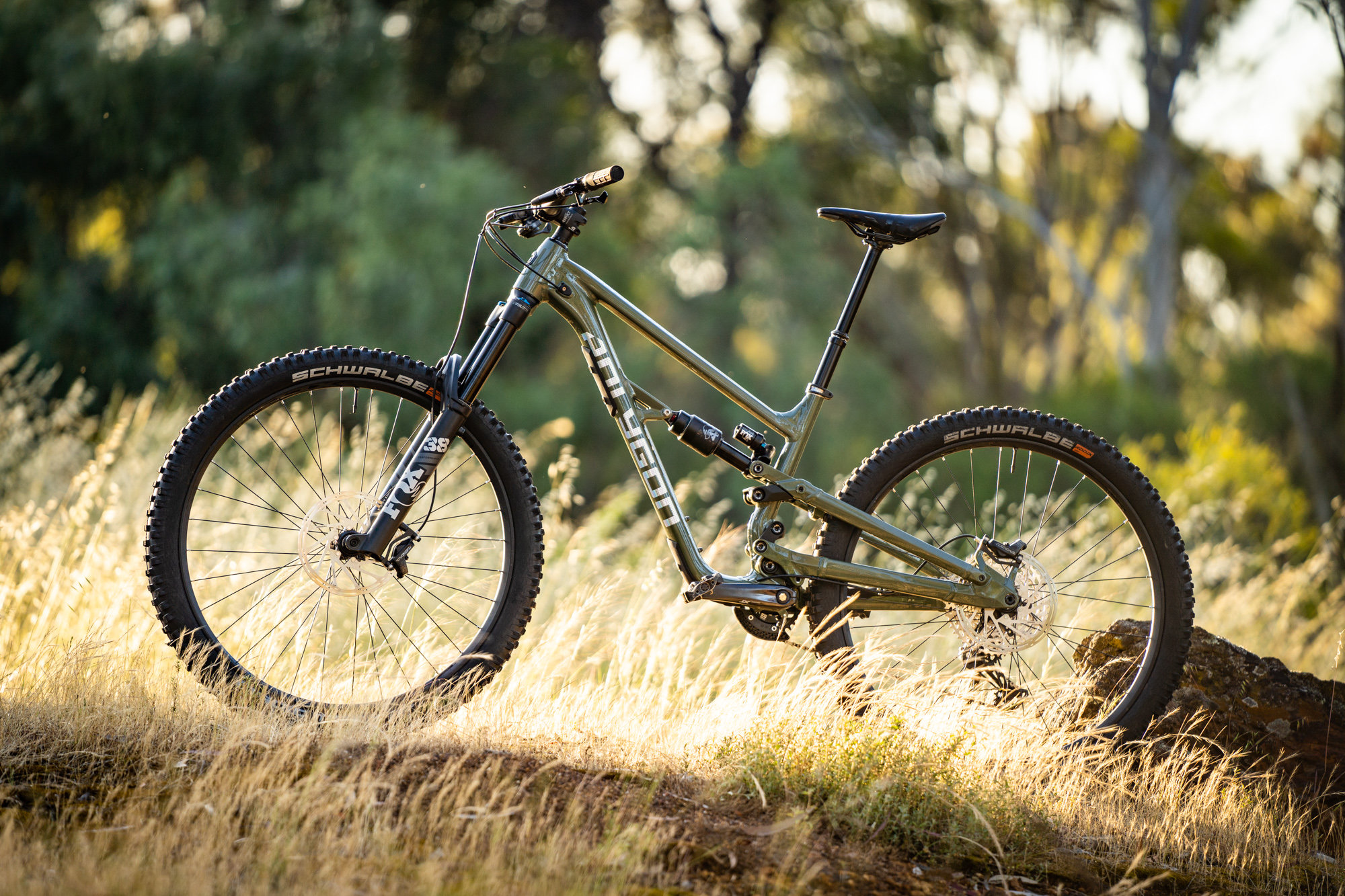
Polygon Collosus N9
First up is the Polygon Collosus. This alloy bruiser has a solid build kit and spot-on geometry, and with a competitive price tag, we expect you’ll see a lot of these ripping around your local trails.

With chunky tyres and supple suspension, it hugs the ground like it’s made from velcro and laughs in the face of rough and technical terrain. The IFS suspension platform also gives it fantastic pedal efficiency, but it has 16 pivot bearings that will need to be looked after over the lifespan of the bike.
With that, it’s chonky at 17.88kg, it lacks mullet compatibility and tool storage or accessory mounts.
But priced at $4,999 AUD, it’s half the cost of some of the other bikes on this list and the value-to-capability proposition is through the roof. Read more about the Polygon Gollsus N9 here .
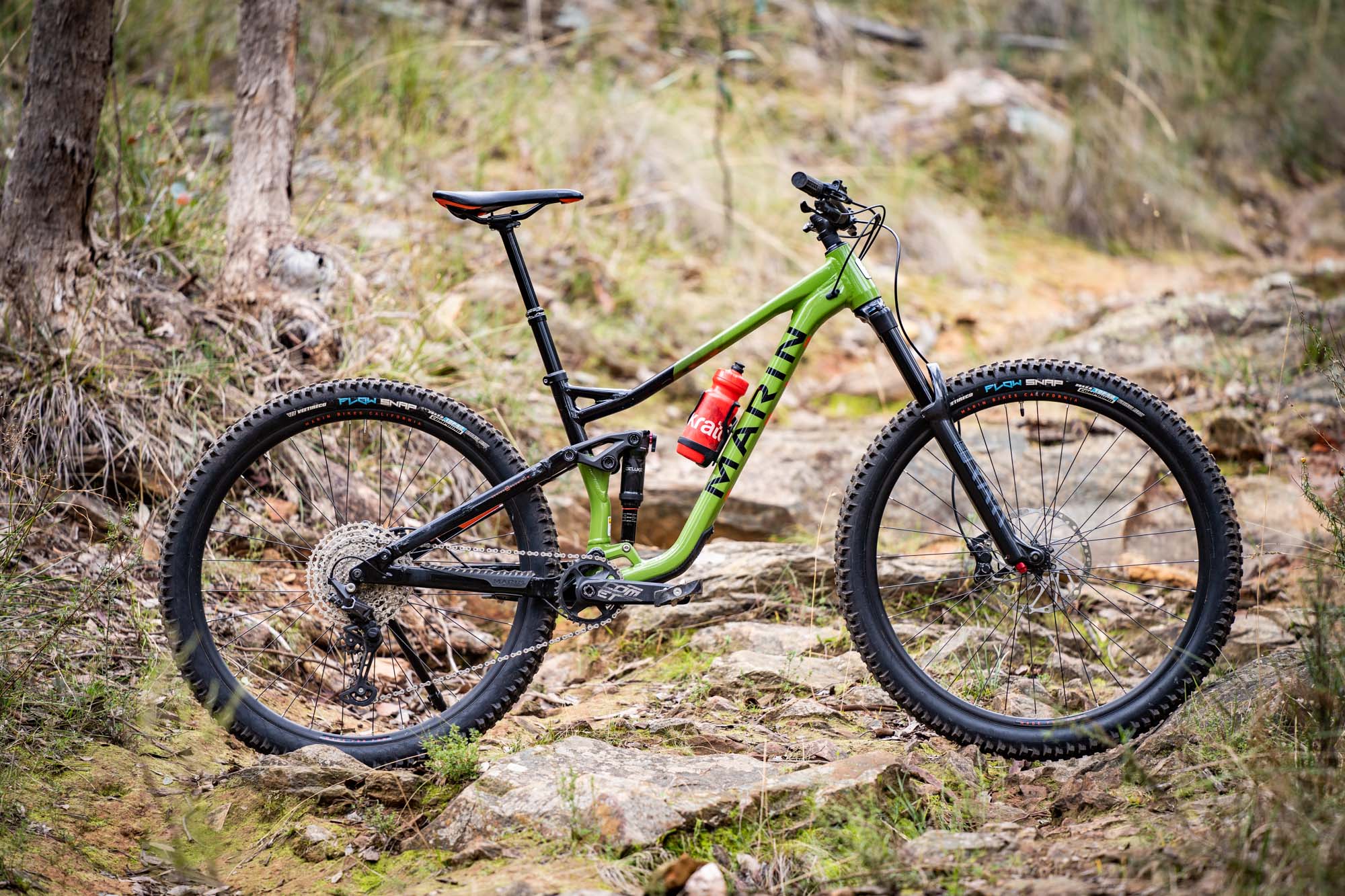
Marin Alpine Trail 7
Coming in below the $4,000 price barrier, the Marin Alpin Trail 7 is a stupendously capable bike for the money. Built around 150mm of rear travel and a 160mm fork, it’s one of those slightly shorter travel, but ready for shreddy steep and technical riding, bikes we mentioned at the top.
With a robust chassis and contemporary geometry paired with smooth and sorted suspension, it’s ready for hard-hitting descending and corner-ripping shenanigans. There’s is plenty of progression built into the rear suspension, so you can access all the travel, but it’s never obvious when you’ve run out.
The Alpine Trail 7 is for riders who prioritise getting down the mountain as fast as possible while being able to jump, jib and manual along the way. This is a bike that rewards and aggressive pilot on more demanding trails.
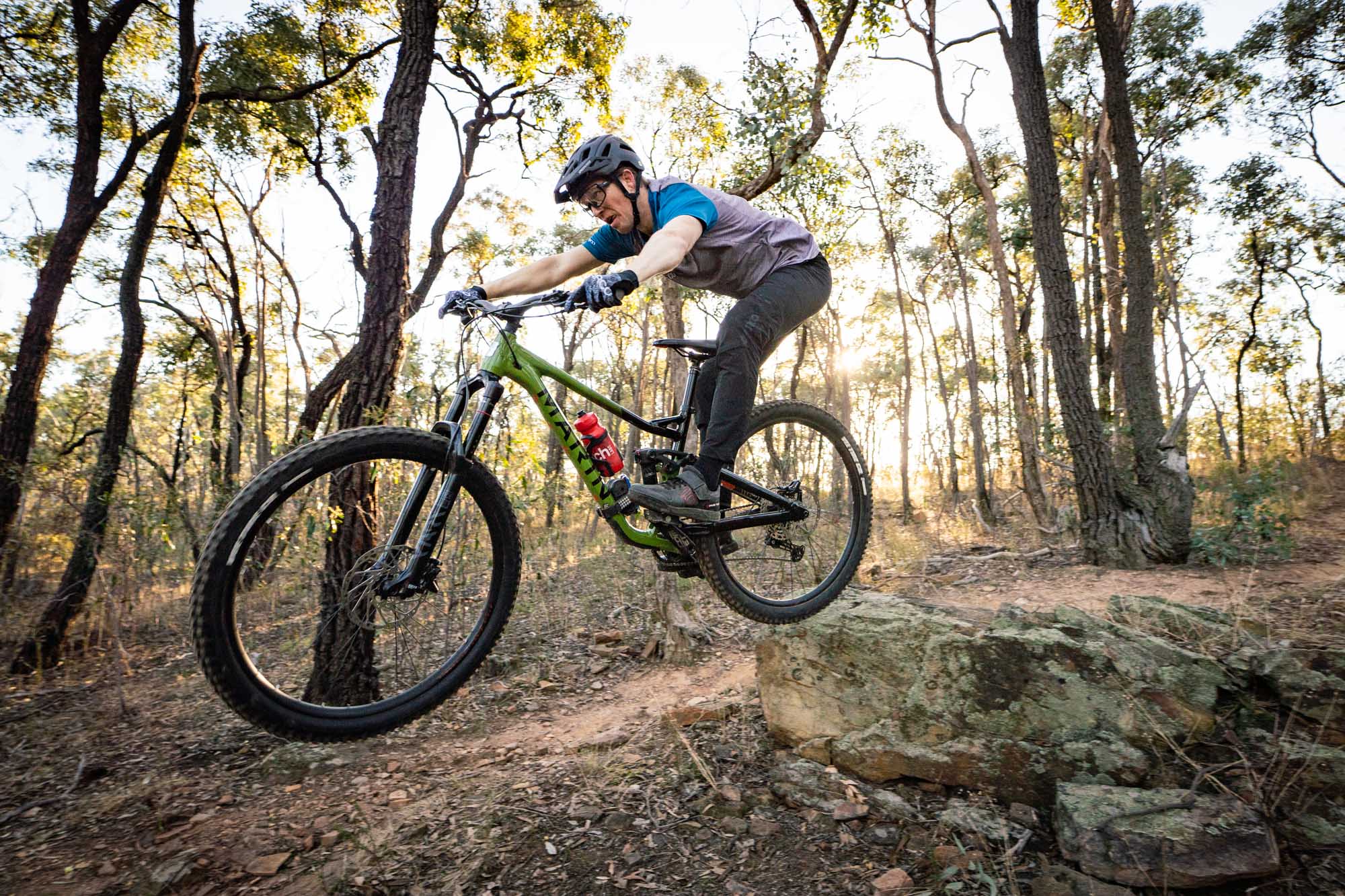
When things go back up, it’s not the sprightliest climber, and the rear end is active, which is a boon on crumbly surfaces and techy ascents. Thankfully there’s also a climb switch for when it’s time to put the watts down.
It’s not an all-day pedaller, but that’s not what it’s supposed to be, and there are other bikes in Marin’s range designed for that purpose. It’s gimmick-free, simple, well spec’d and a ball of fun to ride.
For more, read our full review of the Marin Alpine Trail 7 .
Wrapping up
Enduro has absolutely exploded, and the bikes are becoming ever more capable and reliable — as is a requisite of the racing format. There was a time not all that long ago, there would be an audible groan at the proposition of going uphill aboard a slacked-out gravity rig, with 160mm+ of rear travel. Now these bikes can tackle terrifyingly steep, nasty and rough gravity trails, and then pedal back up to the top no problem.
Better still, brands are taking these big travel bruisers in a tonne of different directions — high pivot vs non-high pivot, mullet vs no-mullet, etc. — and rethinking every aspect of these bikes all in the pursuit of creating the best enduro platform. With that, this is not an exhaustive list, and there are plenty of bikes we’d love to test, like the Forbidden Dreadnought, Nukeproof Mega and the new Santa Cruz Nomad — we have that last one coming, so stay tuned.
And with that, we’re constantly reviewing bikes, and we’ll be updating this feature as we come across more bikes worthy of this list.
If there’s something you’d like to see, sing out in the comments and let us know.
- Submit for Review
- Terms & Conditions
Enjoy reading this?
Get similar articles delivered directly to your inbox

Based on frame geometry and build specs.
A bike with lower gearing will be easier to ride up steep hills, while a higher top end means it will pedal faster down hills.
2021 T-160 RS v1
2022 Slash 8
2022 Mega 290 Alloy Pro
(descending)
Based on build material and quality level of the frame, fork, wheelset, groupset, suspension system, and more.

Trek Slash 8 review – The return of the champion

The Trek Slash 8 took top honours in last year’s affordable enduro bike group test. Rather than retire quietly, the Slash 8 has dusted off it’s championship belt and is back in the ring again. But, one year on, can the middle-weight still go 12 rounds with the big-hitters?

The Trek Slash 8 in detail
In 1981, Bill Gates supposedly once made the statement “640K ought to be enough for anybody.” Today, the latest iPhone 11 has nearly 10,000 times that capacity in its RAM. The same goes for bikes. When Trek launched the Slash back in 2016, with an (at the time) massive 160 / 150 mm of travel (for a 29er), we were blown away. It was a monster. Times have changed and in this test the Trek Slash 8 looks a little undergunned. However, there is life in the old dog yet and the Trek isn’t quite ready for retirement. After winning our test last year, we thought we would bring the Trek back for another round to see if it can hold onto its title. The carbon Slash was arguably the bike that started the long travel 29er movement, but it was the affordable aluminium version that attracted the masses with more aggressive geometry (8 mm longer reach and 0.8° steeper seat tube angle) and attractive € 2,999 price point. The Slash 8 features a 160 mm RockShox Yari RC fork and RockShox Deluxe RT3 RE:aktiv shock with Trek’s proprietary Thru Shaft technology. A SRAM GX Eagle drivetrain does the shifting, while SRAM Guide R brakes with 200/180 mm rotors reign in the fun (in more ways than one). The rest of the cockpit comes from Trek’s own Bontrager brand, as are the 150 mm dropper post and XR4 tires.
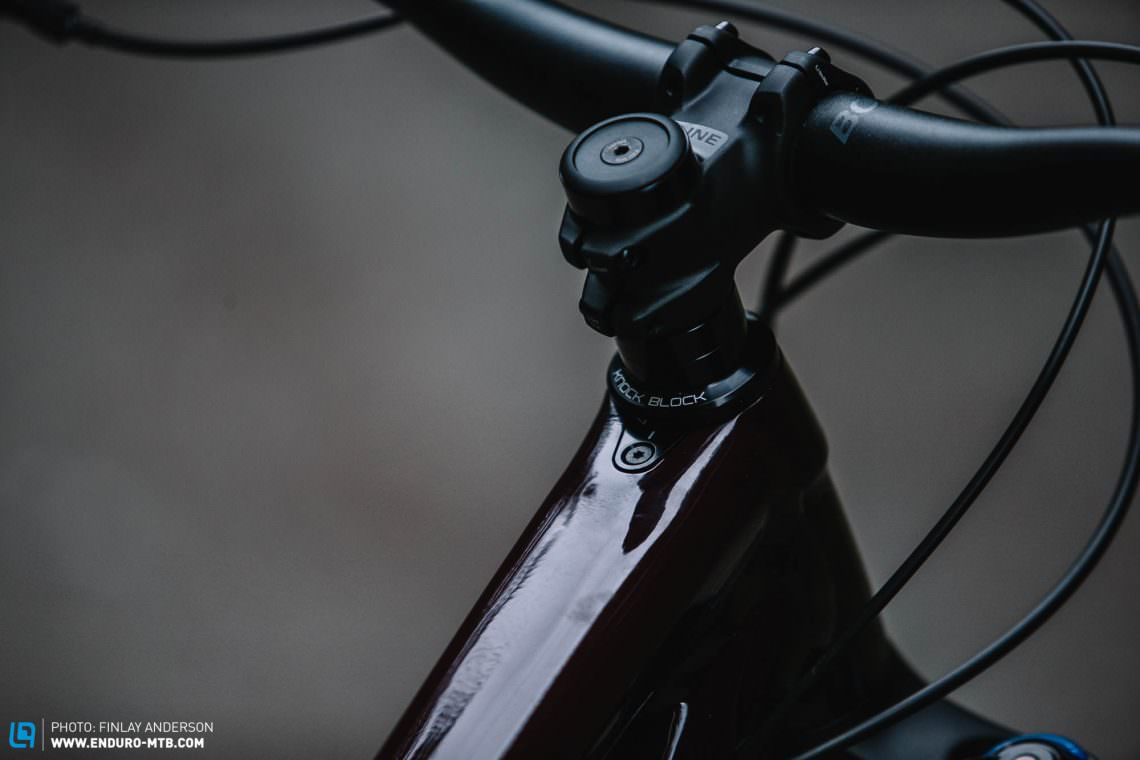
Trek Slash 8 29
Specifications.
Fork RockShox Yari R 160 mm Rear Shock RockShox Deluxe RT3 RE:aktiv Thru Shaft 150 mm Seatpost Bontrager Line 150 mm Brakes SRAM Guide R 200/180 mm Drivetrain SRAM GX Eagle 1x12 Stem Bontrager Line Knock Block 50 mm Handlebar Bontrager XR Elite 780 mm Wheelset Bontrager Line Comp 29" Tires Bontrager XR4 Team Issue 2.4"/2.4"
Technical Data
Size S M ML L XL Weight 14.4 kg
Specific Features
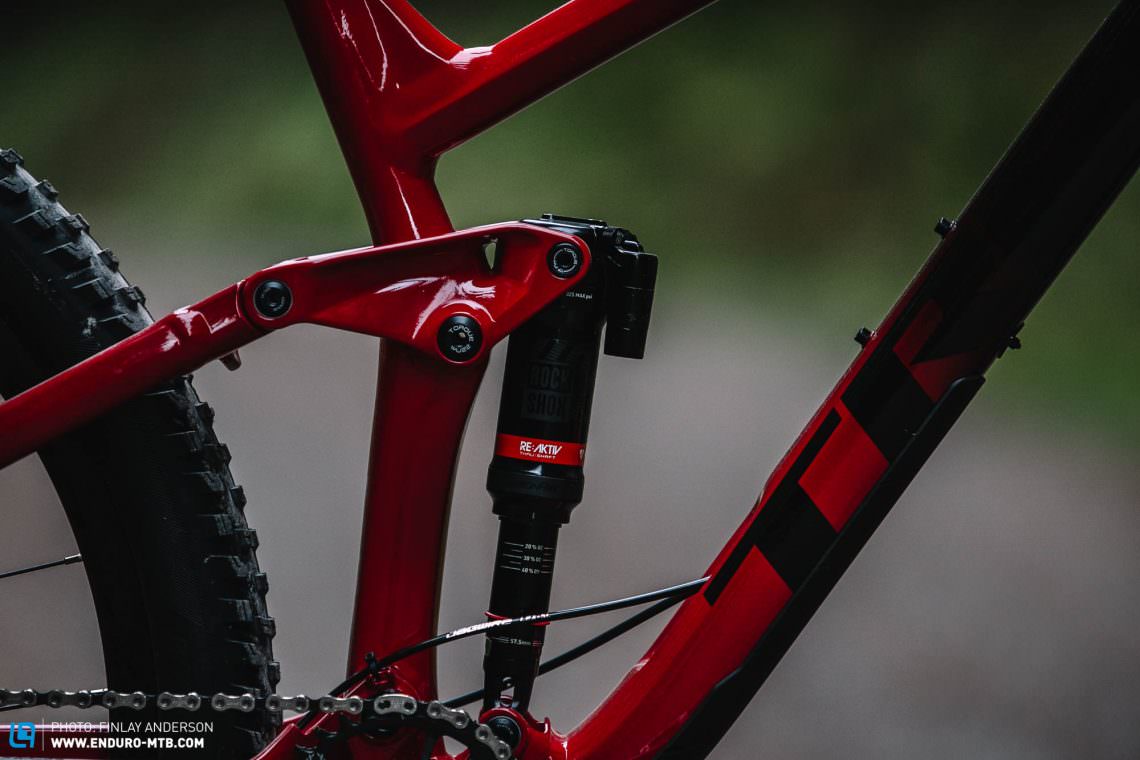
The geometry of the Trek Slash 8
The Trek comes with the geometry adjusting Mino Link, allowing you to swap between a steep and slack setting. As with most flip chips, we put the bike in the slack setting and left it there. Compared to the rest of the bikes in this test field, the Trek is the most conservative, with a short 453 mm reach in size Large, 1219 mm wheelbase and short 434 mm chainstays. The 65.1° head angle and slack 74.4° seat angle will disappoint those looking for radical geometry. The geometry is finished with a 621 mm stack and 28 mm bottom bracket drop.
Nimble, direct and balanced, we loved the way the Trek can skip from line to line as if it weighs 2kg less.
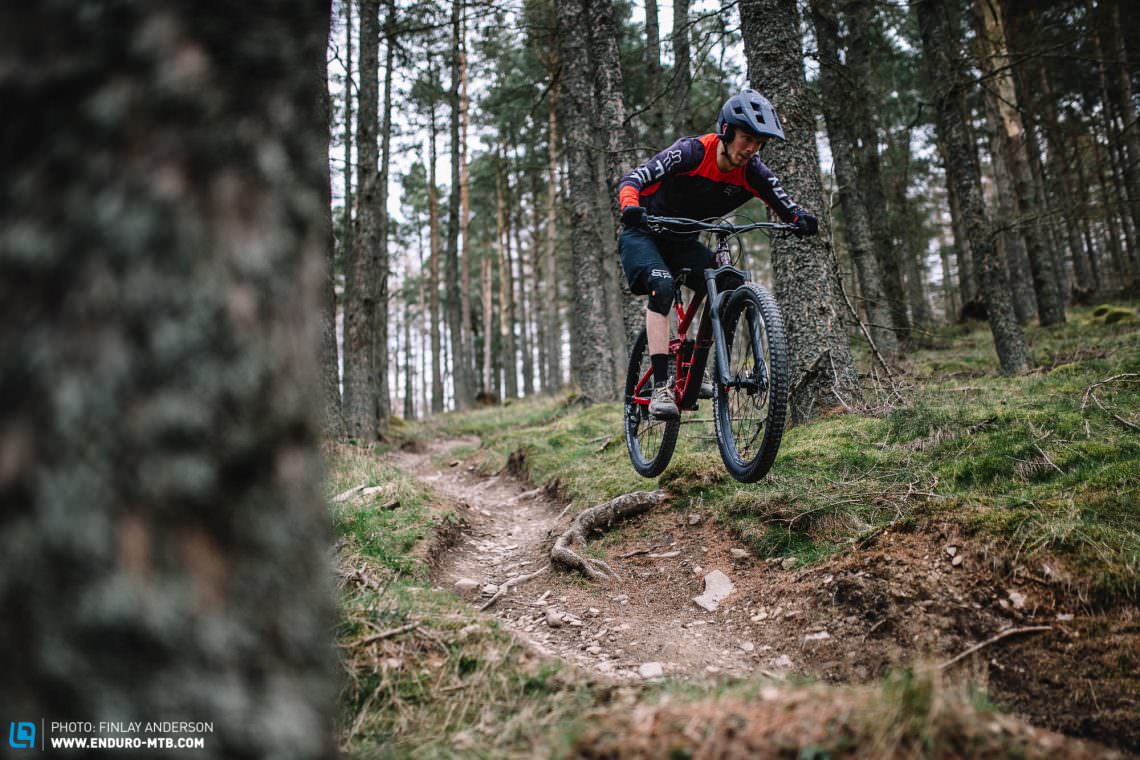
Refined and playful, the Trek Slash 8 on the trail
You can feel the heritage of the Trek Slash 8 as soon as you throw a leg over it. The position is familiar and easy going and while the short front triangle appears compact, the slacker seat tube angle ensures that you have plenty of room. Running the saddle fully forwards on the rails to steepen the seat tube for the climbs does bring you quite close to the bars for a head up and tall riding position. At 14.4kg, it’s the lightest bike in the test, and with the fast rolling Bontrager XR4 tires, it feels significantly more sprightly uphill than its competitors. Here it handles more like a long legged trail bike than an enduro bike. The Trek finds lots of traction if you take on the challenge of a technical uphill section and the compact dimensions help keep the front wheel tracking accurately. Anti-squat is moderate, so we found we were reaching for the climb switch of the RockShox Deluxe RT3 RE:aktiv shock to control pedal bob on long fire-road climbs in the bigger gears. Nonetheless, overall the Trek was the most pedal friendly of all the bikes on test.

Downhill, the Trek is a masterclass in poise and balance. It feels noticeably more nimble than the other bikes in this test, hitting lines accurately and skipping into the air with the gentlest pull on the bars. The moderately progressive suspension with its unique ABP design remains very active, even under hard braking, giving you more confidence to charge into sections knowing that you can scrub speed without losing your suspension. It’s best not to get too carried away though as the weedy SRAM Guide R brakes are a trail bike brake at best. The Trek Slash is best ridden differently from the other bikes in this test, connecting gaps and pumping between the best lines, rather than ploughing straight through. When the going gets really tough, the suspension starts running out of travel and just like the Merida ONE-SIXTY the Yari RC starts to struggle, packing down into its travel. The Bontrager XR4 tires offer good grip but lack an aggressive shoulder tread for wet conditions. Overall, one year on, we are still really impressed with the Trek Slash 8. It could be the perfect ‘bridge’ bike for the rider who thinks that they would be best on a trail bike but love the occasional DH track, grassroots enduro race or week in the Alps.
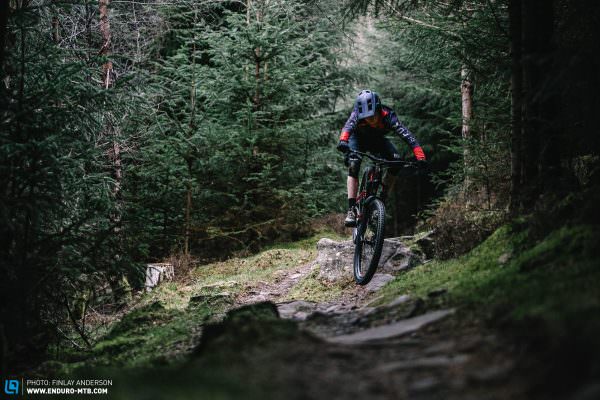

How does the Trek Slash 8 Compare to the other bikes in this test?
The Trek Slash’s nearest rival is the Propain Tyee CF. Both bikes share a nimbleness not shown by any other bike in this test, skipping into the air at every opportunity. The Trek is the more agile bike, pumping for speed and popping shapes, but the Propain Tyee is a more efficient climber and the better fork and longer travel allow the Propain to pull ahead when the trails get really rowdy.
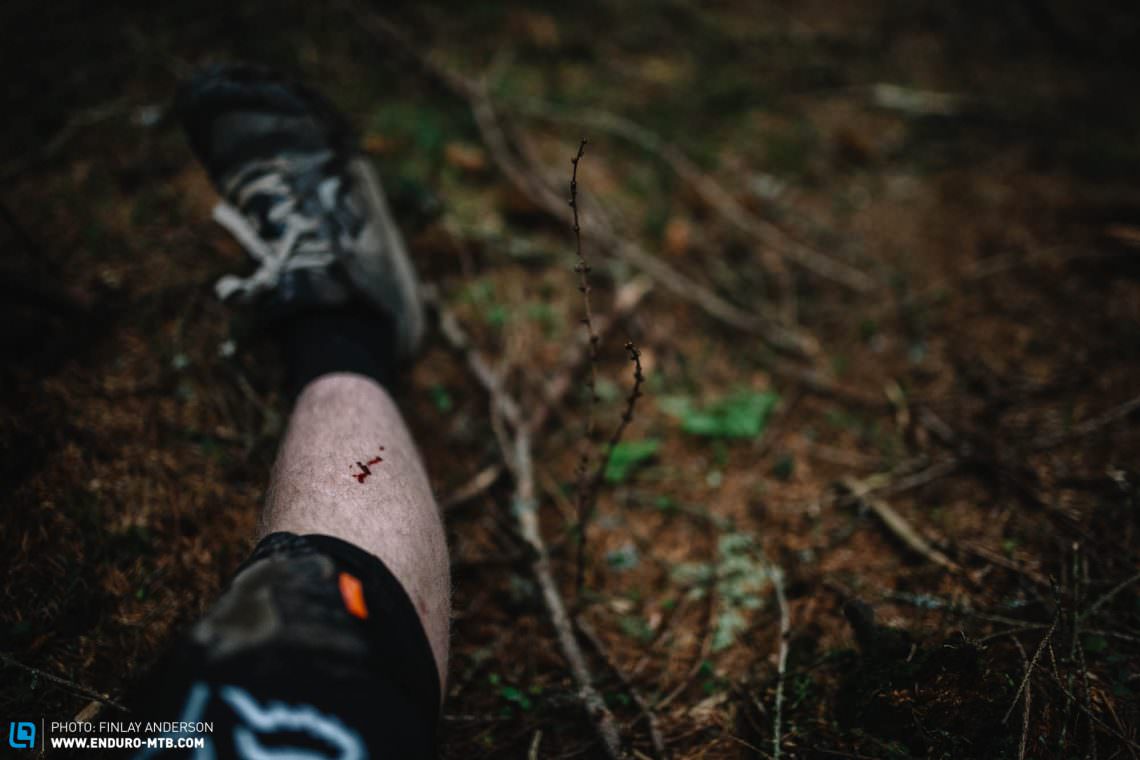
Tuning tips: you may need to change the Bontrager XR4 tires if you ride in the wet | add tokens to the Yari to improve support | upgrade brakes to SRAM CODEs or Guide REs
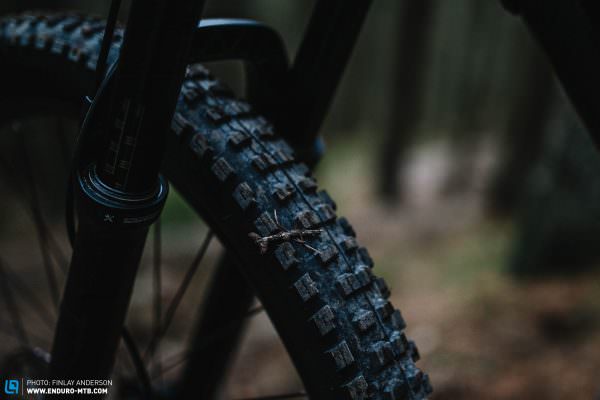
Riding Characteristics
Value for money, intended use.
Returning as the reigning champion, the Trek Slash 8 proved it’s not ready for retirement just yet. If you’re looking for a versatile enduro bike that can still masquerade as a nimble trail bike, the Trek Slash 8 would be our pick of the bunch. Its balanced handling and nimble nature is easy to enjoy whatever your skill level. Only on the roughest trails does it start to lose its cool.
- loves to play with the trail
- ABP suspension works flawlessly under hard braking
- versatile and nimble
- disappointing brakes
- Yari fork gets overwhelmed in rough terrain
For more info head to: trekbikes.com
The test field
For an overview of the test fleet head to the group test: What’s the best 2020 Enduro Bike under € 3,500 – 9 mountain bikes in review
All bikes in test: Canyon Torque AL 6.0 (Click for review) | GIANT Reign SX 29 (Click for review) | Ibis Ripmo AF Coil (Click for review) | MERIDA ONE-SIXTY 700 (Click for review) | Nukeproof Mega 290 Expert (Click for review) | Privateer 161 (Click for review) | Propain Tyee CF (Click for review) | Trek Slash 8 29 | YT Capra Comp 29 (Click for review)
This scale indicates how efficiently the bike climbs. It refers to both simple and technical climbs. Along with the suspension, the riding position and the weight of the bike all play a crucial role. ↩
How does the bike ride and descend? How spritely is the bike, how agile is it through corners, how much fun is it in tight sections and how quickly can it change direction? ↩
Is the bike stable at high speeds? Is it easy to stay in control in demanding terrain? How composed is it on rough trails? Stability is a combination of balanced geometry, good suspension and the right spec. ↩
This is all about how balanced the bike is and particularly about how well it corners. Balanced bikes require little physical effort from the rider and are very predictable. If a bike is unbalanced, the rider has to work hard to weight the front wheel to generate enough grip. However, experienced riders can have a lot of fun even with unbalanced bikes. ↩
How sensitive is the suspension over small bumps? Can it absorb hard impacts and does it soak up repeated hits? Plush suspension not only provides comfort and makes a bike more capable, but it also generates traction. The rating includes the fork and the rear suspension. ↩
This aspect mainly comes down to the suspension. How much pop does it have, does it suck up the rider’s input or is it supportive, and how agile and direct is the bike? ↩
We don’t calculate value for money in an excel spreadsheet or based on how high-end a bike is specced. We are more concerned with how a bike performs on the trail and how the bike benefits the rider. What good are the best components if the bike doesn’t perform well on the trail? Expensive bikes with a lower-end spec can offer very good value for money – provided they excel where it matters. Just as supposedly cheap bikes with good components can get a bad rating if they don’t deliver on the trail. ↩
No, it’s not about racing, it’s about efficiency. Fast, fleet-footed and efficient – those who want to speed along flowy singletrack and gravel roads need a defined and spritely bike that accelerates with ease and efficiency. Nevertheless, reliable components are important too. We interpret XC more like the Americans do: big back-country rides instead of a marathon or XC World Cup with the ultimate in lightweight construction! Uphill-downhill ratio: 80:30 (not everything has to be 100%!) ↩
...also known as mountain biking. Classic singletrack with roots, rocks and ledges – sometimes flowy, sometimes rough. For this, you need a bike with good all-round qualities, whether climbing or descending. Uphill-downhill ratio: 50:50 ↩
Even more extreme and challenging compared to Trail riding, riddled with every kind of obstacle: jumps, gaps, nasty rock gardens, ruts and roots. For this, you need (race)proven equipment that forgives mistakes and wouldn’t look out of place on a stage of the Enduro World Series. Climbing is just a means to an end. Uphill-downhill ratio: 30:70 ↩
Strictly speaking, a 200 mm travel downhill bike is the best choice for merciless tracks with big jumps, drops and the roughest terrain. Those would be the black or double-black-diamond tracks in a bike park. But as some of the EWS pros (including Sam Hill) have proven, it’s the riding skills and not the bike that define what you can ride with it. Climbing? On foot or with a shuttle, please! Uphill-downhill ratio: 10:90 ↩
You can find more info about our rating system in this article: Click here! ↩
Did you enjoy this article? If so, we would be stoked if you decide to support us with a monthly contribution. By becoming a supporter of ENDURO, you will help secure a sustainable future for high-quality mountain bike journalism. Click here to learn more .
Words: Photos: Trev Worsey, Finlay Anderson
You may also like

Fantastic Future – the new ENDURO issue #060 is here!

New RockShox Vivid Coil and Super Deluxe Air shocks on test

The 2025 RockShox Charger 3.1 Damper tested

The Lab: Solognac Fold-down Dog Bowl 100

The San Util Whirlpool 3.5 L hip pack on test – Just a stylish bag...

Testing the VEE Tire Co. Snap WCE MK2 and Attack FSX – Grip for the...

Nukeproof Mega Review
by Kyle Scott | Jan 4, 2021 | Bike , Long Travel Mountain Bikes , Mountain Bikes
Table Of Contents
Build options.
- The Bottom Line
- Price Comparison
- Climbing Ability 80% 80%
- Downhill Ability 90% 90%
- Overall Fun 90% 90%
Travel: 160mm rear/ 170mm fork
Head Tube Angle: 64
Seat Tube Angle: 78
Reach: 480mm (large frame)
Weight: Heaviest Build 34.2 lbs
Price: $7,332.72
What We Like: Now Comes With A Water Bottle Mount, Sportier Geometry
What We Don’t: Climbing Could Be More Efficient
With a few modifications on the already awesome Mega , Nukeproof has created an amazing bike. They have even added enough room for a water bottle holder, which is great news for people who hate fanny packs. The Mega now comes with a shorter chainstay and a steeper seat tube to make climbing more efficient and the downhills more lively. The build-outs in all five of the options for the Mega are solid and look after the important parts before adding too many bells and whistles. All in all, the Mega is a super all-arounder that would work for any rider of any skill set.
Compare to Similar Products
See Our Best Long Travel Mountain Bike Review 2021 Article HERE!

Santa Cruz Hightower Review
Buy Now at Backcountry.com
Compare Best Prices
- Climbing Ability 90% 90%
All-around Ability in a Variety of Terrain
Weight of some of the build options.
Travel: 145mm rear/ 150mm fork
Head Tube Angle: 65.2
Seat Tube Angle: 76.3
Reach: 470mm (large frame)
Weight: Starting at 29 lbs

Giant Reign Review
Buy Now at Giant-bicycles.com
- Climbing Ability 70% 70%
- Downhill Ability 80% 80%
- Overall Fun 80% 80%
Maestro Suspension Platform, Price
Could use some better brakes.
Travel: 146mm rear/ 170mm fork
Head Tube Angle: 64.6
Seat Tube Angle: 76.4
Reach: 488mm (large frame)
Weight: Varies With Frame Material

Yeti SB150 Review
Buy Now at Aventuron.com
Really Playful Bike
Expensive build options.
Travel: 150mm rear/ 170mm fork
Head Tube Angle: 64.5
Seat Tube Angle: 76.9
Weight: Starting at 31 lbs

Specialized Enduro Review
Buy Now at Specialized.com
- Downhill Ability 100% 100%
DH Bike That Can Climb
Needs steeper seat tube, price.
Travel: 170mm rear and fork
Head Tube Angle: 63.9/ 64.3
Seat Tube Angle: 76
Reach: 487mm (S4 frame)
Weight: Starting at 32.5 lbs

Ibis Ripmo Review
Buy Now at JensonUSA.com
Climbing Ability, Ripmo AF Option
Stock shock not being fox float.
Travel: 147mm rear/ 160mm fork
Head Tube Angle: 64.9
Reach: 475mm (large frame)
Weight: Starting at 28.9 lbs

Pivot Switchblade Review
Buy Now at Backcountry.com
- Overall Fun 100% 100%
All-around Performance
Travel: 142mm rear/ 160mm fork
Head Tube Angle: 66
Seat Tube Angle: 75.5
Weight: 30.2 lbs

Canyon Strive Review
Buy Now at Canyon.com
The Shapeshifter
Also the shapeshifter.
Travel: 150mm rear/ 160mm fork
Head Tube Angle: 66 - 67.5
Seat Tube Angle: 73.5 - 75
Reach: 470mm (large frame))
Weight: Starting at 31.2 lbs

Orbea Rallon Review
Buy Now at JensonUSA.com
Amazing Climber, Custom Paint Job Option
Short reach and cost.
Head Tube Angle: 65
Seat Tube Angle: 75.5/ 76
Reach: 455mm (large frame)
Weight: Starting at 30.95 lbs

Kona Process X Review
Buy Now at Konaworld.com
- Climbing Ability 60% 60%
- Overall Fun 70% 70%
Chainstay Chip Makes A Difference
Sluggish at slow speeds, super long.
Travel: 161mm rear/ 170mm fork
Head Tube Angle: 63.5
Reach: 490mm (large frame)
Weight: 32.8lbs (large frame)

Norco Sight Review
Buy Now at Norco.com
Strong Climber, Stable Descents
Not as playful as older versions.
Seat Tube Angle: 77.7
Weight: Starting at 32.23 lbs

Scott Ransom Review
Buy Now at Scott-sports.com
Made For The Downhills
Twinloc system needs some work.
Travel: 170mm
Seat Tube Angle: 75
Reach: 466.5mm (large frame)
Weight: Starting Around 30.20 lbs

Buy Now at Nukeproof.com
Now Comes With A Water Bottle Mount, Sportier Geometry
Climbing could be more efficient.
The Nukeproof Mega is named after that crazy downhill race that happens in France—the Megavalanche, where you start on a glacier and ride into chunder and beyond. The Mega (the bike) has lived up to this reputation and gone on to win some impressive accolades in the mountain bike world. Taking the Downhill world by storm, the Mega has carried World Downhill Champion Sam Hill to three consecutive championships.
So what does this mean? Is the Nukeproof Mega just for a professional downhill rider or could an Average Joe jump on and have a time? The answer is both, obviously. This bike crushes the downhill world, but it is also a great one quiver bike for riders who want to go real fast and still be able to pedal themselves to the top of the hill.

The Nukeproof Mega has 160mm of rear travel coupled with a 170mm fork to really party. It has seen some improvements from just last year’s models that have created a wildly versatile bike. Last year’s model of the Mega had a mega long chainstay at 450mm. This year, the chainstay has been shortened, but not too much, to a more manageable 440mm on the 290—which is code for having 29” wheels. The Mega is also available with 27.5” wheels labeled as, you guessed it, 275.
The carbon frames have become 45% stiffer from previous frames. The previous Megas had a carbon front triangle with an alloy rear triangle, whereas now, the carbon frames are all carbon. Nukeproof have also fixed the front triangle to allow room for a 750ml water bottle, which is a huge improvement for some riders who can’t stand to be seen wearing a fanny pack. There is also some room for tools or a tube on the top tube.

As version 4 of the Mega , Nukeproof have steepened the seat tube angle to give the rider a more comfortable riding position. This helps to generate the power you need to fight through the very moderate pedal squat that can happen. The shock does come with a lockout switch to help improve pedaling efficiency over smooth terrain. Some testers liked the switch open in technical climbs to keep the rear wheel planted to provide more traction. While not the most efficient climber on the list, it will get the job done.

There is a reason Sam Hill has won three consecutive Enduro World Championships while on the Nukeproof Mega —the thing rips! With the shortened chainstay, the rear end is even more lively and responsive than the past models while still maintaining that control and composure that the Mega is known for. Nukeproof has even shortened the fork offset to 37mm, which is a first (that I have seen) in the bike world. This created 134.42 mm of trail on the front wheel to add to the improved responsiveness throughout the bike, front to back.

There are two frame options for the Mega —carbon and alloy. In the carbon frame options, you get the choice of three build-outs, the RS (~$7,500), the Factory (~$6,750), and the Elite (~$5,500). There is a frame only carbon option that costs around $3,500. These numbers are exact because the website only has British Pounds, and so I fired them through Google and this is what I got. With individual bike shops selling the bikes in the US, the prices will vary with added shipping and taxes. The RS build comes with SRAM components, including Code RSC brakes and the GX Eagle drivetrain. The other builds are all Shimano.

The Bottom L ine
There is a reason this bike has won the Enduro World Series three seasons in a row. It is versatile, super-efficient, and offers amazing control for the downhills. There really aren’t many negative things to say about the Mega, it even has a cool name. Sure, there aren’t that many paint options, which may frustrate some riders, and if it does annoy you, go buy a pimped out Orbea and customize it to your heart’s content. We’ll be over here setting PR’s on our local trails on our monotone Megas!
Compare Prices From Retailers Below
You help support Gear Hacker by purchasing from our retail partners.
You Might Also Like

^ Back to Top ^
Nukeproof Mega Vs Nukeproof Giga; which should you choose?
- Alan Muldoon
- June 21, 2021
We help you choose your enduro weapon with a deep dive into the ride, handing and personalities of Nukeproof's two race-ready full-suspension rigs.
Nukeproof bikes have long been a favourite with privateer enduro racers. But the decision about which bike to race got a lot harder in 2021. Because, not only did Nukeproof launch the new V4 Mega, it also released the brand new 170mm travel Giga.
Read more: Buyer’s guide to the best enduro mountain bikes
But which one is better? It’s a question that any serious enduro racer should be asking. And in an attempt to answer that question, we’ve been testing the Giga 290 Carbon Factory and the Mega 290 Carbon Factory side by side.

Frame sizes
Both bikes are available in five frame sizes, and both come with the option of 29in or 27.5in wheels. The ranges run from RS to Comp, with the Factory level Mega build featured here taking up the middle ground and the Factory Giga sitting at the top of the pile. Not that anyone thinks that Fox Factory 38 forks and X2 shocks can be considered middle of the road.

The bikes are competitively priced too, the Giga 290 Carbon Factory costing £5,499.99 and the Mega 290 Carbon Factory sneaking in at £100 less. And both have almost identical specifications. We say almost because the XT rear brake on the Giga has a 203mm rotor, while the Mega comes with a 180mm rotor as standard. Other than that, everything else is the same including the 170mm Bike Yoke droppers, DT Swiss EX1700 wheels, Shimano XT drivetrains and Nukeproof 31.8mm bars and stems. All great kit then.

Weight-wise, there’s not much separating the bikes here either. Frame weights without the shock are 2.8kg for the carbon Mega and 2.9kg for the carbon Giga. So the Mega frame is only 100g lighter than the Giga. That’s not the whole story however, as the single pivot swingarm on the Giga is actually 100g lighter than the four-bar design on the Mega. However, the front end and linkage on the Giga is 200g heavier which results in the 100g overall increase in weight. And while you could argue that this gives the Giga a more favourable sprung to unsprung mass ratio; have you ever noticed your suspension change when you add a water bottle? No, nor have we, and a full bottle weighs approximately 675g. So let’s park that for now.
The complete weight for each bike with Maxxis EXO+ casing tyres is 15.58kg for the Mega and 15.51kg for the Giga. But how can it be that the Giga is 70 grams lighter than the Mega when the Giga frame is 100g heavier? Well, when we just measured the chassis without the wheels the Mega is in fact lighter as per the frame weight, but when we measured the wheels it’s clear the tyres on the Giga were lighter but still within the expected variation. The key takeaway then is that at approximately 15.5kg both bikes are competitively light.

Enduro race bikes need to be fast, and the new Mega keep it’s eye on the prize.
In terms of geometry the most pronounced difference between the bikes is that the head angle on the Giga is almost 1º slacker than the Mega, which gives it a slightly longer front center even though both size L bikes have similar reach measurements; 470mm on the Giga Vs 468mm on the Mega. The Mega does have a 10mm taller head tube though, so if we equate for stack height, the Mega has a slightly longer reach. As you can see, we’re splitting hairs, and it’s the same elsewhere with the geometry. The Giga has a 3mm longer chainstay length – 445mm Vs 442mm – and the BB height is 2mm taller on the Giga, but it also has more travel – 170mm Vs 162mm – so the dynamic BB heights will be very close. And it’s worth noting that these are our measured numbers, not Nukeproof’s claimed geometry.
Measured geometry (size L Giga and Mega side by side)

It’s only when you dig into the rear suspension layouts that you start to see the variation between both designs. On the surface, the most obvious difference is that the Mega uses a classic four-bar linkage suspension design with counter rotating links. Nukeproof’s listed travel is 160mm, but we measured it at 162mm, so it over-delivers on that front. The Fox Float X2 shock on the Mega has a 230mm eye-to-eye length with a 62.5mm stroke, where the leverage rate is initially digressive but rapidly switches to a progressive rate. On the leverage rate graph you can see that it even runs parallel to the curve of the Giga in the last 50 per cent of the travel. In fact, the V4 Mega has a very similar suspension layout to Nukeproof’s acclaimed trail bike, the Reactor .

Leverage curves for the Giga (left) and Mega (right)
Now contrast that with the Giga, which takes its design cues from Nukeproof’s Dissent downhill bike. As such, it is a single pivot design with a linkage actuated shock. It’s running a 205x60mm Fox Float X2 shock and delivering 170mm of travel, so the overall leverage ratio is higher than on the Mega. Take a closer look at the leverage rate curves and it’s clear that the Giga is progressive from the off. In fact, the progression rate on the Giga is adjustable thanks to the asymmetric main pivot assembly that offers two settings. In the low pivot position overall progressivity is 25.5 per cent increasing to 29 per cent in the high pivot setting, which should make running a coil sprung shock super easy.

And while both bikes have four-way adjustable Fox Float X2 shocks, the stock tunes are different. The X2 on the Mega has an L1 compression tune which is slightly lighter than the Giga’s L compression tune. Which makes sense as the Giga has a higher overall leverage ratio, as it has more travel from a shorter stroke shock, and as such needs a slightly firmer shock tune. For reference, here are the suspension settings we ran on both bikes for an 80kg rider, and all taken from a fully closed position:

How do they ride?
So we have two big hitting enduro bikes with similar geometry, sizing, specification and weight, but they also have unique ride qualities due to the differences in their suspension outlined above. The Mega has a more pitter-patter response to the rear that’s great at ironing out small high frequency hits. Not only does this allow you to carry speed incredibly well on choppy terrain, it also reduces rider fatigue, which is critical on longer enduro stages where fatigue management is every bit as important as rider skill and fitness. Riding the same trails back-to-back, the Mega’s ability to glide over the rough stuff made it feel as if the rear tyre was a couple of psi lower than on the Giga, when we were in fact running identical tyres and tyre pressures on both bikes.

Stiff and direct, the full carbon frame is great for slamming turns.
And while the Giga couldn’t quite match the magic carpet ride offered by the Mega, it more than made up for it with increased stability. On the Giga you ride very centered on the bike, much in the same way you would on a well balanced downhill rig. So while the high frequency vibrations are more noticeable on the Giga, its inherent stability gives you the confidence to push harder and ride less conservatively. In fact, confidence on the Giga is simply off the charts. This was most apparent on the jump lines at BikePark Wales, where the stiffer suspension, and probably the stiffer frame, made it super easy to maintain speed through big sweeping berms and while getting airborne on jumps. The Giga is not so stiff that it can’t be rallied down through wet slippery roots though; the 31.8mm diameter alloy bar and alloy DT Swiss EX1700 wheels see to that. Yes, the Giga is a little more poppy and playful than the Mega, but it doesn’t have the same ability to plow straight through the roughest terrain and you have to work harder to stay centered on the Mega.

How both bikes respond to pedalling efforts is slightly different too. The Mega feels a hair faster out of the blocks, the Giga slightly slower to wind up. We weren’t aware of the anti-squat number before coming to that conclusion, so we were pleased that our seat-of-the-pants feel tallied up with Nukeproof’s data.

The Mega has 76.4 per cent anti-squat in the 32/16t gear at sag, which is almost 10 per cent more than the Giga. Shift up to the 50t cog and both bikes have around 100 per cent anti-squat. This, combined with the relatively steep effective seat tube angles, means that both bikes climb efficiently enough to comfortably get you to the top of even the steepest descents.

The new Mega feels great in the air, but how does it handle the rough stuff?
Which one should I choose?
So which bike is best? Well, that really depends on what you’re after and what your needs are. If you’re racing enduro at the highest level we think the Mega takes the lead as it better isolates you from the onslaught of repeated hits. So in theory you should be able to stay fresher for longer and ultimately ride faster with fewer mistakes. And that’s not only important on the timed stages, but all of the practice sessions and cumulative fatigue that builds up over a race season too.
If, however, it’s thrill seeking rather than clock-watching that’s your number one priority, and you’re likely to spend just as much time doing hot laps in the bike park as travelling to races, the Giga would be our first choice. Either way, Nukepoof has you covered as the Giga and Mega are both great bikes, and even though they seem really close on paper, ride them back-to-back and it’s instantly apparent that they have unique strengths and very few weaknesses.

2020 Nukeproof Mega: Everything you need to know
It is no secret that I am a huge Nukeproof Mega fan (there are three of them in my garage right now). My current steed is a 2019 275 AL Pro and I love it. But I have been wondering what Nukeproof have in stall for 2020. I had heard some rumours that there would be a change in geometry, extra sizes added to the range and options for different wheel sizes front and back. Lets have a closer look at the new range to see if I was right.
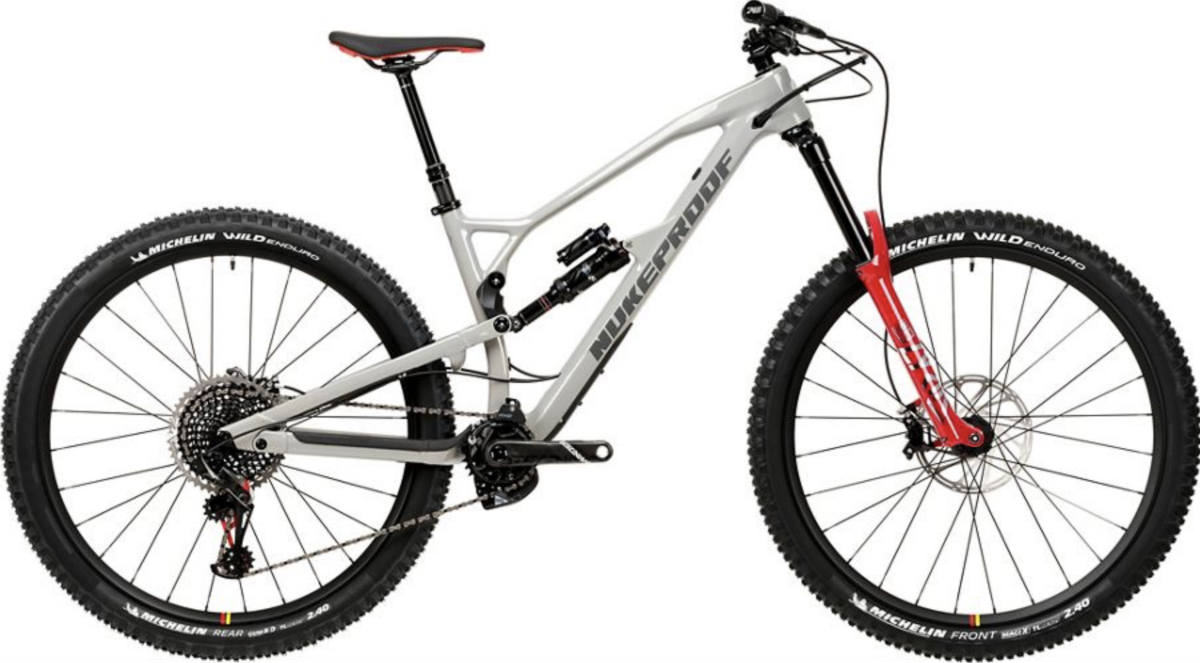
For 2020, Nukeproof have introduced a new bike to the range. The Mega 290 C was brought on to the market after Sam Hill decided he wanted to go for 29″ wheels. He spent a lot of time developing and testing the new bike and took it to the podium in Val Di Fassa during the 2019 Enduro World Series. So this bike is the new star of the show and the closest you can get to owning one at the moment is with the Nukeproof Mega 290 RS. So what is so good about it?
The 29″ wheels roll faster than 27.5″ wheels. This is an advantage on both descents and climbing, as they roll over bumps easier.
The components on the 290 RS are up there with the best in the business. Even with the 29″ wheels you get 180mm of travel from the RockShox Lyric Ultimate RCT3 fork. The rear has 165mm of travel using the Rockshox Super Deluxe RCT shock. This combo will give you amazing grip and will get you blasting over the toughest terrain.
But don’t think that this bike is just made for blasting down mountain sides. The SRAM X01 Eagle 12 speed drivetrain will have you pedalling to the top of those mountains at speed too.
To allow the bike to cope with the changes in wheel size and the increase in suspension travel, Nukeproof had to adjust the geometry. It may be no surprise to you that the head angle has been slackened and the seat post angle has been steepened.
Nukeproof have altered the suspension kinematics to make the new Mega faster and more controlled. All the changes made have improved the small bump sensitivity and mid-stroke support. This gives the bike a more predictable feeling in the corners and induces confidence when charging over technical terrain.
The carbon fibre used in the frame of the 2020 Nukeproof Mega 290 RS, is designed to withstand the punishment of the toughest enduro and downhill tracks. It is lightweight and extremely durable, meaning you can push harder. The frame is super stiff too, making the handling very responsive and predictable.
It comes with the Nukeproof Horizon finishing kit, which includes the Sam Hill grips (another thing I am a fan of). It also comes with a Rockshox Reverb dropper seat post.
The 2020 Nukeproof Mega 290 RS is for taking on seriously rough terrain. It is the perfect enduro race machine.
Geometry Updates
The 2020 Nukeproof Mega 275 aluminium and 275c are very similar to the 2019 bikes. But the 275 & 275c frames now come in a Medium-Large size. This is another Sam Hill influence and gives you the option of a frame with slightly longer reach and effective top tube measurement. This is so you can ensure the perfect fit for you. One of the improvements, is that all of the Megas now come with branded “Enduro Bearings” for improved durability.
Specification Updates
All the specifications have been updated for 2020. You will find 12 speed drivetrains on all of the Megas, from either SRAM or Shimano. The tyres are the Michelin Wild-Enduro, but the front tyres now use the Magi -X compound. These have wider spacing between the knobs and are more hard wearing. I was hoping for the the Wild-Enduro downhill tyres, as I have had some issues with durability with the tyres on my bike. But, hopefully the Magi-X will address this problem.
The 2020 Nukeproof Mega Elite

Ne to the Mega range, is the Elite. This is an entry level carbon framed bike. This is available with both 27.5″ and 29″ wheels. But just because it is “entry level”, it doesn’t mean that Nukeproof have scrimped on the components. It comes with a Fox 36 fork, DPX shock and the Shimano SLX 12 speed drivetrain.
2020 Nukeproof Mega Models
Nukeproof mega 290 comp alloy.
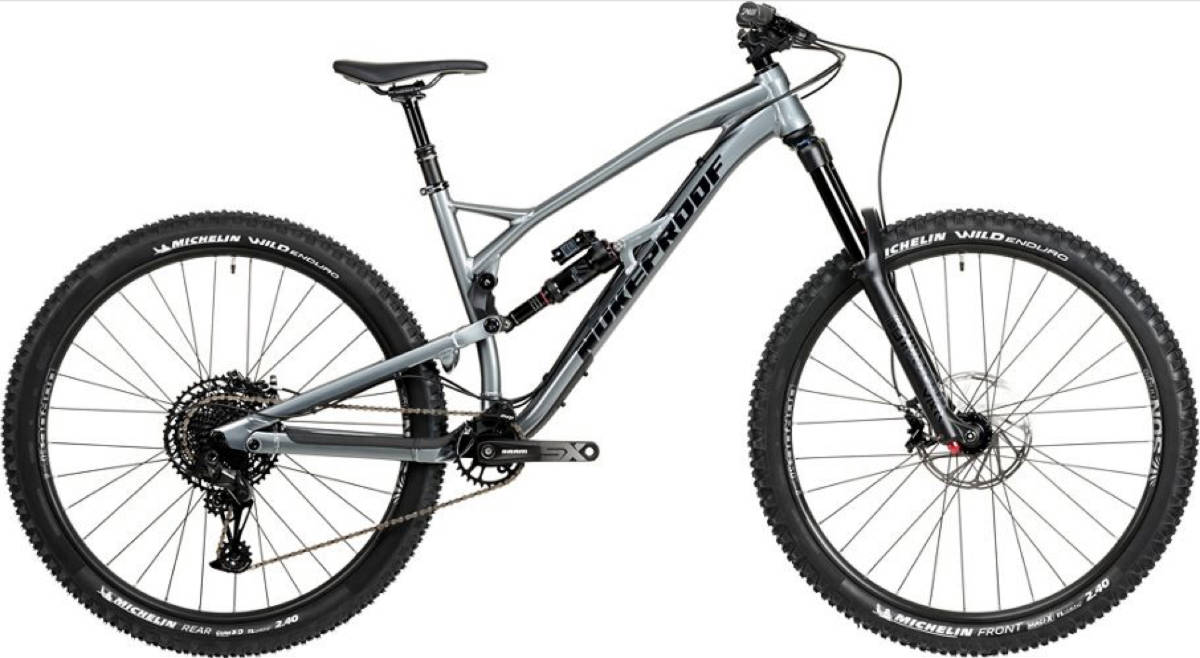
Specifications
- Frame: Nukeproof Mega 290 Alloy, 160mm Travel, custom triple butted hydro-formed tube set, internal dropper seatpost cable routing, Enduro Bearings, Threaded 73mm BB, Boost 148mm rear axle spacing, 3D contoured frame protection
- Fork: RockShox Yari, Motion Control RC damper, 170mm, 42mm Offset, BOOST, Debonair, Diffusion Black
- Shock: RockShox Super Deluxe Select R, Custom ML tune, 230×62.5mm, Bearing End (We recommend most riders use 0/1 bottomless tokens but the shock comes with 2 tokens fitted, so you have an extra if needed.)
- Front Wheel: Sun-Ringle Duroc SD37 Comp 29″, 15x110mm
- Rear Wheel: Sun-Ringle Duroc SD37 Comp 29″, Shimano Driver, 148x12mm
- Tyres: Front: Michelin Wild Enduro 29″ x 2.4, MAGI-X TS TLR, Rear: Michelin Wild Enduro 29” x 2.4, GUM-X TS TLR
- Crankset: SRAM SX Eagle 12-Speed, 170mm, 30T, B148, Powerspline
- Shifter: SRAM SX Eagle 12-Speed
- Rear Derailleur: SRAM SX Eagle 12-Speed
- Chain: SRAM SX Eagle 12-Speed
- Cassette: SRAM SX Eagle 12-Speed, CS PG1230 EAGLE 11-50T
- Chain Guide: MRP 1x CS, 28-34T, ISCG-05
- Brakes: SRAM Guide T
- Front Rotor: SRAM Centreline, 200mm
- Rear Rotor: SRAM Centreline, 180mm
- Handlebars: Nukeproof Neutron 25mm Rise, Width – S780mm, M780mm, L800mm, XL800mm)
- Stem: Nukeproof Neutron AM, 45mm, Black
- Saddle: Nukeproof Horizon SL, Grey
- Seatpost: Brand X Ascend internal, 31.6mm, S:125mm drop; M/L:150mm drop; XL: 170mm Drop
- Headset: Nukeproof, 44-56 IITS
Nukeproof Mega 275 Comp Alloy
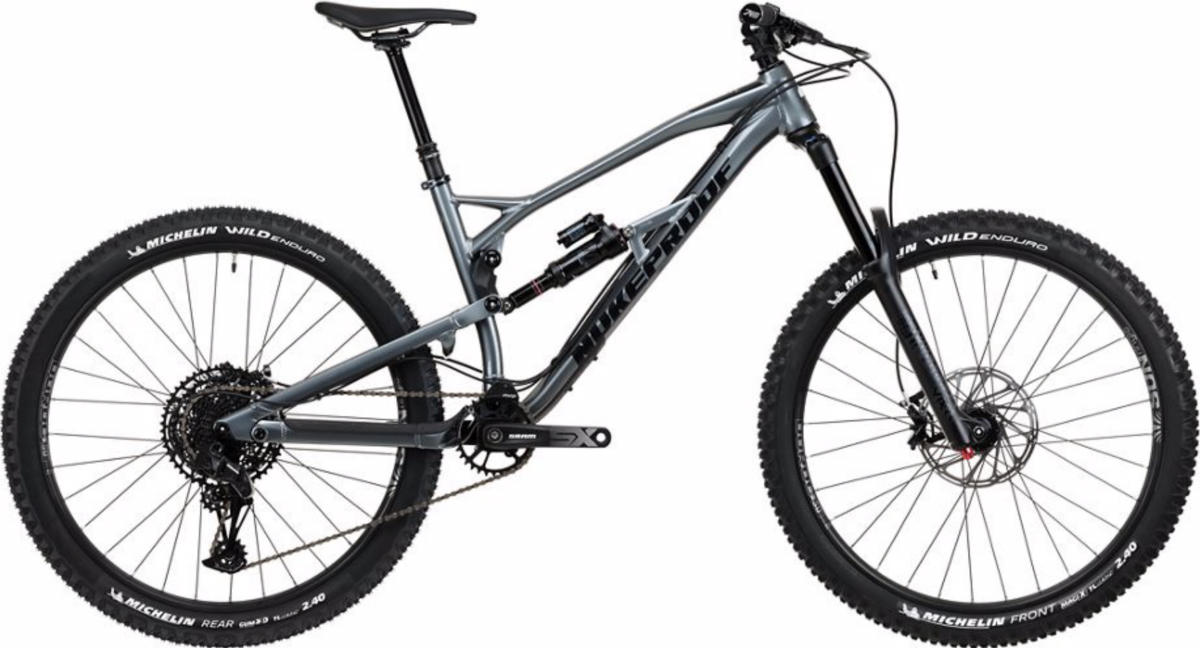
- Frame: Nukeproof Mega 275 Alloy, 165mm Travel, custom triple butted hydro-formed tube set, internal dropper seatpost cable routing, Enduro Bearings, Threaded 73mm BB, Boost 148mm rear axle spacing, 3D contoured frame protection
- Fork: RockShox Yari, Motion Control RC damper, 170mm, 46mm Offset, BOOST, Debonair, Diffusion Black
- Shock: RockShox Super Deluxe Select R, Custom ML tune, 230x65mm, Bearing End (We recommend most riders use 1x bottomless token but the shock comes with 2 tokens fitted, so you have an extra if needed.)
- Front Wheel: Sun-Ringle Duroc SD37 Comp 27.5″, 15x110mm
- Rear Wheel: Sun-Ringle Duroc SD37 Comp 27.5″, Shimano Driver, 148x12mm
- Tyres: Front: Michelin Wild Enduro 27.5″ x 2.4, MAGI-X TS TLR, Rear: Michelin Wild Enduro 27.5″ x 2.4, GUM-X TS TLR
- Crankset: SRAM SX Eagle 12-Speed, 170mm, 32T, B148, Powerspline
- Grips: Nukeproof Sam Hill Signature
Nukeproof Mega 290 Expert Alloy
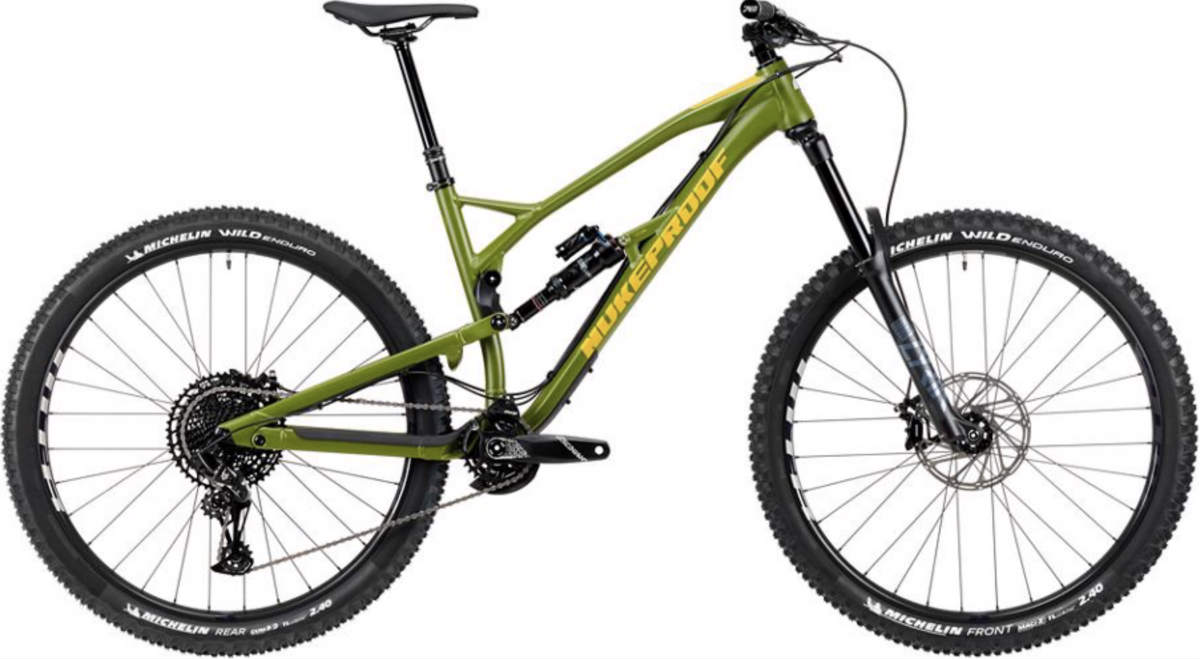
- Fork: RockShox Lyrik Select Charger RC 170mm, 42mm Offset, BOOST, Debonair, Diffusion Black
- Shock: RockShox Super Deluxe Select+ RT, Custom ML 380 tune, 230×62.5mm, Bearing End (We recommend most riders use 0/1 bottomless tokens but the shock comes with 2 tokens fitted, so you have an extra if needed.)
- Front Wheel: WTB Speed Terra 29″, ST Light i30 TCS 2.0 Rim / 32h, 110x15mm
- Rear Wheel: WTB Speed Terra 29″, ST Light i30 TCS 2.0 Rim / 32h, Shimano Driver, 148x12mm
- Tyres: Front: Michelin Wild Enduro 29″ x 2.4, MAGI-X TS TLR, Rear: Michelin Wild Enduro 29″ x 2.4, GUM-X TS TLR
- Crankset: SRAM Descendant 6K Eagle 12-Speed, 170mm, 30T, B148, DUB
- Shifter: SRAM NX Eagle 12-Speed
- Rear Derailleur: SRAM NX Eagle 12-Speed
- Chain: SRAM NX Eagle 12-Speed
- Cassette: SRAM NX Eagle 12-Speed, CS PG1230 Eagle 11-50T
- Chain Guide: MRP 1x AMg CS, 28-34T, ISCG-05
- Brakes: SRAM Guide RE
- Handlebars: Nukeproof Horizon 25mm Rise, Width – S780mm, M780mm, L800mm, XL800mm)
- Saddle: Nukeproof Horizon SL, Black
Nukeproof Mega 275 Expert Alloy
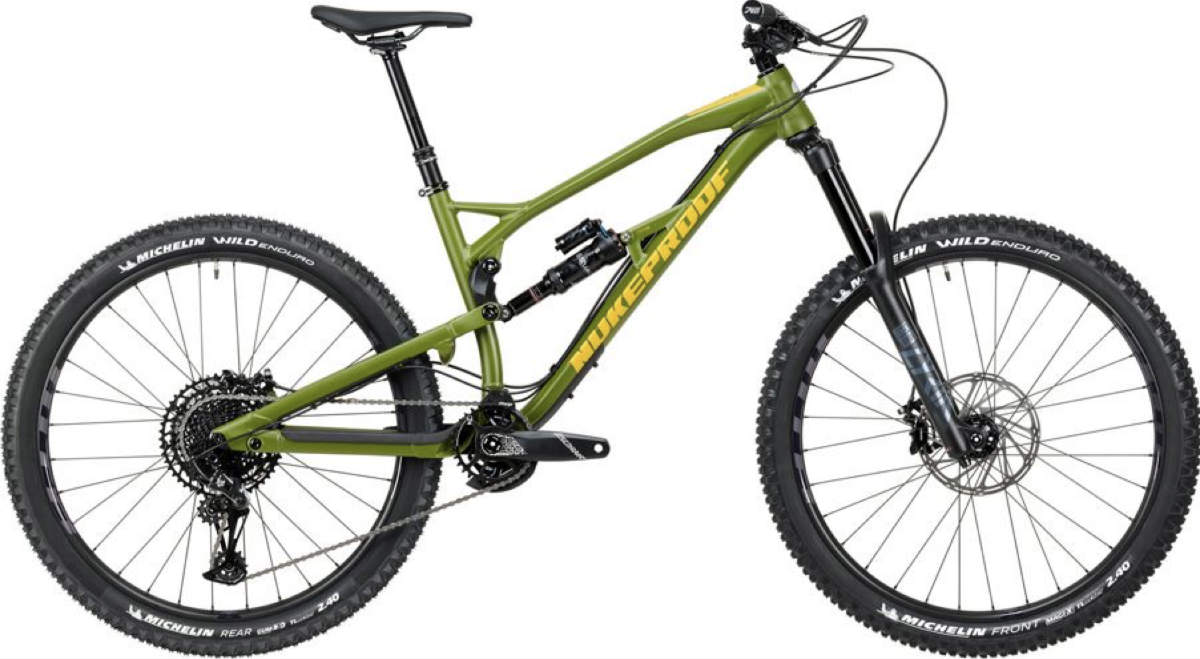
- Fork: RockShox Lyrik Select Charger RC 170mm, 46mm Offset, BOOST, Debonair, Diffusion Black
- Shock: RockShox Super Deluxe Select+ RT, Custom ML 380 tune, 230x65mm, Bearing End (We recommend most riders use 1x bottomless token but the shock comes with 2 tokens fitted, so you have an extra if needed.)
- Front Wheel: WTB Speed Terra 27.5″, ST Light i30 TCS 2.0 Rim / 32h, 110x15mm
- Rear Wheel: WTB Speed Terra 27.5″, ST Light i30 TCS 2.0 Rim / 32h, Shimano Driver, 148x12mm
- Crankset: SRAM Descendant 6K Eagle 12-Speed, 170mm, 32T, B148, DUB
- Cassette: SRAM NX Eagle 12-Speed, CS PG1230 EAGLE 11-50T
Nukeproof Mega 275 Elite Carbon
- Frame: Nukeproof Mega 275 Carbon, 165mm Travel, ultra-strong monocoque UD woven Carbon Fibre front triangle, custom triple butted hydro-formed tube set for seat stays and chain stays, Factory fitted clear paint protection kit covers TT/DT/CS/SS, Internal cable routing, Enduro Bearings, Threaded 73mm BB , Boost 148mm rear axle spacing, 3D contoured frame protection
- Fork: Fox 36 Float, Performance Series, Grip Damper, 170mm, 44mm Offset, BOOST, Black
- Shock: Fox Float DPX2, Performance Series, 3 Position lever, Custom CL, LRL tune, 230x65mm, Bearing End (We recommend most riders use 1 spacers but the shock comes with 2 fitted, so you have an extra if needed.)
- Front Wheel: DT Swiss E1900 SPLINE,27.5″, Centrelock, 110x15mm
- Rear Wheel: DT Swiss E1900 SPLINE, 27.5″, Centrelock, Shimano Microspline Driver, 148x12mm
- Crankset: Shimano SLX M7100 12-Speed, Hollowtech 2, 170mm, 32T, 52mm Chainline
- Shifter: Shimano SLX M7100-R, 12-speed Rapidfire Plus, I-Spec EV
- Rear Derailleur: Shimano SLX M7100, SGS 12-Speed, Shadow Plus
- Chain: Shimano SLX M7100 HG 12-speed Inc Quicklink
- Cassette: Shimano SLX M7100-12, 12-Speed (HYPERGLIDE+), 10-51T
- Brakes: Shimano SLX M7120, 4 Pot Brake, Metallic Pads
- Front Rotor: Shimano SM-RT70 203mm
- Rear Rotor: Shimano SM-RT70, 180mm
- Stem: Nukeproof Neutron AM, 45mm, black
- Seatpost: Brand X Ascend internal w 1x Remote, S:125mm drop; M/L:150mm drop; XL:170mm drop
Nukeproof Mega 290 Elite Carbon
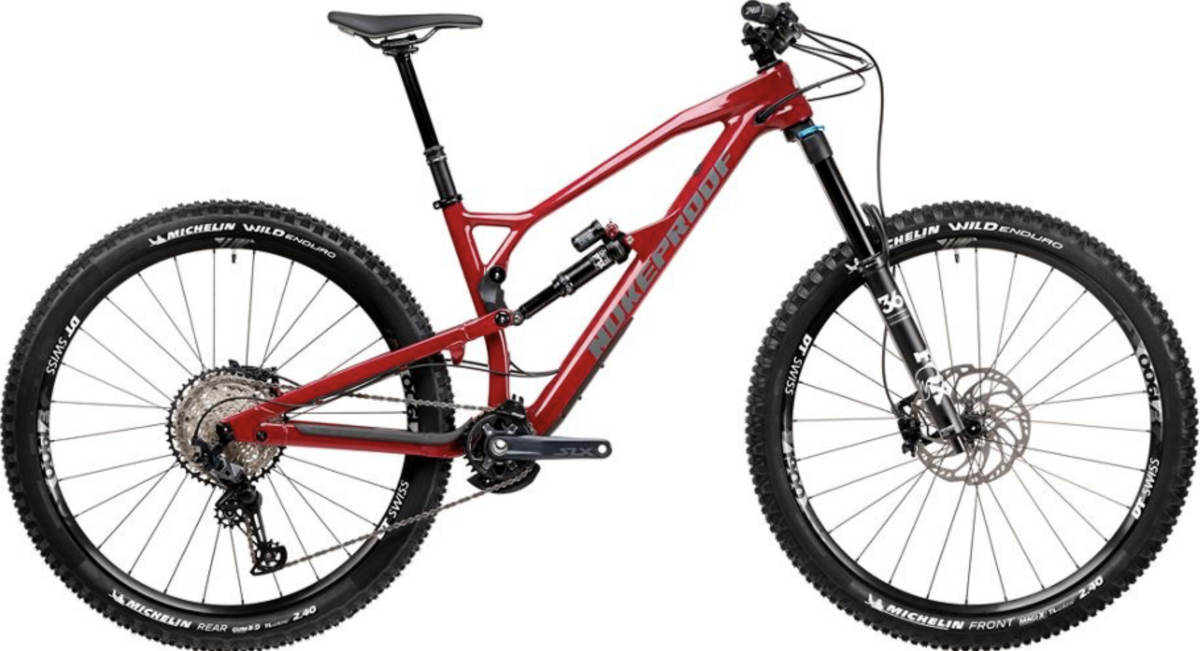
- Frame: Nukeproof Mega 290 Carbon, 160mm Travel, ultra-strong monocoque UD woven Carbon Fibre front triangle, custom triple butted hydro-formed tube set for seat stays and chain stays, Factory fitted clear paint protection kit covers TT/DT/CS/SS, Internal cable routing, Enduro Bearings, Threaded 73mm BB , Boost 148mm rear axle spacing, 3D contoured frame protection
- Shock: Fox Float DPX2, Performance Series, 3 Position lever, Custom CL, LRL tune, 230×62.5mm, Bearing End (We recommend most riders use 0/1 spacers but the shock comes with 2 fitted, so you have an extra if needed.)
- Front Wheel: DT Swiss E1900 SPLINE,29″, Centrelock, 110x15mm
- Rear Wheel: DT Swiss E1900 SPLINE, 29″, Centrelock, Shimano Microspline Driver, 148x12mm
- Crankset: Shimano SLX M7100 12-Speed, Hollowtech 2, 170mm, 30T, 52mm Chainline
- Rear Deraileur: Shimano SLX M7100, SGS 12-Speed, Shadow Plus
Nukeproof Mega 275 Pro Carbon
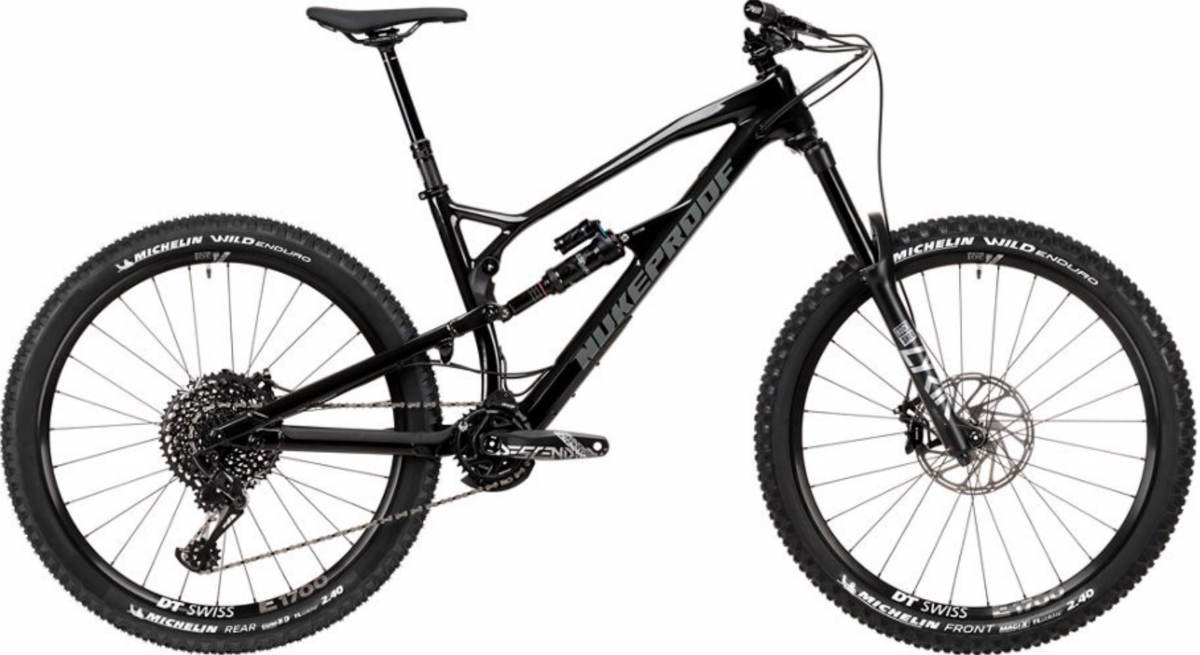
- Fork: RockShox Lyrik Select + Charger 2 RC 170mm, 46mm Offset, BOOST, Debonair, Diffusion Black
- Front Wheel: DT Swiss E1700 SPLINE 30, 27.5″, 6 Bolt, 110x15mm
- Rear Wheel: DT Swiss E1700 SPLINE 30, 27.5″, 6 Bolt, XD Driver, 148x12mm
- Crankset: SRAM Descendant 7K Aluminium Eagle 12-Speed, 170mm, 32T, B148, DUB
- Shifter: SRAM GX Eagle 12-Speed
- Rear Derailleur: SRAM GX Eagle 12-Speed
- Chain: SRAM GX Eagle 12-Speed
- Cassette: SRAM GX Eagle 12-Speed, CS PG1275 EAGLE 11-50T
- Stem: Nukeproof Horizon, 50mm, Black
- Seatpost: RockShox Reverb Stealth with 1x Remote, 31.6mm; S: 346mm length, 125mm drop; M: 409mm length, 150mm drop; L: 462mm length, 175mm drop; XL: 514.5mm length, 200mm drop
Nukeproof Mega 290 Pro Carbon
- Fork: RockShox Lyrik Select + Charger 2 RC 170mm, 42mm Offset, BOOST, Debonair, Diffusion Black
- Shock: RockShox Super Deluxe Select+ RT, Custom ML 380 tune, 230×62.5mm, Bearing End (We recommend most riders use 1x bottomless token but the shock comes with 2 tokens fitted, so you have an extra if needed.)
- Front Wheel: DT Swiss E1700 SPLINE 30, 29″, 6 Bolt, 110x15mm
- Rear Wheel: DT Swiss E1700 SPLINE 30, 29″, 6 Bolt, XD Driver, 148x12mm
- Crankset: SRAM Descendant 7K Aluminium Eagle 12-Speed, 170mm, 30T, B148, DUB
- Rear Deraileur: SRAM GX Eagle 12-Speed
Nukeproof Mega 275 Factory
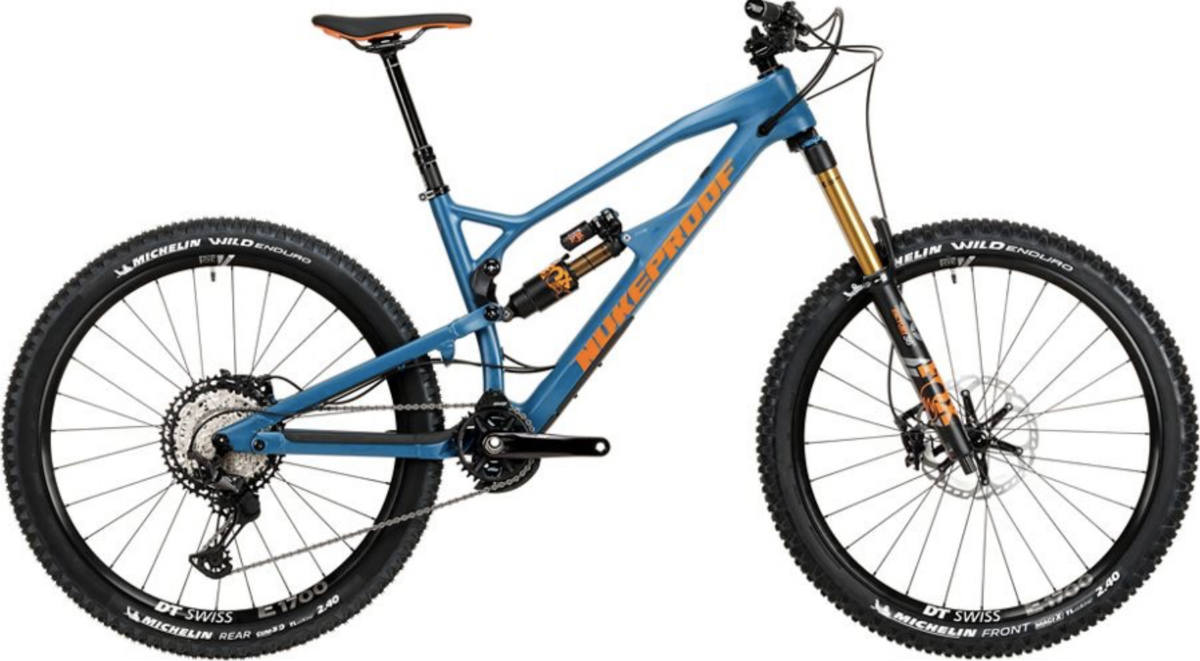
- Fork: Fox 36 Float, Factory Series, Kashima, Grip 2 Damper, 170mm, 44mm Offset, BOOST, Black
- Shock: Fox Float X2, Factory Series, Kashima, 2 Position lever, Custom CL tune, 230x65mm, Bearing End (We recommend most riders use 1 spacers but the shock comes with 2 fitted, so you have an extra if needed.)
- Front Wheel: DT Swiss E1700 SPLINE 30,27.5″, Centrelock, 110x15mm
- Rear Wheel: DT Swiss E1700 SPLINE 30, 27.5″, Centrelock, Shimano Microspline Driver, 148x12mm
- Crankset: Shimano XT M8100 12-Speed, Hollowtech 2, 170mm, 32T, 52mm Chainline
- Shifter: Shimano XT M8100-R, 12-speed Rapidfire Plus, I-Spec EV
- Rear Derailleur: Shimano XT M8100, SGS 12-Speed, Shadow Plus
- Chain: Shimano XT M8100 HG 12-speed Inc Quicklink
- Cassette: Shimano XT M8100-12, 12-Speed (HYPERGLIDE+), 10-51T
- Brakes: Shimano XT M8120, 4 Pot Brake, Metallic Pads
- Front Rotor: Shimano MT800, 203mm
- Rear Rotor: Shimano MT800, 180mm
- Saddle: Nukeproof Horizon SL, Orange
Nukeproof Mega 290 Factory
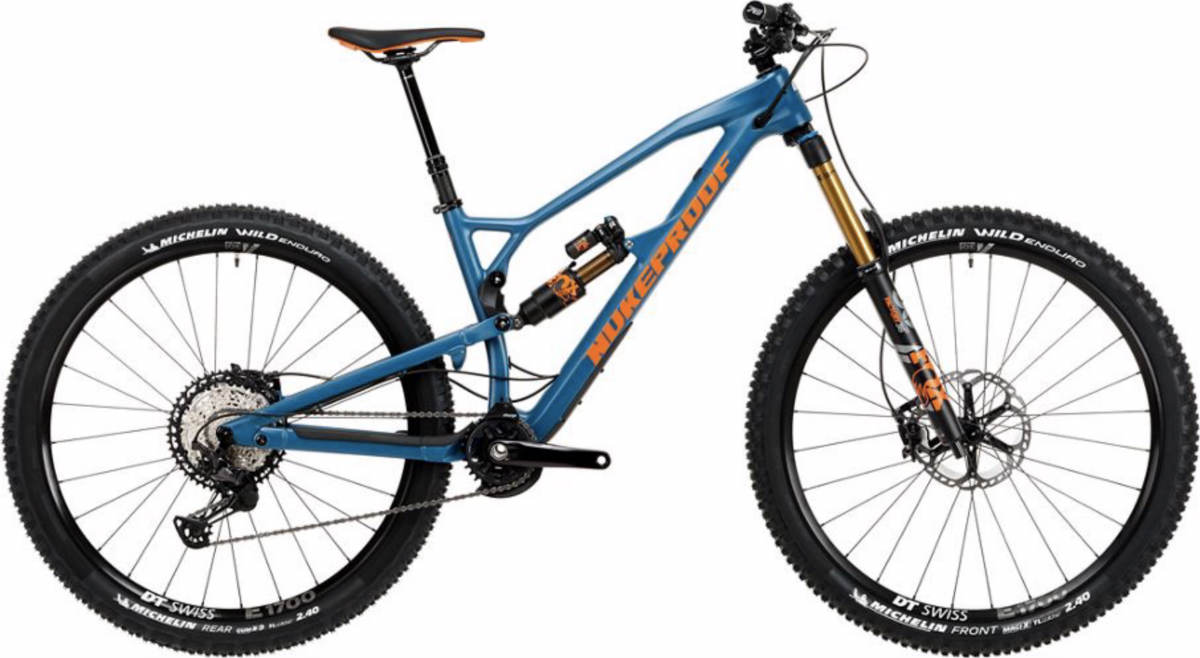
- Shock: Fox Float X2, Factory Series, Kashima, 2 Position lever, Custom CL tune, 230×62.5mm, Bearing End (We recommend most riders use 0/1 spacers but the shock comes with 2 fitted, so you have an extra if needed.)
- Front Wheel: DT Swiss E1700 SPLINE 30,29″, Centrelock, 110x15mm
- Rear Wheel: DT Swiss E1700 SPLINE 30, 29″, Centrelock, Shimano Microspline Driver, 148x12mm
- Crankset: Shimano XT M8100 12-Speed, Hollowtech 2, 170mm, 30T, 52mm Chainline
Nukeproof Mega 275 RS
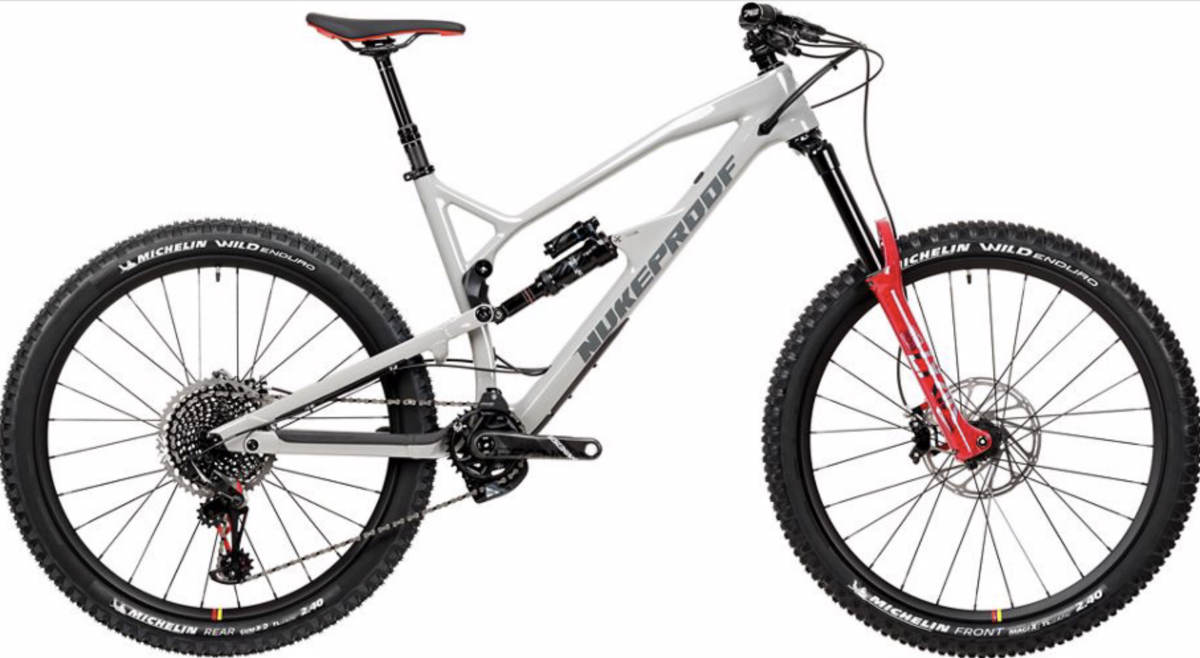
- Fork: RockShox Lyrik Ultimate Charger 2 RC2 180mm, 46mm Offset, BOOST, Debonair, Gloss Red
- Shock: RockShox Super Deluxe Ultimate RCT, Custom ML 380 tune, 230x65mm, Bearing End (We recommend most riders use 1x bottomless token but the shock comes with 2 tokens fitted, so you have an extra if needed.)
- Front Wheel: Mavic Deemax DH, 27.5″, 6 Bolt, 110x15mm
- Rear Wheel: Mavic Deemax DH, 27.5″, 6 Bolt, XD Driver, 148x12mm
- Crankset: SRAM Descendant Carbon Eagle 12-Speed, 170mm, 32T, B148, DUB
- Shifter: SRAM X01 Eagle 12-Speed, Red
- Rear Derailleur: SRAM X01 Eagle 12-Speed, Red
- Cassette: SRAM X01 Eagle 12-Speed, CS PG1295 EAGLE 10-50T
- Chain Guide: MRP 1x SXg, 30-34T, ISCG-05
- Brakes: SRAM Code RSC
- Handlebars: Nukeproof Horizon Carbon 25mm Rise, Width – S780mm, M780mm, ML780mm, L800mm, XL800mm)
- Saddle: Nukeproof Horizon SL, Red
- Seatpost: RockShox Reverb Stealth with 1x Remote, 31.6mm; S: 346mm length, 125mm drop; M: 409mm length, 150mm drop; ML: 409mm length, 150mm drop; L: 462mm length, 175mm drop; XL: 514.5mm length, 200mm drop
Nukeproof Mega 290 RS
- Fork: RockShox Lyrik Ultimate Charger 2 RC2 180mm, 42mm Offset, BOOST, Debonair, Gloss Red
- Shock: RockShox Super Deluxe Ultimate RCT, Custom ML 380 tune, 230×62.5mm, Bearing End (We recommend most riders use 1x bottomless token but the shock comes with 2 tokens fitted, so you have an extra if needed.)
- Front Wheel: Mavic Deemax DH, 29″, 6 Bolt, 110x15mm
- Rear Wheel: Mavic Deemax DH, 29″, 6 Bolt, XD Driver, 148x12mm
- Crankset: SRAM Descendant Carbon Eagle 12-Speed, 170mm, 30T, B148, DUB
- Rear Deraileur: SRAM X01 Eagle 12-Speed, Red
What do you think?
The rumours that I heard were reasonably accurate. We now have a new size and tweaked geometry for the new bikes. But no news of being able to have different wheel sizes. This may be a modification that you can do yourself, depending on the suspension setup.
Will you be buying a 2020 Nukeproof Mega? If you need a long travel mountain bike that can take on pretty much anything you can throw at it, the 2020 Nukeproof Mega is definitely worth your consideration. If you are just riding trails, you may want tocheck out the Nukeproof reactor . This has much less travel, but has a more nimble feel and is perfect for trail centres.
Please leave you thoughts and questions in the comments section below.
- ← 2020 Santa Cruz Tallboy: Everything you need to know
- 2020 Vitus Escarpe: Everything you need to know →
You May Also Like
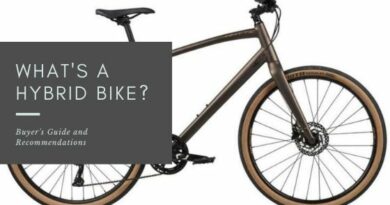
What’s A Hybrid Bike?
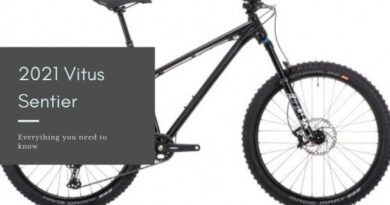
2021 Vitus Sentier
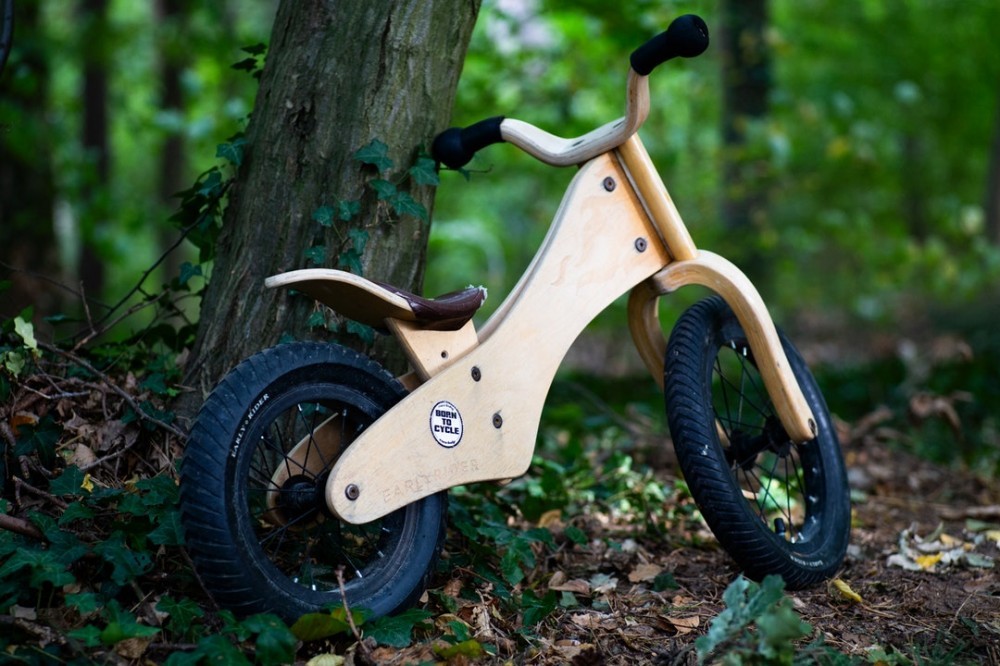
Kids Balance Bikes: Get them off to a good start
11 thoughts on “ 2020 nukeproof mega: everything you need to know ”.
Having a good bike lately since there are lots of brands coming up with some that are not as good you expected is quite rare. I once got a mountain bike with a really bad shock absorber and that day I almost broke my spine, lol. The qualities of these bikes are really great and the Nukeproof Mega 290 Comp Alloy is one I’m drawn to the most. Thanks for sharing.
Thanks for your comment. Mountain bikes are becoming more and more capable now the 290 Comp Alloy is a great bike.
I find it amazing that seemingly small changes can make such huge differences in these bikes. For example, the increase in wheel size increasing speed and the ability to roll over bumps. This article is chock full of helpful information so that the discerning mountain biker can make an informed decision. Frankly, all of these look kick-butt awesome!
Hi Feochadan,
Thanks for your comment. The wheel size thing has been big news for the last couple of years. I think it is amazing that just a couple of degrees of head angle can change how stable a bike is.
Dang!! I’m all about that 2020 Nuke Elite. That thing is one he** of a mean racing machine. I’ve seen some videos of it on Youtube and I’d love to get one.
I’m probably gonna be in the market for one of these coming December. Looks like I’ll be giving myself a nice Christmas present this year!!! I’m moving to Colorado at the end of this month, and a new racing bike would be perfect for the outdoors tracks they have!! 😀
Thanks for the awesome post. It’s always nice to brush up on those specs. Just more motivation for me to actually pull the trigger and make the purchase!! I think i deserve it ;D
~Koda
You need to do this! You will love it.
Wow another great bike in the Nukeproof Mega! The tires on this bike look pretty outstanding and that they are 29″ is a definite bonus. I do see that the seat post angle has been steepened in the 290 C, and this will allow for an adjustment to the wheel size for sure. Another bike that strikes my fancy is the Nukeproof Mega 290 Alloy. This bike has a great look and some solid features, all at a fair price for such quality. These are some tough and exceptional choices. I’ve bookmarked your page for when it’s soon time for a new bike, thanks for another great post!
Hi Pentrental,
Thanks for your comment, it is good to see people returning to the site to see the bikes. Nukeproof bikes are pretty good value for money. I hope they maintain this and are not tempted to put the prices up on the back of their success.
Pingback: What is the best Mountain Bike to buy? 6 of the best -
Pingback: 2020 Vitus E Sommet VR: Everything you need to know -
Pingback: Best 2020 Mountain Bikes: What you need to know -
Leave a Reply Cancel reply
Your email address will not be published. Required fields are marked *
This site uses Akismet to reduce spam. Learn how your comment data is processed .

Nukeproof Giga Vs Mega Comparison 21
We pit the nukeproof mega 290 against the giga 275 to see which one our vital testers prefer..
In the not-so-distant past, riding a six- or seven-inch travel mountain bike meant you were taking a truck or lift to the top of the hill — or you were that lonely freerider damned to a life of pedaling your 41-pound bike up the nearest logging road.
This helps explain why the almost-a-DH-bike category languished for a few years, trapped between its huck-tastic past and its Enduro World Series future. But in the past few years, heavy hitting bikes have struck back, led by models like the Santa Cruz Megatower, the Specialized Enduro and the Canyon Torque. The segment remains a niche of the overall enduro market — not everyone’s local trails require nearly seven inches of wheel travel, after all — but the options are still abundant in the “hard enduro” grouping.

To wit: The Nukeproof line today features multiple flavors in the category, including the two bikes in this comparison: the Giga 275 Factory , a 180mm-travel 27.5-wheeled machine, and the Mega 290 RS , a 170mm front- and 160mm rear-travel 29er.
How do you make sense of two machines that target the same narrow category with distinctly different formulas? Well, it has a lot to do with what you value in your rides, and maybe a little bit to do with how you perceive yourself. Let us explain.

What’s new?
Before we tell you which bike is for you, here’s a bit on the latest evolutions of these two machines.
The Mega has been a staple of the Nukeproof line for years now, and the Mega 290 is the marquee’s flagship enduro race bike. How do we know that? Because Sam Hill races it. There is also the Mega 275 in Nukeproof’s line — more on that bike later — and this 27.5-inch wheeled machine used to be Nukeproof’s flagship race bike before Sam parked it for the 290.

The 2021 Mega 290 received a significant redesign. It is predictably a touch slacker and roomier than its predecessor in places, with a 63.5-degree head angle and 475mm reach on our large test bike. (The 2020 model had a 64.5-degree head angle and 470mm reach.) The effective seat tube angle was also steepened for 2021 by 1.25 degrees, bringing it to a very contemporary 78 degrees on our size large.
While the suspension design bears similarities to the Mega before it, some tidying in the front triangle allowed Nukeproof to fit a water-bottle mount inside of it — something the previous Mega lacked. It also received the full-carbon treatment via a carbon rear triangle. Previous Megas ran an aluminum rear triangle.

The Giga 275 is an all-new model for Nukeproof, and the big news is that the familiar suspension design of the Giga has been replaced with a design that removes the pivot nearest the rear axle and replaces it with an additional pivot in the shock linkage. The design is similar to that of Nukeproof’s Dissent DH bike. Elsewhere it mirrors much of the Mega 290’s geometry (63.5-degree head angle, 78-degree effective seat tube angle), though it does add 5mm to reach (480mm).
The Giga also comes with a flip chip in the main pivot that allows you to choose between two geometry modes, and an eccentric axle system that allows you to alter the rear suspension’s progressiveness. To keep things simple, we tested the bike in the stock settings.
Perhaps inspired by their ability to fit a water bottle in the Mega frame, Nukeproof practically designed the Giga’s frame around its water bottle mount. The downtube of the frame cradles your bottle as a mother would her child, and comes complete with a carbon-fiber, side-access bottle cage.
And yes, there is a Giga 290, too. It gives up 10mm of suspension travel in exchange for its 29-inch wheels.

Nukeproof’s builds tend to offer excellent value, and these bikes are no exception. Though each model represents the higher end of Nukeproof’s pricing model — the Mega retails for $5,999.99 and the Giga checks in at $5,499.99 — the builds you get here would cost a lot more with a boutique frame attached to them.

That’s not to say the builds are similar: The Mega comes with a complete SRAM X01 Eagle build, including a RockShox ZEB Ultimate fork, a Super Deluxe Ultimate rear shock and SRAM Code RSC brakes. The Giga comes with FOX suspension, specifically a 38 Float Factory fork and Float X2 Factory shock, and a Shimano XT drivetrain and brakes.

Other differences include the wheelsets, with the Mega rolling on a special Sam Hill-edition Mavic Deemax Pro wheelset, while the Giga uses DT Swiss E1700 wheels. The seatposts also differ, as the Mega sticks with SRAM and its Reverb Stealth (175mm drop on the large frame), and our large Giga comes with a BikeYoke dropper that moves 185mm. Both bikes come with Michelin 2.4 Wild Enduro rubber front and rear.

Build Process and Initial Impressions
Assembling a Nukeproof from its shipping box is a simple affair: If you can attach a set of handlebars and a set of wheels to your bike, you should be ready to ride within 20 minutes of the DHL driver dropping the box from Glasgow on your doorstep.
In person, both the Mega and Giga are beautifully built machines. Thoughtful touches like robust chain-slap guards, extensive clear frame protection and torque specifications printed directly on the pivots add to the elegance.
There was at least one out-of-the-box bug on these builds, however: The front XT brake on the Giga began exhibiting a spongy feel during its first two rides, and a closer inspection revealed a small amount of fluid leaking from the junction between the line and the lever body. A quick tightening of the nut (which was indeed slightly loose) and a bleed remedied the problem.

Another possible build flaw appeared on the Mega early in the test when its Reverb seatpost stopped moving, and in one instance left me descending a tricky section of trail with my seat much too close for comfort. This was the second time the Reverb had failed in Vital’s time with it, and the remote bleed applied to fix the first failure was no match for this particular Reverb’s shortcomings.
But this seemed less an indictment of the Nukeproof build process than of this particular post itself. It was subsequently retired, and SRAM supplied us with a warranty Reverb to complete the test, just as they would with any customer.

Ride impressions: Strengths
Enough about the parts. How do these bikes behave on the trail?
To begin, these are both excellent bicycles for their intended purpose. I rode these throughout the winter in the Sierra Nevada foothills and found them to be absolutely stellar machines relative to the formidable competition in this category. I struggled to find their limits on the steep, loose DH shuttles in our area, but also found them well-behaved enough for routes with considerable climbing and mellower descents.

Based on pricing alone, it would be easy to be tricked into thinking that Nukeproof is a “value” brand whose frames lack the performance and refinement of the brands favored by dentists. Don’t believe it. The Enduro World Series results of the Nukeproof race team speak for themselves, and these bikes deliver on their race pedigree when you swing a leg over them.
Here are some of the positive traits these bikes share:
Geometry. Both bikes do an excellent job of embracing modern geometry (slack head angles, steep seat tube angles, generous amounts of reach) without crossing ever over into the “experimental” category and its inevitable compromises. Consequently, the handling here is crisp and predictable from the first run. If you’re looking for something akin to a van, look elsewhere.
Ergonomics. The bars and seat on both bikes are Nukeproof-branded — something spec snobs sometimes frown upon. It doesn’t matter; they all felt comfortable to me from the start.

Suspension. Nukeproof has clearly invested in recent years in matching its suspension design to the valving on the shocks it specs, and it shows. The rear wheel tracks the ground very well on both bikes, and I couldn’t find fault with either the RockShox ZEB or the FOX 38 forks. Even some wild twisting of the dials on these components (don’t ask how it happened) wasn’t enough to truly upset either bike.

Tires. The Michelin Wild Enduro tires worked just fine on the hard-over-loose dirt in this test. I did, however, find myself checking PSI before every ride, as pressures below 26 PSI seemed to invite some instability under hard cornering.

Drivetrains. It doesn’t matter whether you like Coke or Pepsi, Apple or Android. The SRAM X01 Eagle and Shimano XT drivetrains are workhorses that you don’t need to think about, lest you’re looking for a fight with a brand loyalist from the other side.
Climbing ability. This category came to a draw in the end — both bikes climb well for the category — but it’s worth noting that the Giga scored points for its virtually nonexistent suspension movement on smooth climbs, which helped close the gap to the Mega when the terrain became rolling. The Mega climbs well too, and its 29-inch wheels preserve precious forward momentum in lots of climbing situations, but the FOX shock on the Giga seemed to provide a slightly firmer platform for pedaling relative to the Mega’s Super Deluxe.
Overall build thoughtfulness. Outside of a couple parts noted below, it’s hard to fault the builds on these bikes, and it’s very hard to fault them at these price points. It’s pretty clear that the people who spec these bikes have put in some hours in the saddle.

Ride impressions: Weaknesses
The annoyances we suffered while riding these bikes were few and far between overall. But here are some shortcomings that were specific to one of the bikes:
RockShox Reverb seatpost (Mega) . No one likes dropper post failures, and the two failures we suffered within months on the Mega is unacceptable considering the number of trouble-free dropper posts available today. In contrast, the Giga’s BikeYoke post didn’t miss a beat in this test.
SRAM Code RSC brakes (Mega) . It’s not truly fair to put these brakes on the weaknesses list, as they performed fine during the test. But it’s hard not to notice their lack of power relative to the XTs on the Mega, particularly when you need to stop in a hurry.
Rear hub weirdness (Giga) . This happened only on the last test ride, but the DT Swiss rear hub exhibited some odd behavior under hard pedaling that was difficult to replicate, but a little unsettling regardless. We aren’t convinced we’ve seen the last of it. The wheelset performed well otherwise, but the Mega’s Mavic set-up was completely trouble-free.

Suspension noise while climbing (Giga). Yes, the FOX shock did its core job (soaking up bumps) pretty flawlessly in this test. But when climbing it also sometimes made an odd squishing/sucking sound that was hard to pinpoint and slightly irritating.
A lack of playfulness (Mega) . While the Giga responds well to requests for pop, especially considering how much travel it has on tap, the Mega’s nature is slightly more akin to that of a hunting dog: It has a job to do, and that job is aided by keeping its nose to the ground. Sure, it will loft just fine if you ask nicely, but it doesn’t spring from the earth as other bikes will, including the Giga. This trait was particularly noticeable on flatter descents, which is where playfulness can come in handy to prevent boredom.
In terms of shared shortcomings, I had to be a little imaginative to come up with things here. I don’t think either of them aspires to be the lightest in category, despite their new full-carbon frames. I didn’t find their weight burdensome in any situation, but there’s no hiding the fact that there are lighter builds out there, even in this category, that will appeal to those who fetishize being first to the top.

Final thoughts/how to choose
But none of this necessarily tells you which bikes you should pick, does it? The good news here is that you can only go so wrong: When it came time to pick one of these bikes for a given ride, I was often at a loss: They both offer an incredibly composed and enjoyable ride experience, and I sometimes picked simply by choosing the bike opposite the one I’d ridden last. While the bikes do have differences, they share many strains of the same Nukeproof DNA, and it is a very good DNA.

Speaking of Nukeproof DNA, it’s worth noting here that if you own a previous generation of Mega, as I do — a 2019 Mega 275 Carbon — it is unlikely that these new Nukeproofs will render your current ride obsolete. While I liked the new angles and the increased bottle capacity the 2021s bring, the previous Megas are great bikes in their own right, and these latest models represent more in the way of refinement than revolution. Unless your current Nukeproof is truly clapped, there’s a case to be made for simply throwing a new set of rubber on it and charging into the spring.
But if you decide a new Nukeproof is for you, which bike you choose here should ultimately come down to what you value in your rides. If you want a bike that turns down the volume at speed and travels in a straight line like none other, there’s a case to be made for the Mega 290. I often found myself turning good times on segments of trail without really noticing it while on the Mega. Riding the Mega at speed is like drinking one and a half beers at a party where you don’t know anyone: You won’t be immune to discomfort, but it takes the edge off in a way that makes life more enjoyable.
In other words, you should consider a Mega if you are among any of these personas:
- Your only MTB goals are climbing atop podiums or becoming a GPS-racing legend.
- Your friends are much faster than you and you need every extra bit of security you can get to ride at their pace.
- You don’t have time for whips and schralps and you never intend to, but you still want to ride heavy terrain.
Conversely, if you find delight in scrubs, schralps and whips, but also appreciate the ability to go very fast when the situation calls for it, the Giga 275 is unlikely to let you down. I compared times between the two bikes on different segments and found the times were virtually equal in most situations. The Giga might have felt ever-so-slightly more on edge when pushing, but it was a negligible difference, one that’s probably proportionate to the percentage difference between 29 and 27.5 (5.1724%, but who’s counting).
And you should consider a Giga if you see yourself in any of these descriptions:
- You appreciate the ability to cut inside of your friends in corners at a moment’s notice.
- You wish to protest the unblinking march the mountain bike industry is making toward 29-inch wheels today.
- You enjoy fast, but it’s not the only marker of riding prowess you subscribe to.

Where the Giga shined was everywhere else. That 5% reduction in wheel size makes the Giga a joy to flip around turns, throw sideways in the air and chase sneaky, surgical lines that you might miss on the Mega 290. On certain types of tracks, those freedoms might even make you faster as well.
We know where we stand here, but it’s up to you to decide on your place. In the meantime, watch out for us on those insides.
About The Reviewer
Robert Beaupre - Age: 39 // Years Riding MTB: 12 // Height: 5'11" (1.8m) // Weight: 158 pounds (71.6kg)
Robert began riding motocross bikes when he was 5, and raced for several years as a local pro in Nevada and California. He mostly avoided mountain bikes until he was 27, because long stems and skinny tires made these machines unattractive relative to a CRF450R. He jumped on the bandwagon once these bugs were worked out, however, and later achieved modest success as a Category 1 and Vet Pro downhill racer. Today he most enjoys attempting novel lines on fast and loose Sierra Nevada trails, sneaking in moto sessions when the ground is wet and dirt jumping with his many daughters.
View replies to: Nukeproof Giga Vs Mega Comparison

Most Popular

Hello Vital MTB Visitor,
We’re conducting a survey and would appreciate your input. Your answers will help Vital and the MTB industry better understand what riders like you want. Survey results will be used to recognize top brands. Make your voice heard!
Five lucky people will be selected at random to win a Vital MTB t-shirt.
Thanks in advance,
The Vital MTB Crew
The backcountry battle axe You’ll need this where you’re going Slash is a no-holds barred enduro sled built to rip, rally, and rail through the gnarliest trails on the planet. With 170mm of front and rear travel, mixed wheel size, and new high-pivot design, Slash not only descends like a beast, but it’s also ready to billy-goat up punchy climbs with square-edge slabs that send your friends on hike-a-bike missions. Crush laps that enduro bikes of yesteryear only dreamed of. Charge through the chunder, hurtle over wheel-roasting roots, and blast through boulder fields with drops so deep you’ll question your sanity – but never your bike’s capability.
- Watch the walkthrough
2023 Pinkbike Bike of the Year
“Slash put down an impressive performance during the Enduro Field Test, with a blend of speed and stability that put it on every editor's list of favorites. It also happens to be very adaptable, and while steep, chunky terrain is certainly its forte, it's no one-trick pony.” – Mike Kazimer, Pinkbike
"One of our favorite bikes of the year."
"slaps a huge smile on your face", "one of the most impressive enduro bikes we've tested".
High pivot, high aspirations
Slash pedals better than other high-pivot bikes thanks to an idler pulley layout that's optimized for efficiency. Plus, that rearward axle path gives Slash mind-blowing traction for scrambling up tricky climbs without getting caught on roots and rough edges. You get less wasted energy and more gas left in the tank for the descents.
Upper idler
The 19-tooth upper idler pulley is bigger than most so the chain doesn't have to bend as sharply, adding efficiency and strength.
Lower idler
The lower idler pulley prevents chain growth below the chainstay and keeps that tension off the derailleur cage so you get better shifting and suspension performance.
The main ingredient in Slash's pedaling alchemy is its anti-squat curve. Anti-squat is affected by a few variables, but one of the biggest factors is main pivot position. The size and placement of the upper idler gives us another way to tune the anti-squat curve. Between the upper and lower idler layout and size, Slash delivers a super-efficient and super-consistent feeling anti-squat curve that makes this bike pedal more like the short-travel Top Fuel than the previous generation Slash.
Built burly
1. Super slack head tube
Sitting at a relaxed 63.5-degrees, Slash’s head tube keeps your front wheel far ahead for serious stability on the steepest, gnarliest trails.
2. Steep seat tube angle
Perched at 77-degrees, Slash keeps you in the perfect position for putting down power on long slogs up fire roads and punchy, slabby climbs.
3. That just-right reach
460mm of reach keeps the cockpit long and stable for control and stability through everything.
4. Size-specific chainstays
Get the same trail-taming feel no matter your height thanks to size-specific chainstays that keep handling consistent.
Adjustable leverage rate
Easily adjust suspension progression with just a flip of a chip. Ride it in the less progressive setting for a plusher feel perfect for rugged trails loaded with square-edge bumps. Flip it to more progressive when you’re riding fast, hitting big features and don’t want to bottom out — or if you want to roll with a coil shock.
Stow it, don’t show it
Stash your ride essentials with in-tube storage on all models — both carbon and alloy. Included Bontrager BITS bag keeps your odds and ends organized.
Created for customization
Want to run a longer dropper? Swap air for a coil shock? No problem. Slash has plenty of room for beefy tires, big coil shocks, and running up to a 190mm fork. Plus, it’s even equipped with accessory mounts under the top tube when your storage door is loaded and you need to haul a little more.
We spent hours analyzing high-speed camera footage to figure out just how to shape a guard to minimize chain movement, so you get a quieter, more protected ride.
Slash Gen 5
Slash Gen 5 is a long-travel 29er built for wild terrain. It packs in 160mm of rear and 170mm of front suspension, a lighter build, and traditional suspension design. 1. 160mm/170mm travel 2. 29˝ front and rear wheels 3. Traditional suspension design 4. Lighter build
Slash Gen 6
Slash Gen 6 goes even burlier with mixed wheel sizes for ultra-steep descents, longer 170mm front/rear suspension, extra adjustability features, and a high pivot suspension design. 1. 170mm/170mm travel 2. 29˝ front and 27.5˝ rear wheel 3. High pivot suspension design 4. Extra adjustability features
Chase dirt, catch air
Slash SE is a limited-run ride that’s ready to rip with a proven Slash Gen 5 frame and one-of-a-kind Earth and Air paint that gives a nod to the loam we grip and jumps we boost. Its decked out with SRAM’s GX AXS wireless transmission and RockShox Flight Attendant – the automatic suspension system that listens to your riding and responds in real-time.
- Register New User
- First Looks
- Friday Fails
- Community Blogs
- Fantasy League DH
- Places Directory
Trek Remedy vs Nukeproof mega
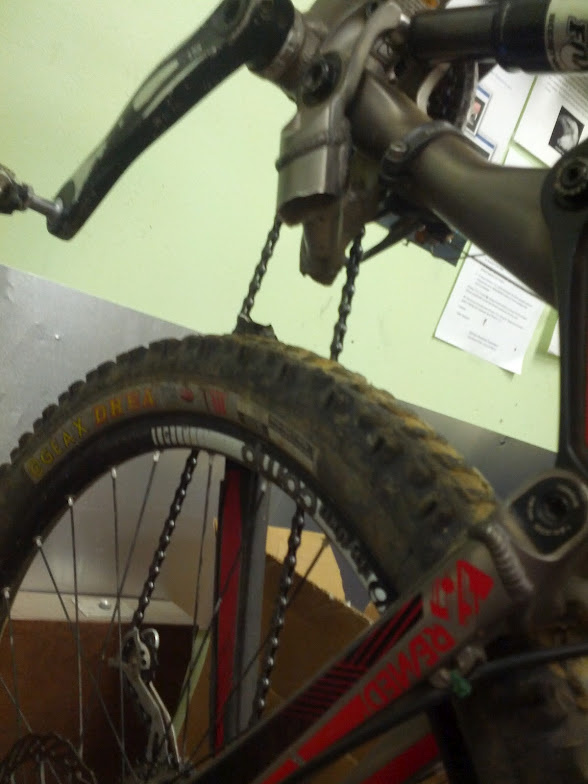
Cool Features

IMAGES
VIDEO
COMMENTS
Slash 8 2022 Trek. Slash 8 Gen 5 2023 Trek. Frame. Nukeproof Mega V4 297 Alloy, 165mm Travel, custom triple butted hydro-formed tube set, internal cable routing, ISCG 05 mount, Enduro Bearings, Threaded 73mm BB, Boost 148mm rear axle spacing, 3D contoured Rubber frame protection. BB Standard: BSA, 73mm, Threaded.
The topic 'New Bike : Trek Slash 8 v Nukeproof mega 29 Comp v Vitus Sommet 29' is closed to new replies. Overview Chat Bike Members News Women. 502 Club Raffle #3 Win A Cotic Solaris Frame ...
Nukeproof has the Zeb Select+ while the Trek just has the select. The spec sheets both claim that they have the Charger 2.1 RC damper though. On the Rockshox site, the select only has the Charger ...
Best direct-sales enduro race bike. Wheel size: 29/27.5in | Frame sizes: S, M, L, XL, XXL | Weight: 16.6kg | Suspension travel: 170mm f/170mm r | Rating: 9/10. Reasons to buy: Reasons to avoid: The Capra is the bike that really made YT a household name in mountain bike circles over a decade ago, and the latest bike just builds on that success.
Trek Slash [product-block handle="2021-trek-slash-7-m"/] ... The Nukeproof Mega is the bike ridden by downhill legend Sam Hill to three consecutive Enduro World Series Championships from 2017-2019. For two years, Hill rode and won on the 27.5" Mega 270, but the 29er version of the Mega was released in 2019, and it became the first 29er to win ...
The best enduro mountain bikes you need to look out for in 2024, including enduro MTBs from Specialized, Calibre, Whyte and Nukeproof
Trek Slash. Highs: Supple yet very lively suspension performance, quiet ride, well armoured ... Nukeproof Mega and the new Santa Cruz Nomad — we have that last one coming, so stay tuned. And with that, we're constantly reviewing bikes, and we'll be updating this feature as we come across more bikes worthy of this list. ...
My back up options are either the Trek Slash 8 or Nukeproof Mega 290 Alloy Pro. Leaning towards Trek Slash 8 of the two with all of the awards it has gotten. Thanks and let me know your thoughts
The Whyte T-160 RS v1, Trek Slash 8, and Nukeproof Mega 290 Alloy Pro are all 29″ aluminum frame full suspension enduro bikes. The T-160 RS v1 has higher gearing, the Slash 8 has better components, and the Mega 290 Alloy Pro has a better fork.
The SRAM Guide R brakes look and feel out of place on this bike, lacking the power needed to match the performance of the bike. The suspension leverage curve of the Trek Slash 8 is perfectly balanced to the bike. Not so progressive that it feels harsh at low speeds, but ramping up enough to help pop you into the air.
The Nukeproof Mega has 160mm of rear travel coupled with a 170mm fork to really party. It has seen some improvements from just last year's models that have created a wildly versatile bike. Last year's model of the Mega had a mega long chainstay at 450mm. This year, the chainstay has been shortened, but not too much, to a more manageable 440mm on the 290—which is code for having 29" wheels.
The Mega does have a 10mm taller head tube though, so if we equate for stack height, the Mega has a slightly longer reach. As you can see, we're splitting hairs, and it's the same elsewhere with the geometry. The Giga has a 3mm longer chainstay length - 445mm Vs 442mm - and the BB height is 2mm taller on the Giga, but it also has more ...
The 2020 Nukeproof Mega 275 aluminium and 275c are very similar to the 2019 bikes. But the 275 & 275c frames now come in a Medium-Large size. This is another Sam Hill influence and gives you the option of a frame with slightly longer reach and effective top tube measurement. This is so you can ensure the perfect fit for you.
@coletrane-mtb: mine has 450mm (Nukeproof Mega). In combo with the steep seat angle and 10-51 cassette, I never have to shift my weight around even on 20% loose climbs. Total game changer.
New bike day, nukeproof mega or giga? Discussion So the unspeakable happened last weekend and I broke my 22 trek slash. Time for a new frame. ... Being the second owner of the slash, trek aren't really meeting me anywhere with a deal, when I did a rear triangle on a slash last year, a seatstay, it cost me $1200au just for the seatstay, and I ...
It was time to get the Mega on trail and find out. Spoiler alert, our testers fell in love right away. In recent months, Vital tester, Kevin Lillywhite, has put the boots to the Trek Slash and Rocky Mountain Altitude Rally, in addition to his own Specialized Enduro. Every one of those bikes is a direct competitor to the Nukeproof Mega 290 RS we ...
Reviews, ratings, specifications, weight, price and more for the 2021 Trek Slash 8 Bike Skip to main content Mobile navigation ... Nema Newmen Components Nicolai Niner Niterider No Fear NOBL Nokian Norco Nordest Norrøna North Shore Billet Northwave Novatec Novik NS Nukeproof O'Neal O'Neill Oakley Obed Obtanium Ochain ODI OGIO Öhlins Ollie ...
There is also the Mega 275 in Nukeproof's line — more on that bike later — and this 27.5-inch wheeled machine used to be Nukeproof's flagship race bike before Sam parked it for the 290. The 2021 Mega 290 received a significant redesign. It is predictably a touch slacker and roomier than its predecessor in places, with a 63.5-degree head ...
Posted: Jun 12, 2012 at 23:40 Quote: I have test ridden a Remedy but not a Slash, the Trek UK Demo Series has finished, but it might be possible to get a test ride on a Mega, I'd have to ask ...
Transition vs. NUKEPROOF Enduro Bikes ... I am curious what people think of the new Transition Patrol vs Transition Sentinel vs NUKEPROOF MEGA 290 for riding places like DuPont and Pisgah in NC. ... I honestly wanted a Trek Slash but there is a 2+ year wait for one. Any advice or opinions would be extremely helpful! Locked post. New comments ...
Nukeproof vs Trek in All Mountain, Enduro & Cross-Country ... Nukeproof Mega AM 2015 with coil x fusion shock or ... 2024 Trek Slash: 3 hours ago: Raaw madonna owners:
Built burly. 1. Sitting at a relaxed 63.5-degrees, Slash's head tube keeps your front wheel far ahead for serious stability on the steepest, gnarliest trails. 2. Perched at 77-degrees, Slash keeps you in the perfect position for putting down power on long slogs up fire roads and punchy, slabby climbs. 3.
chrismac wrote: one bike has real tech in it, the other does not. if you want a truly better functioning bike, get a remedy. if youre trying to be cool, get a nukeproof. The nukeproof is more than ...